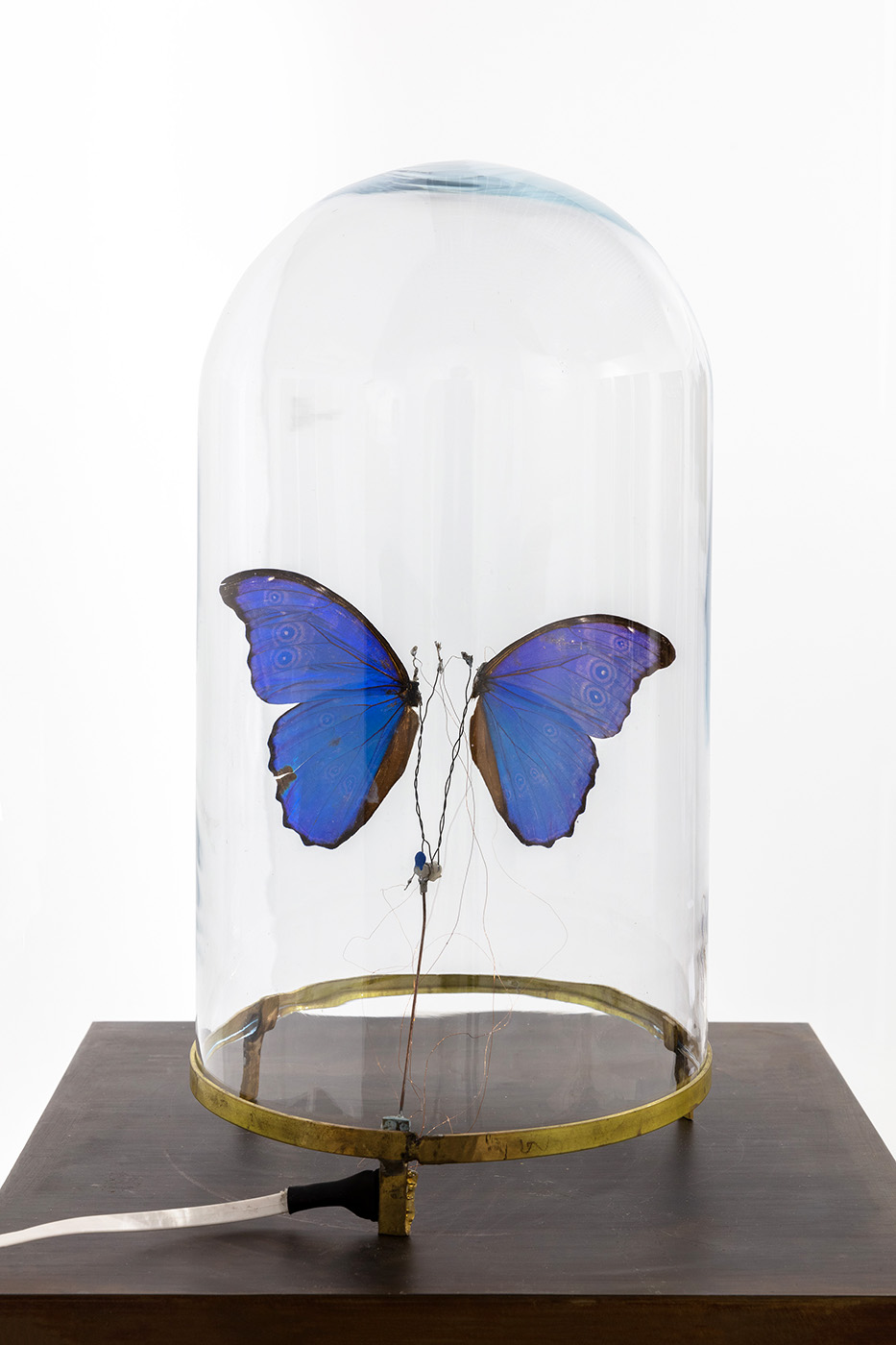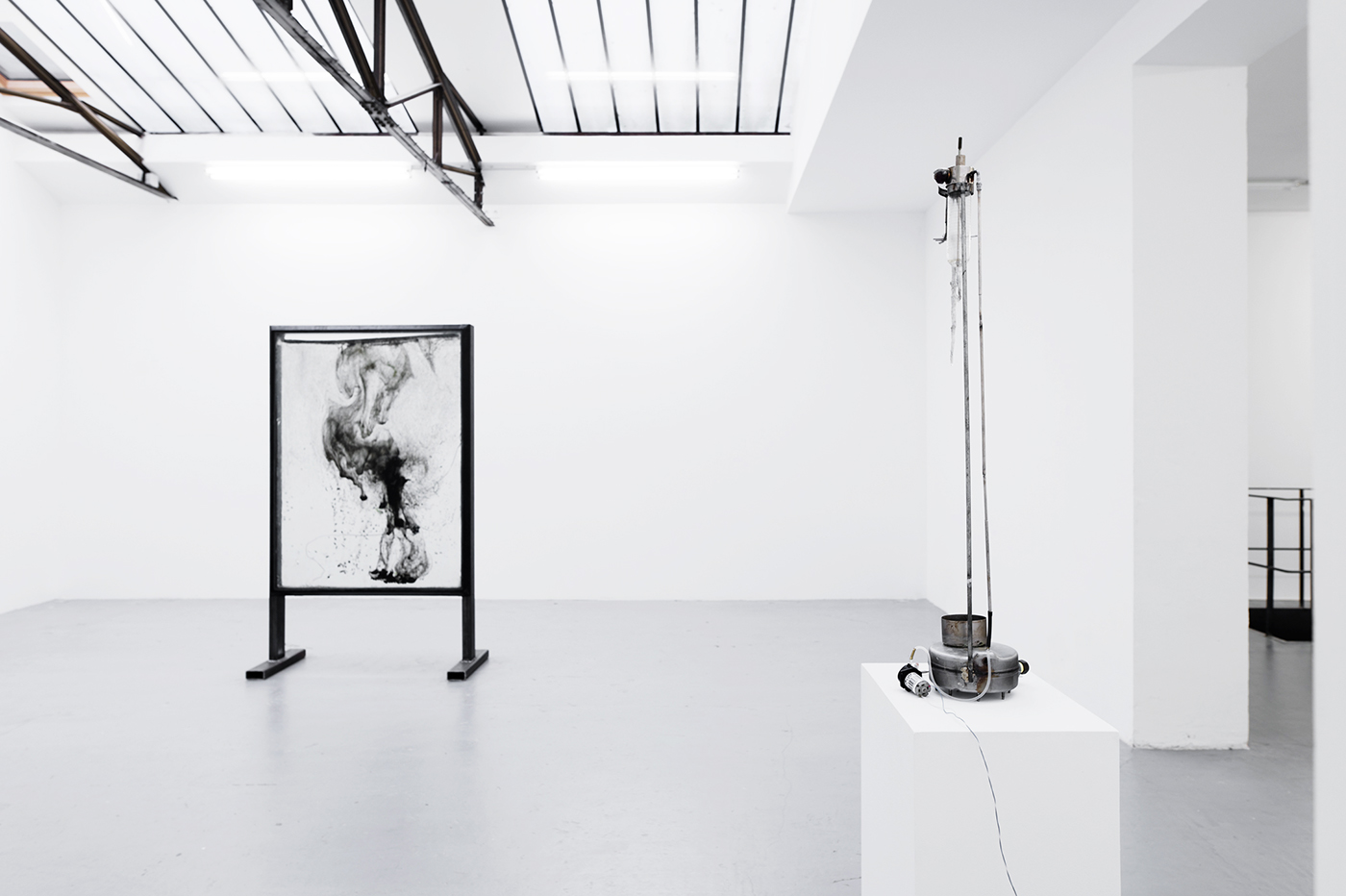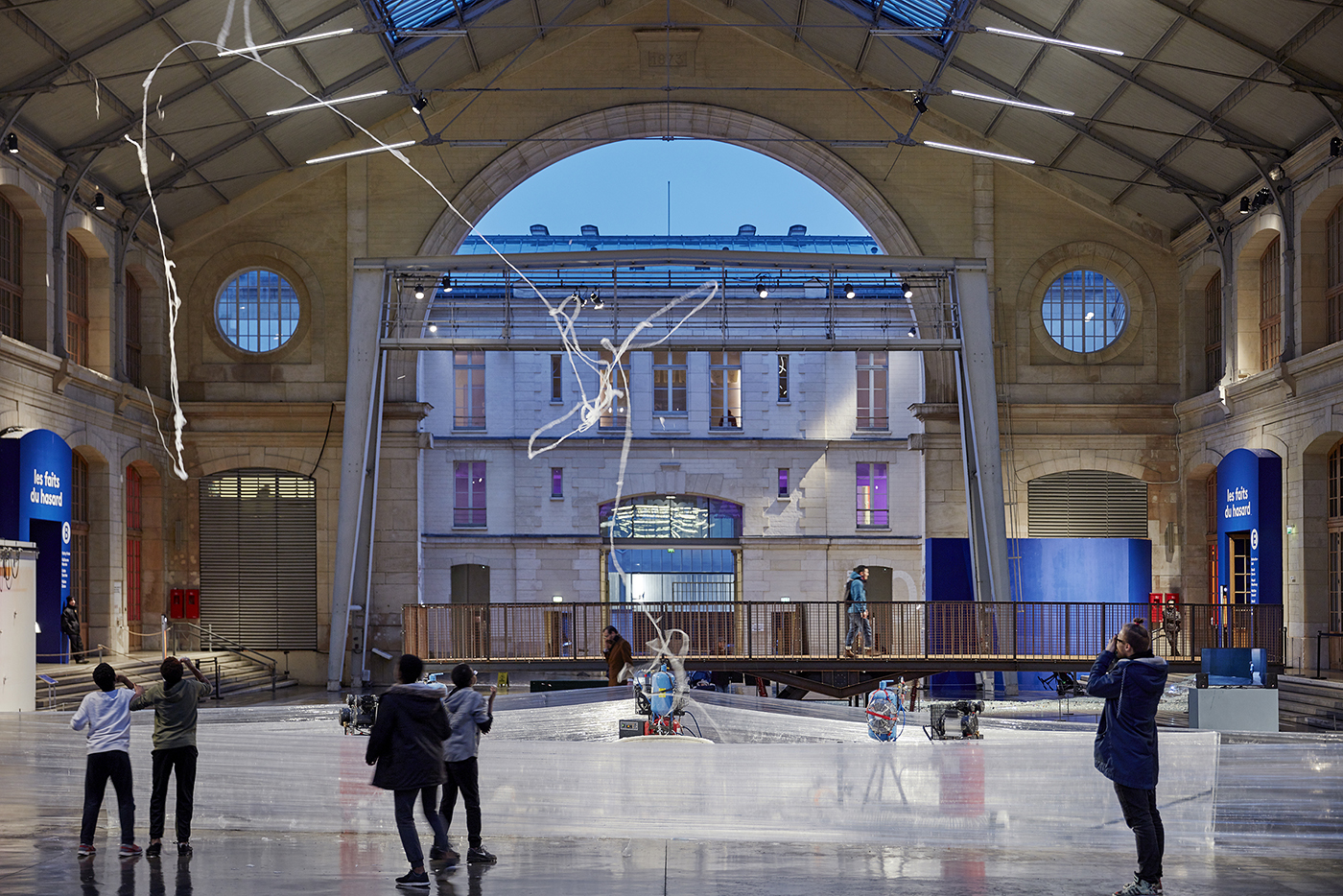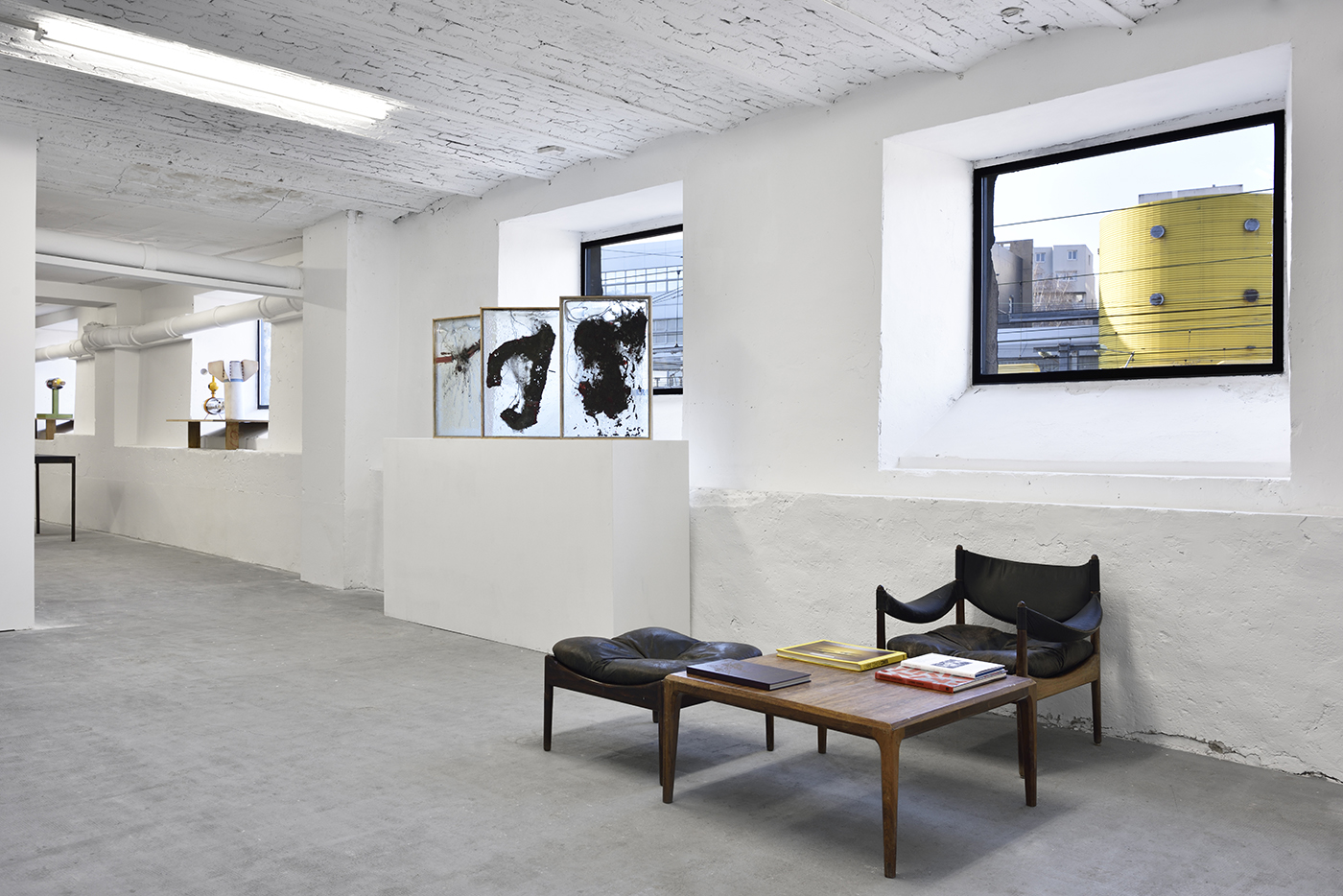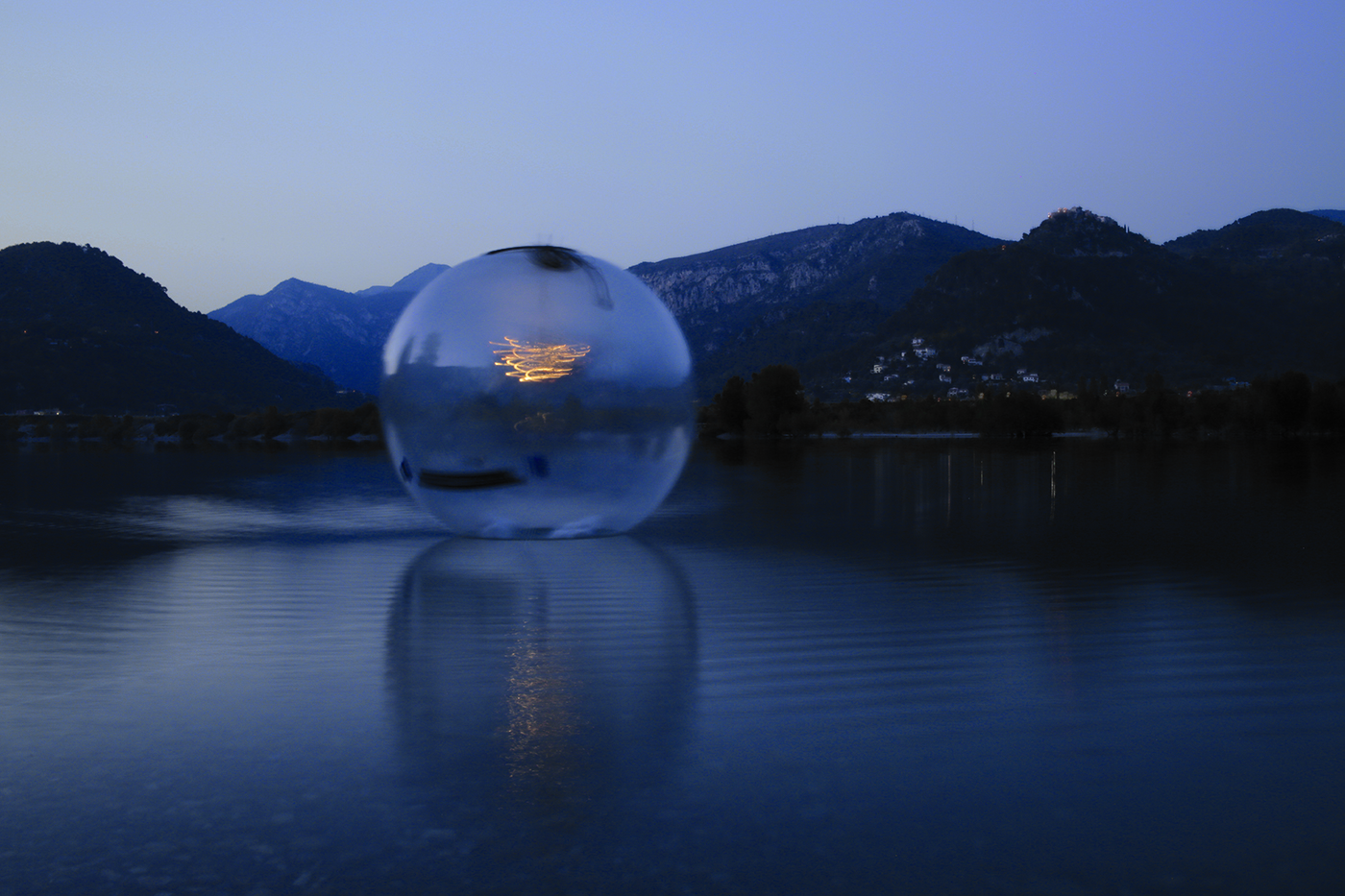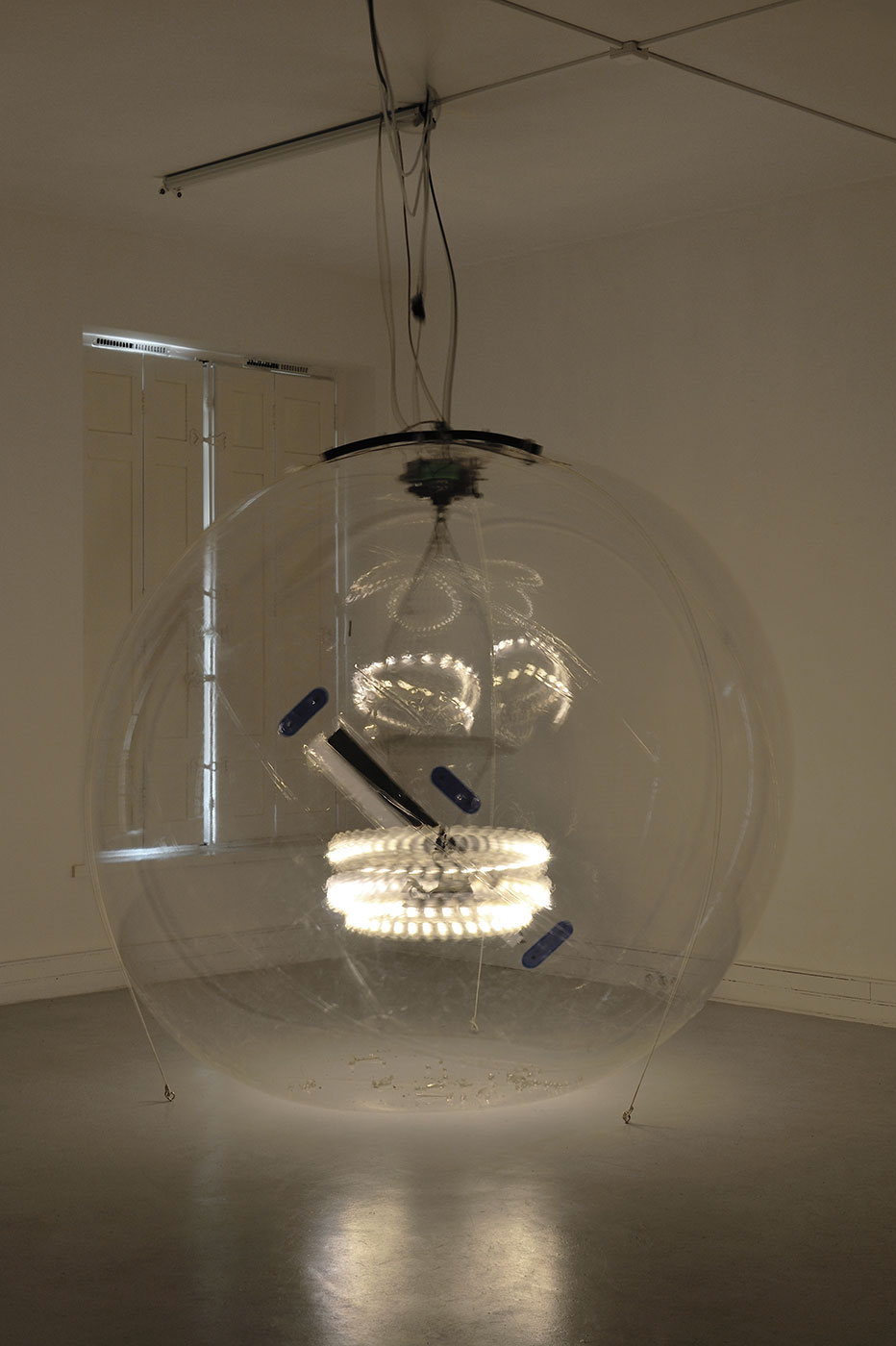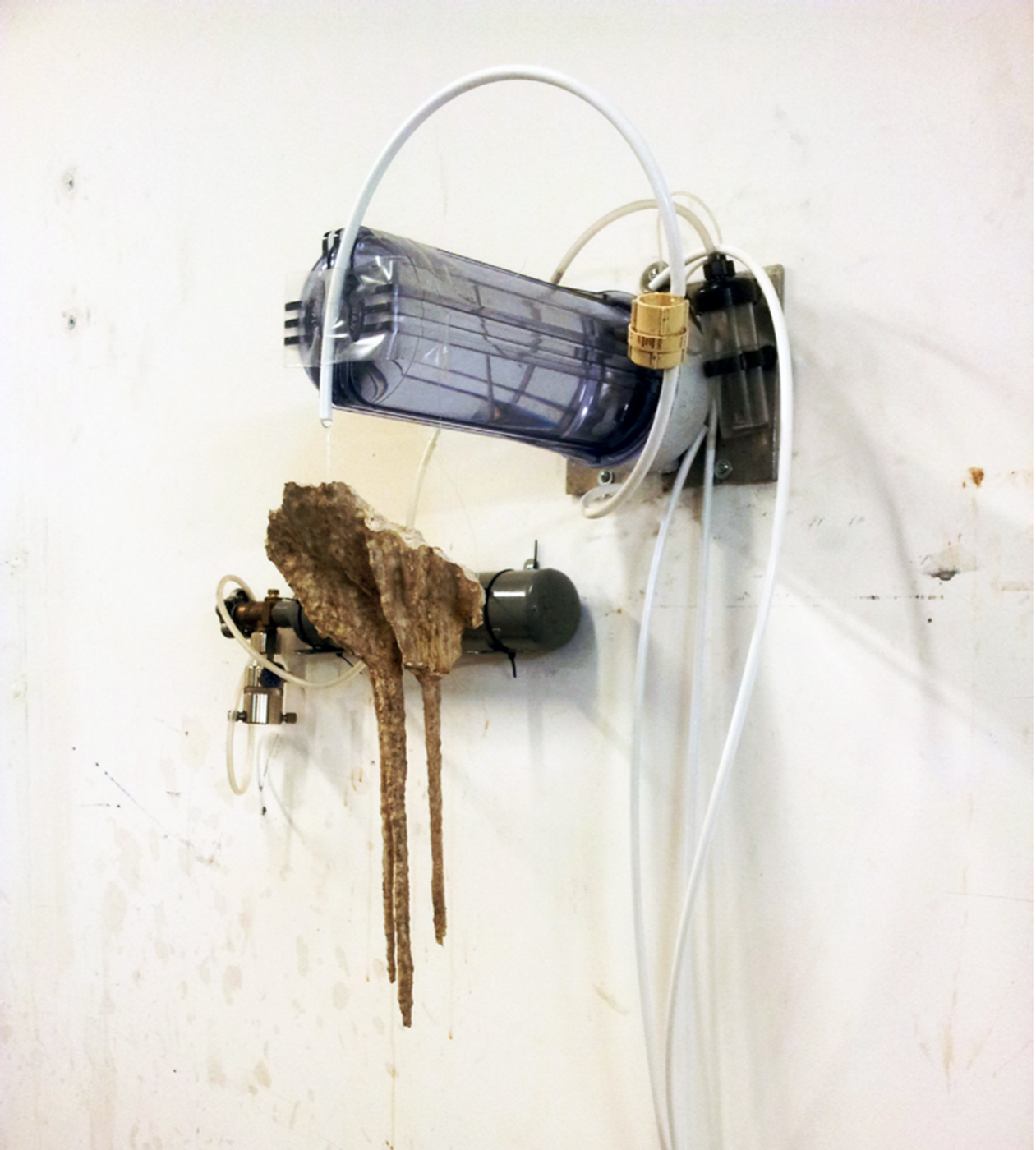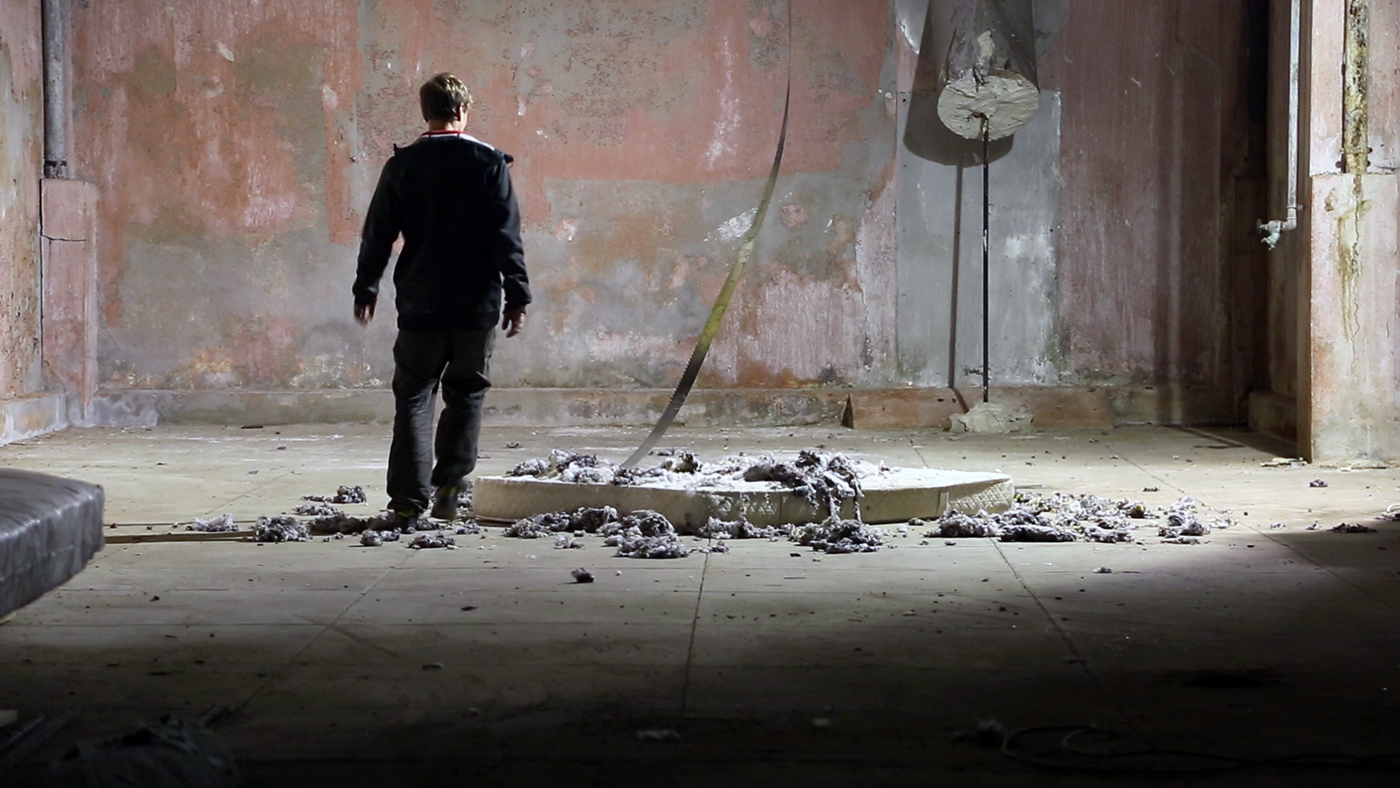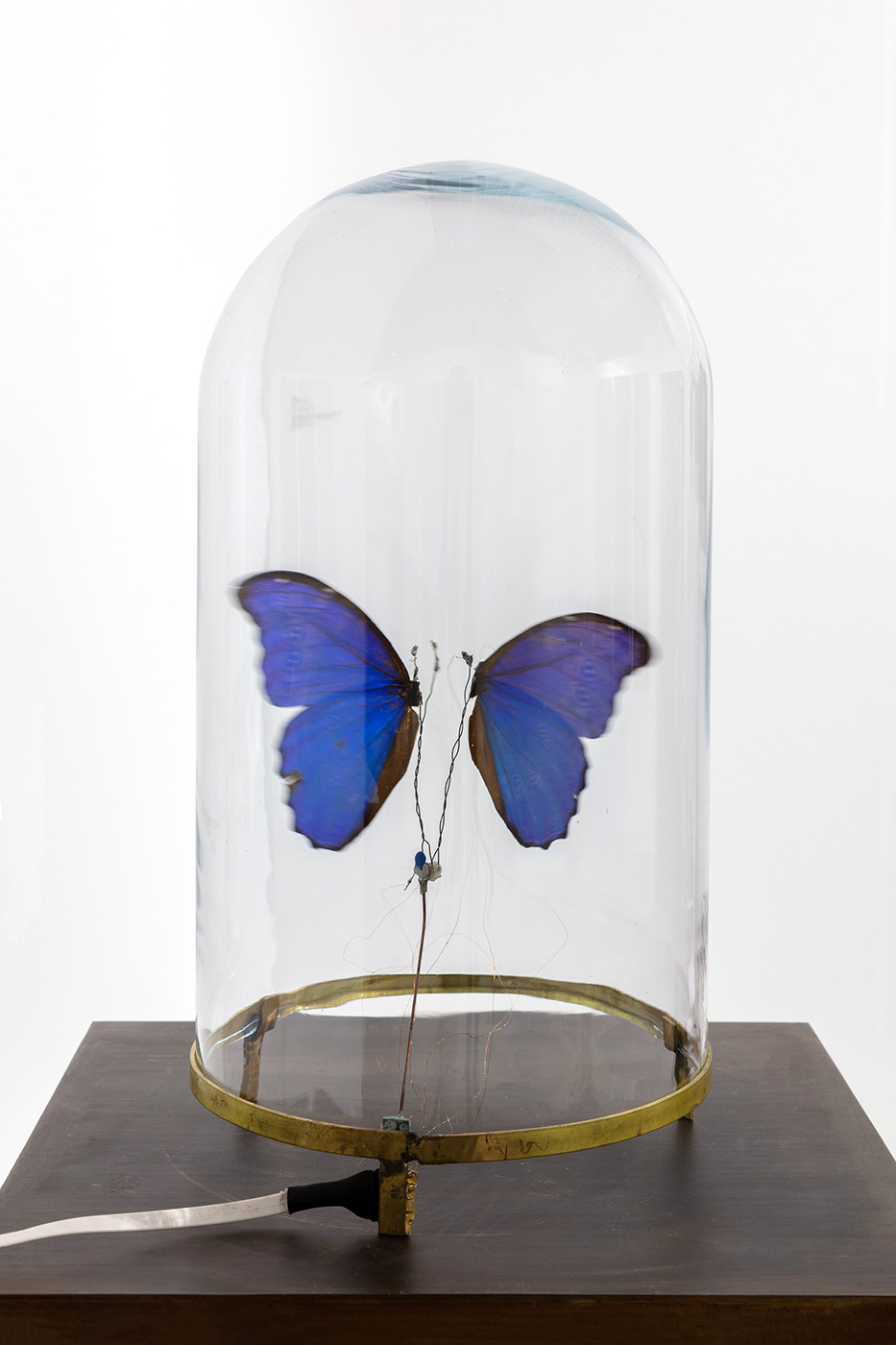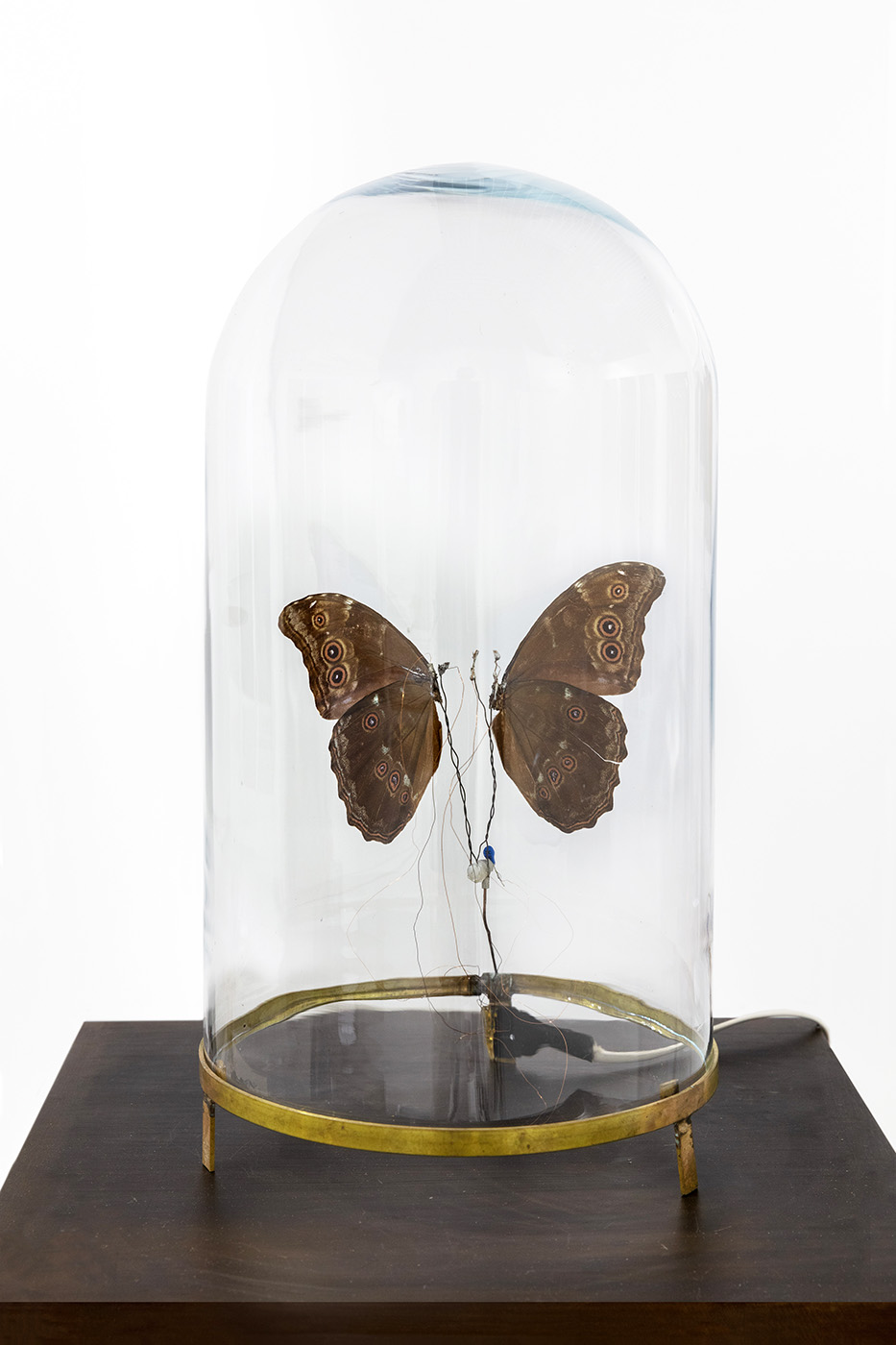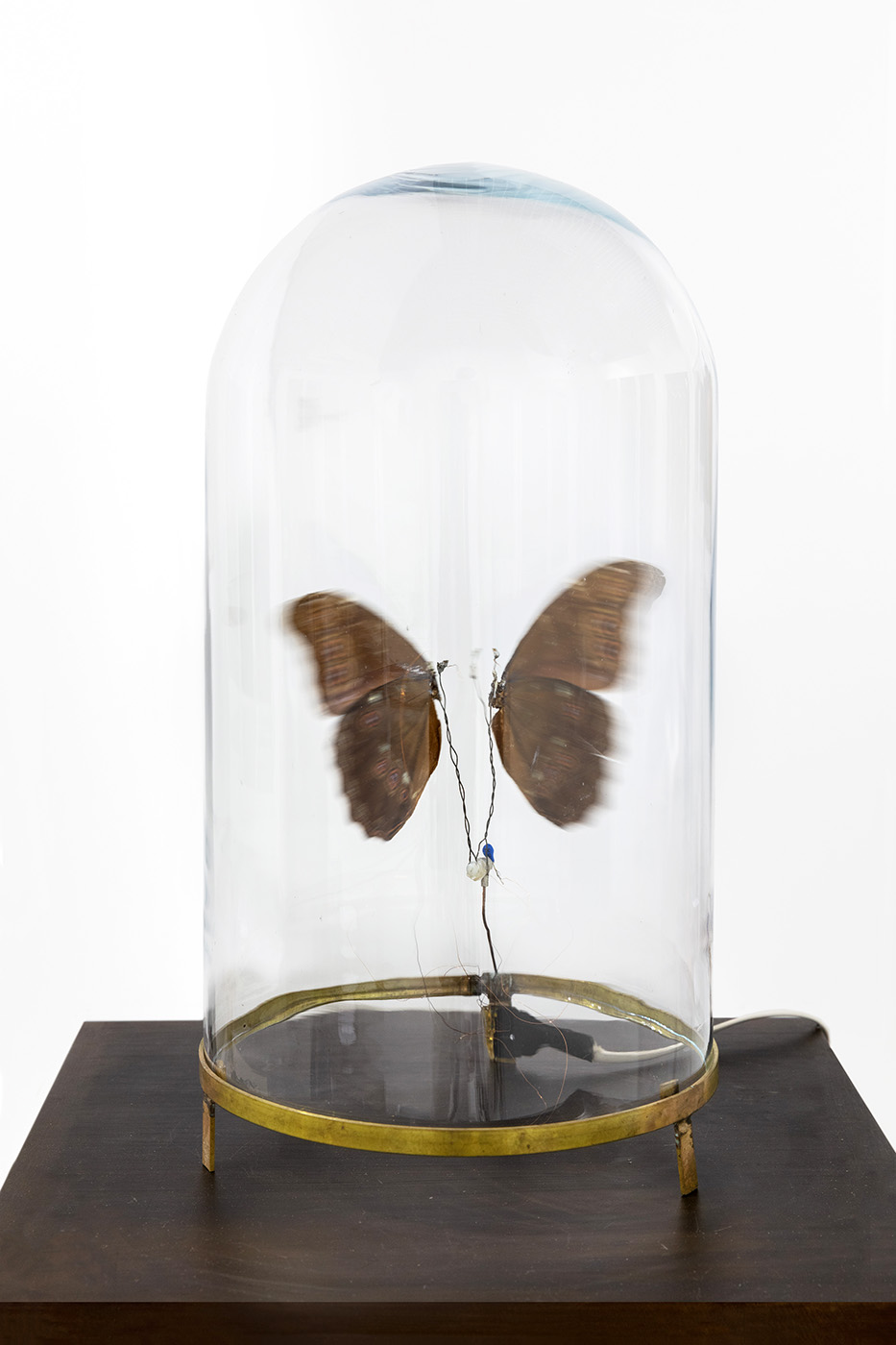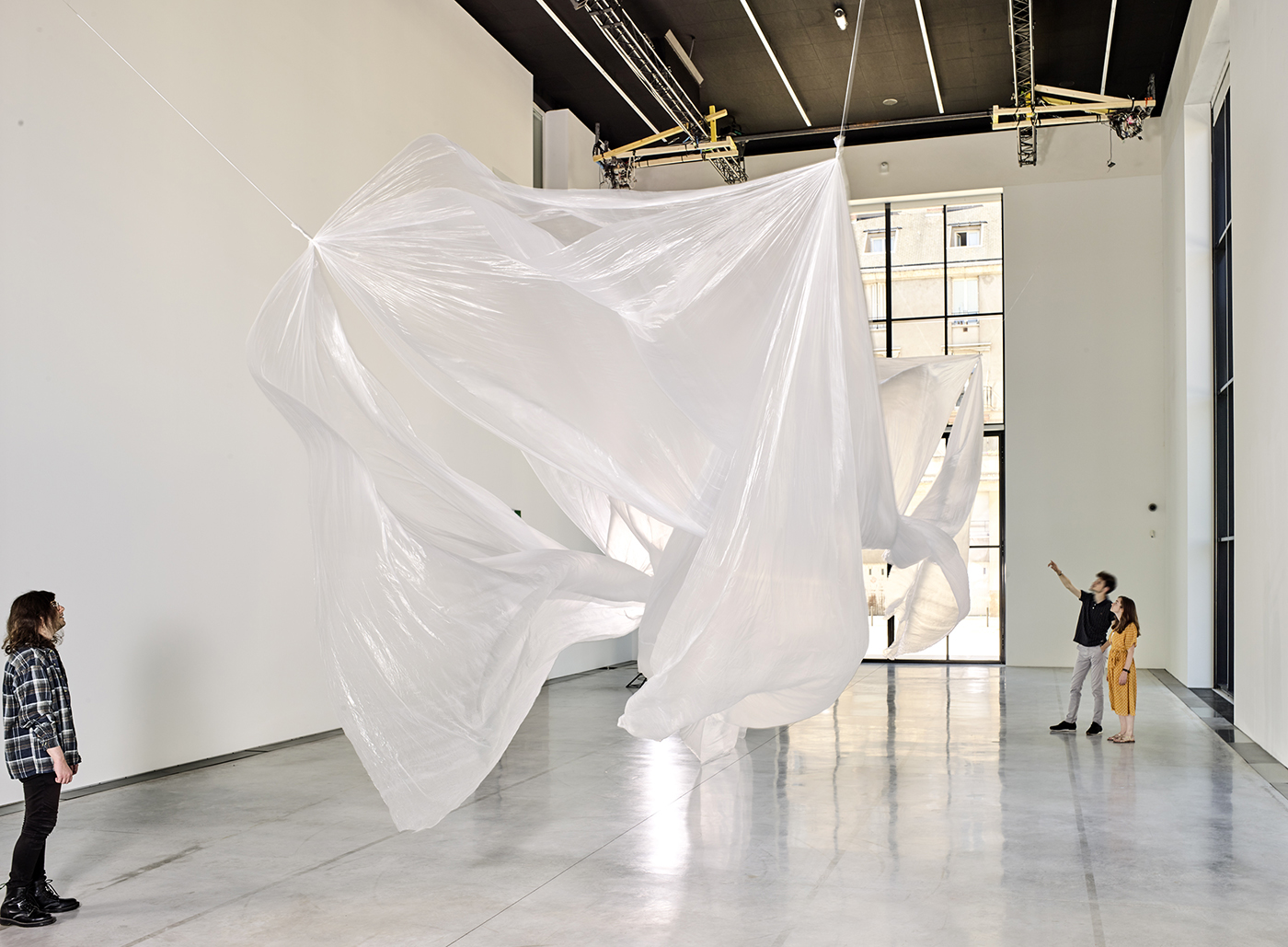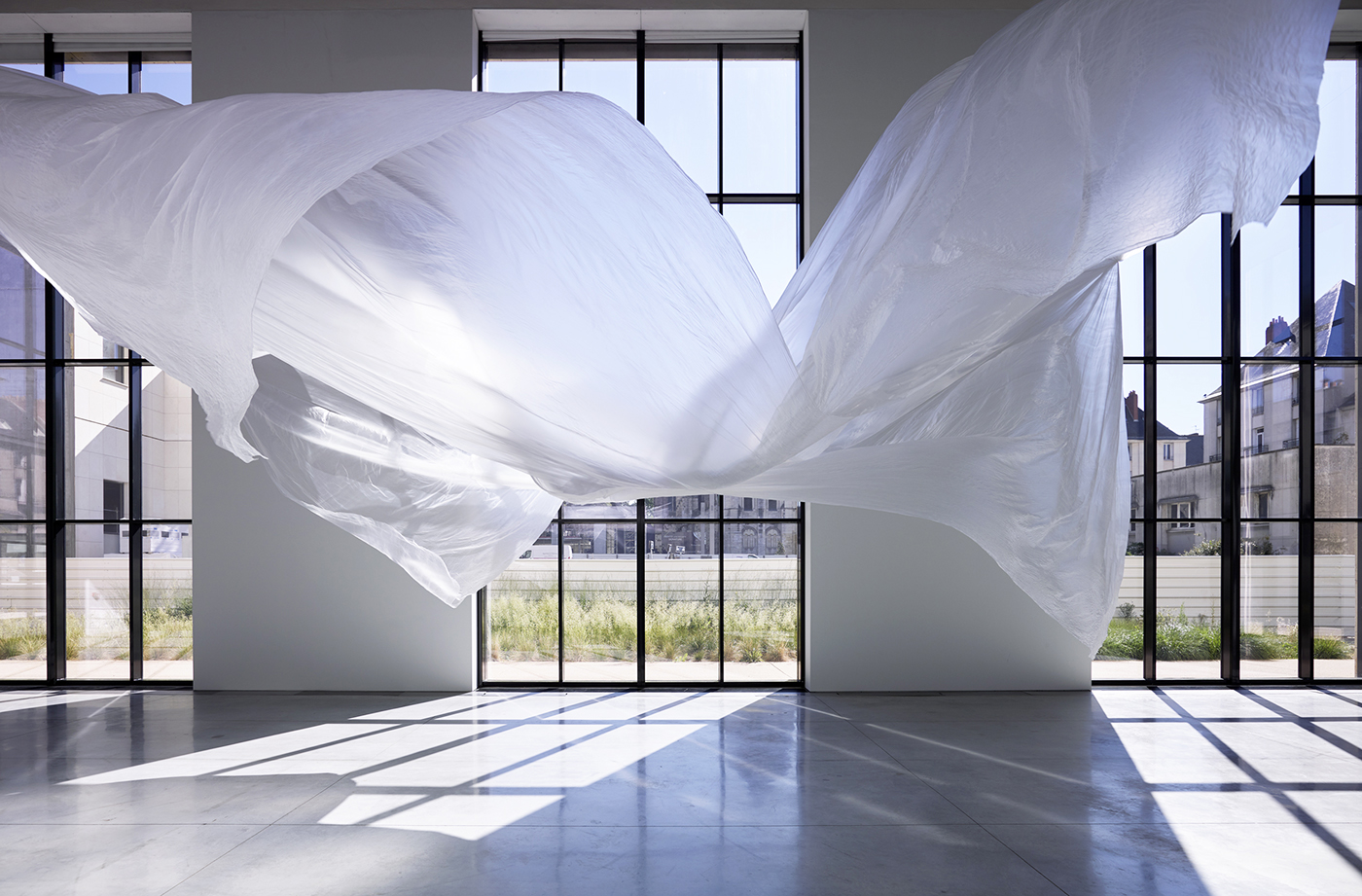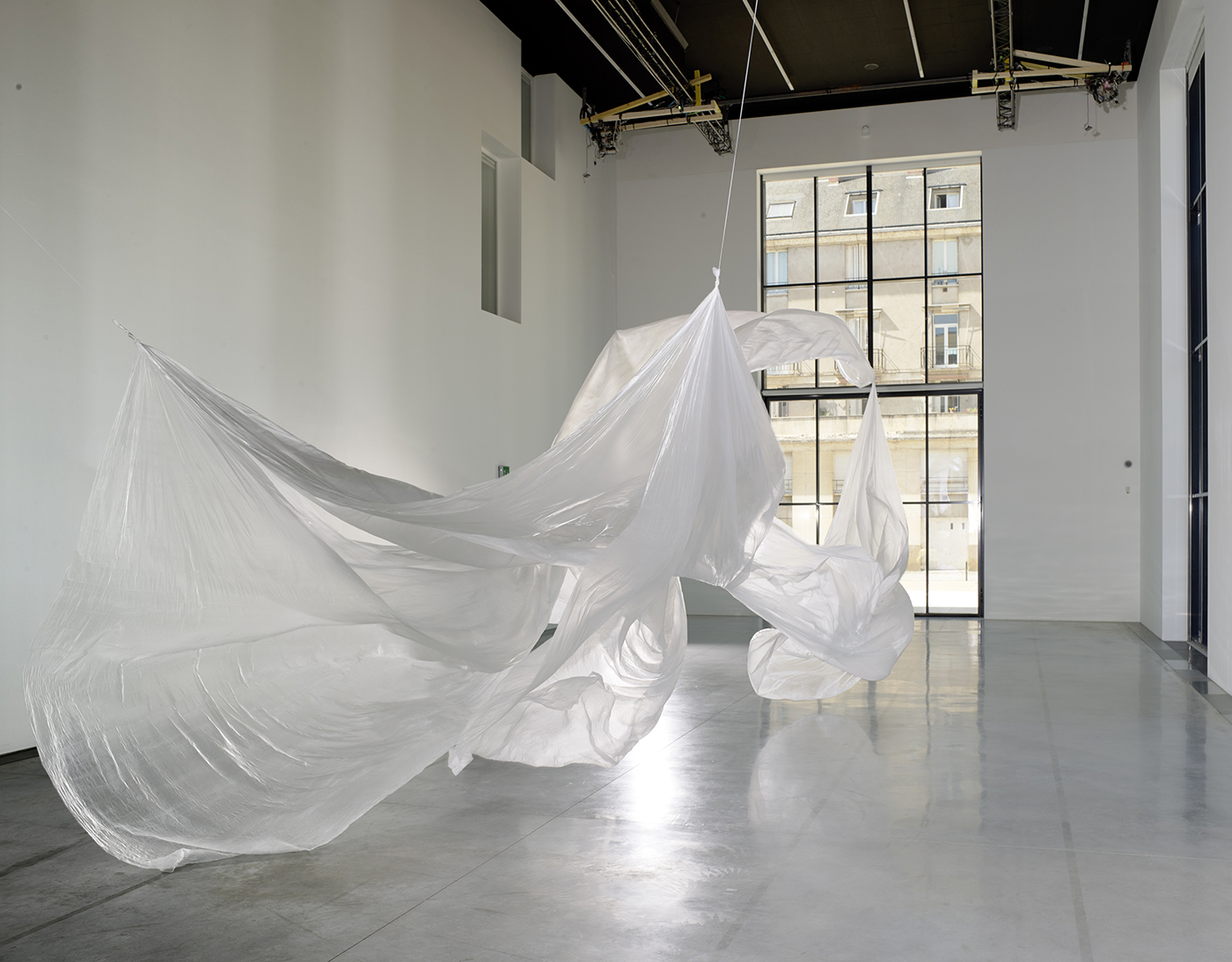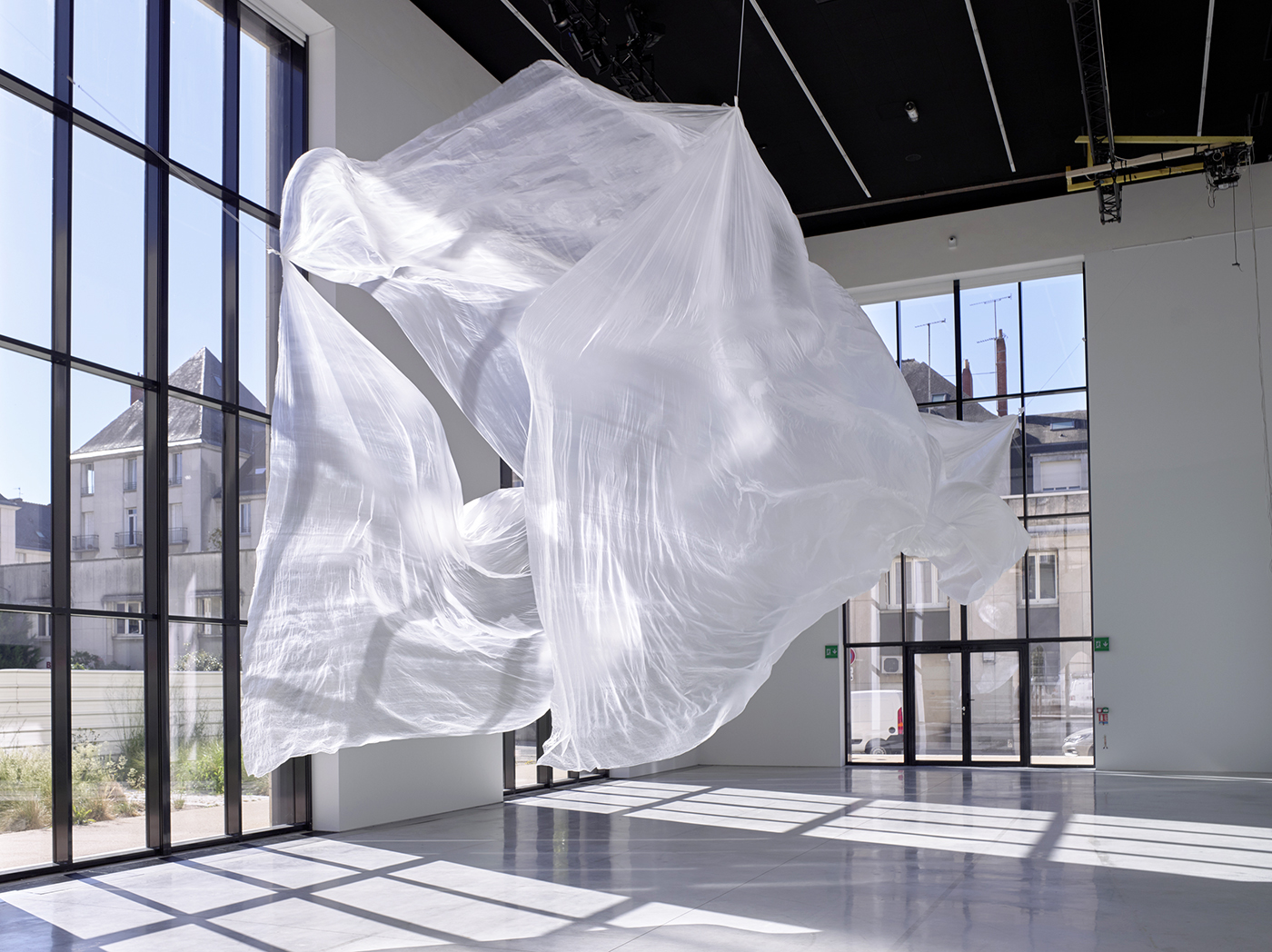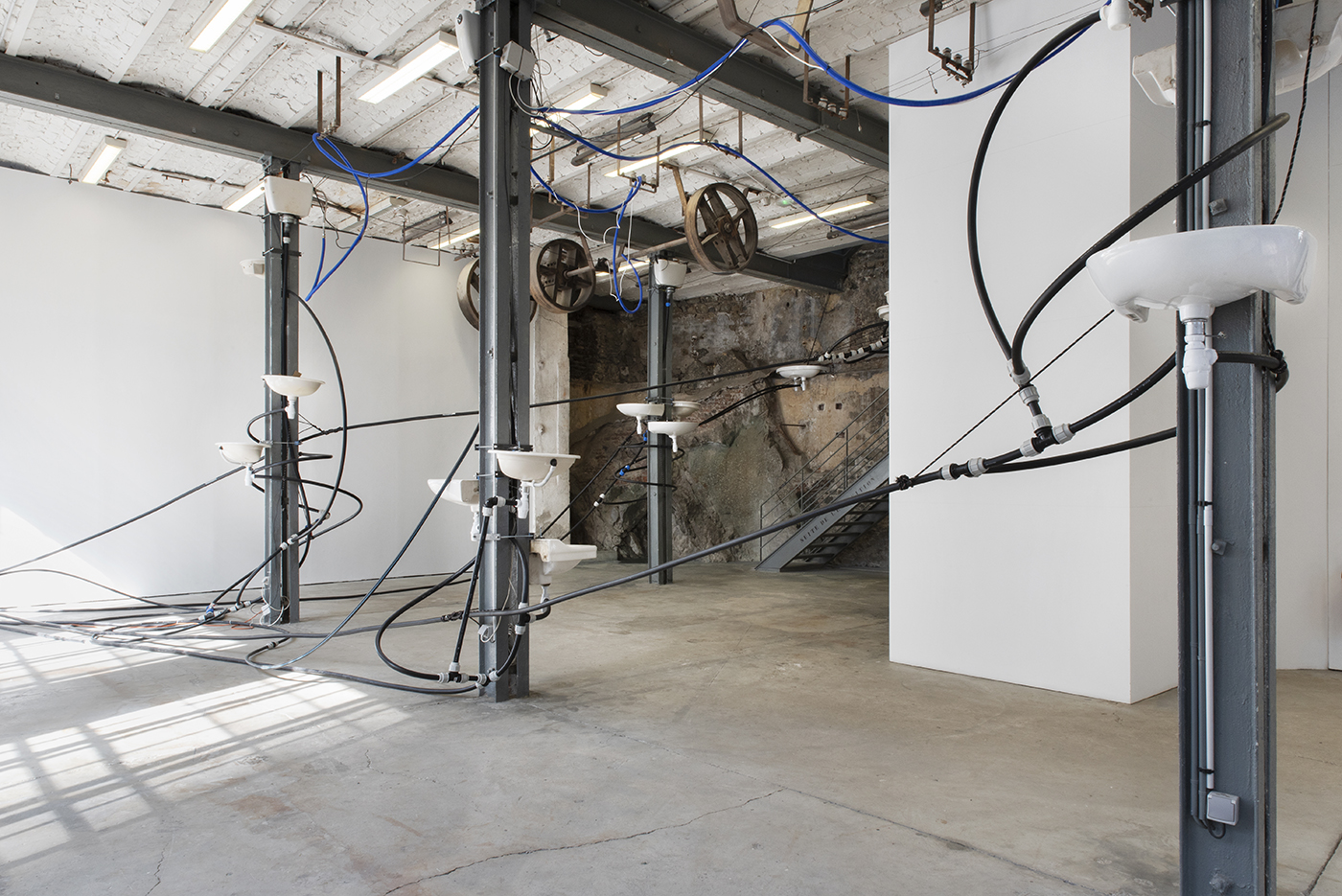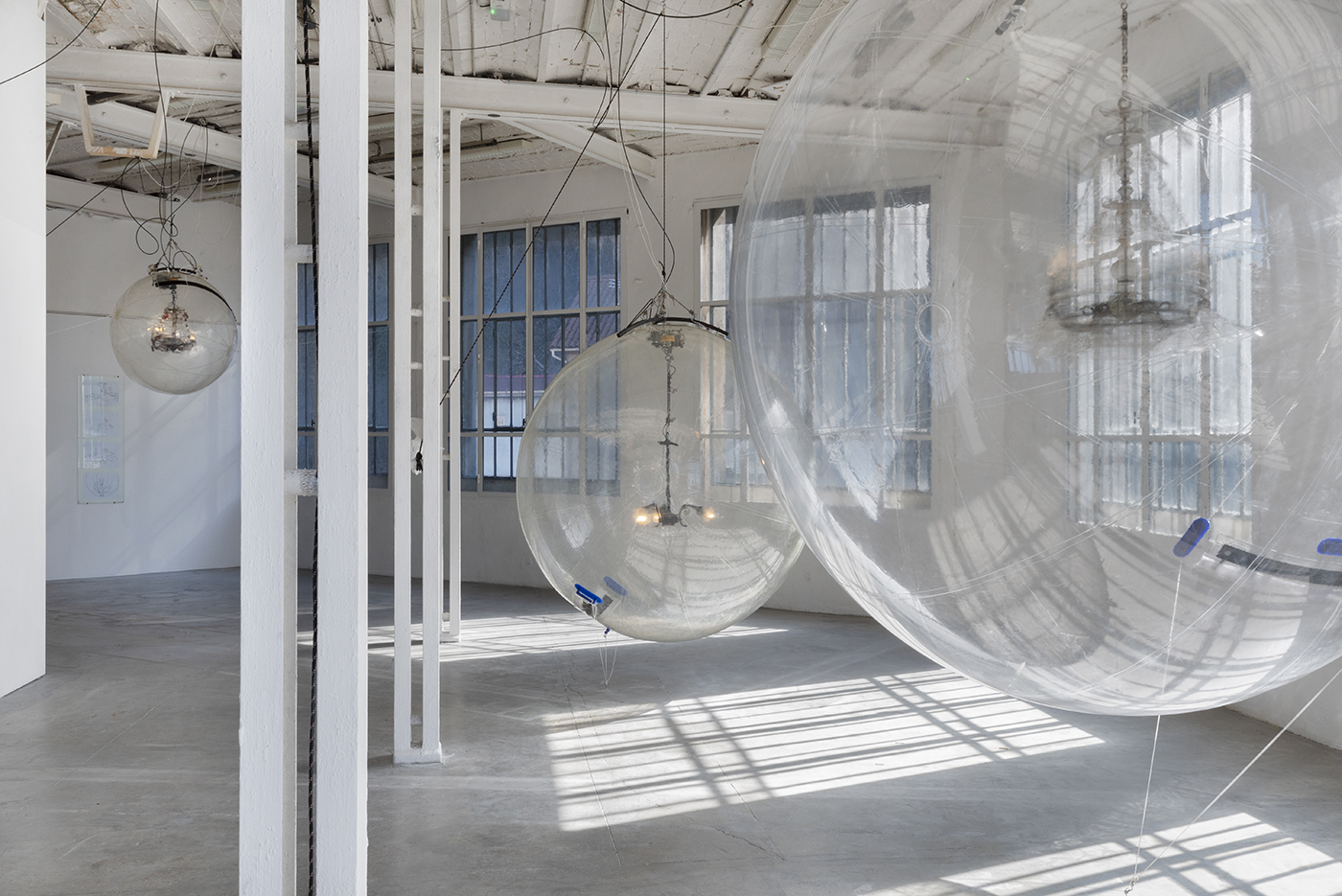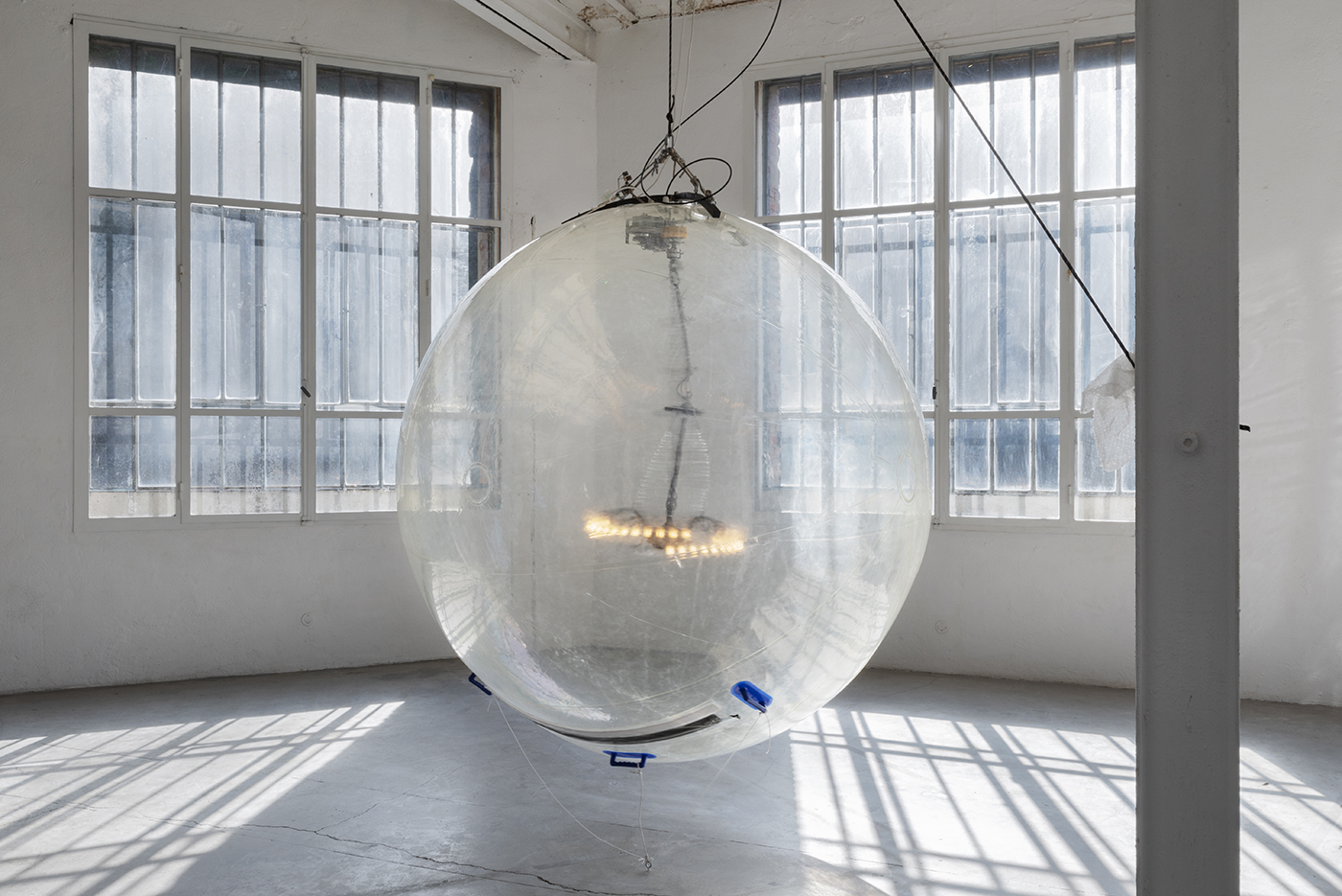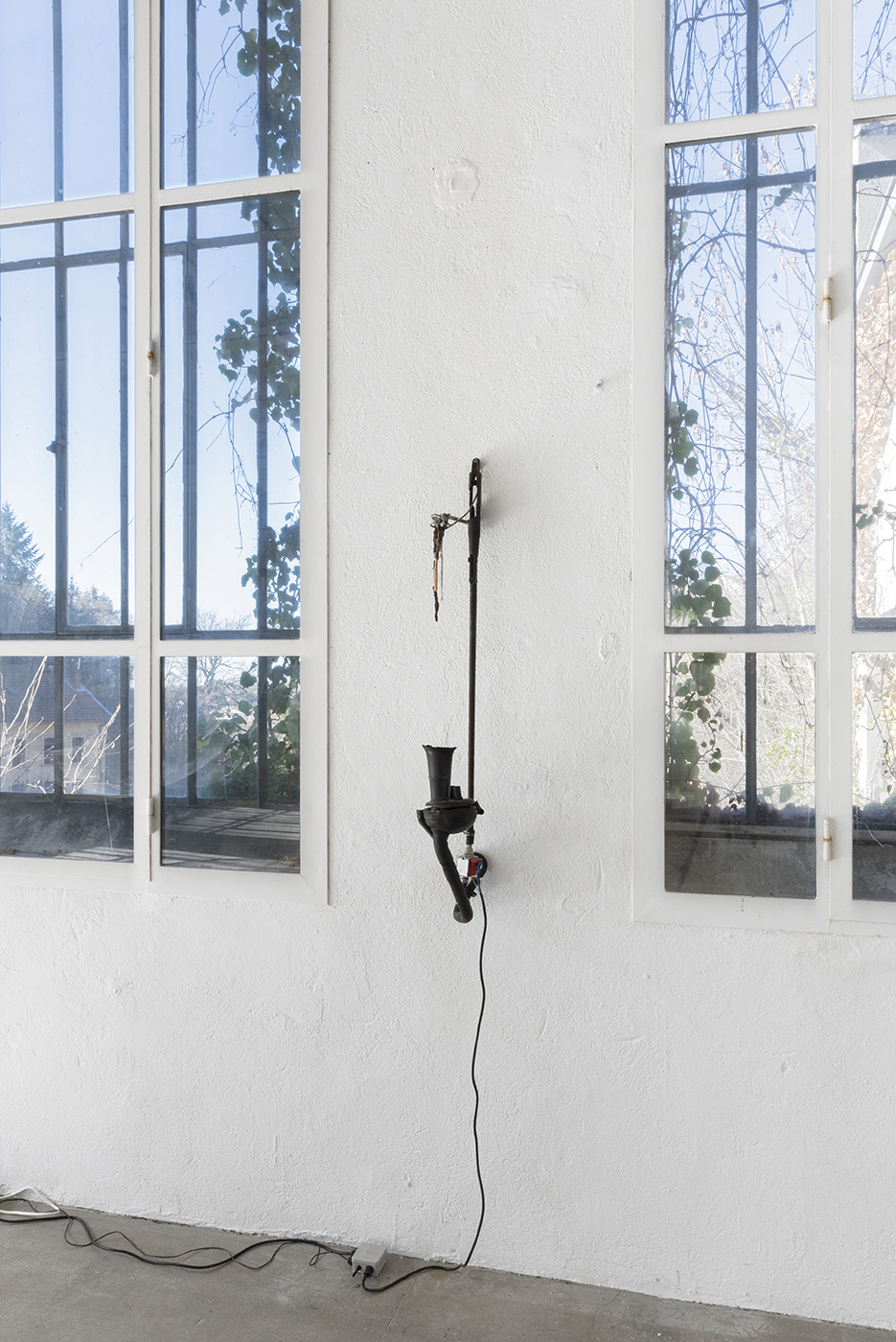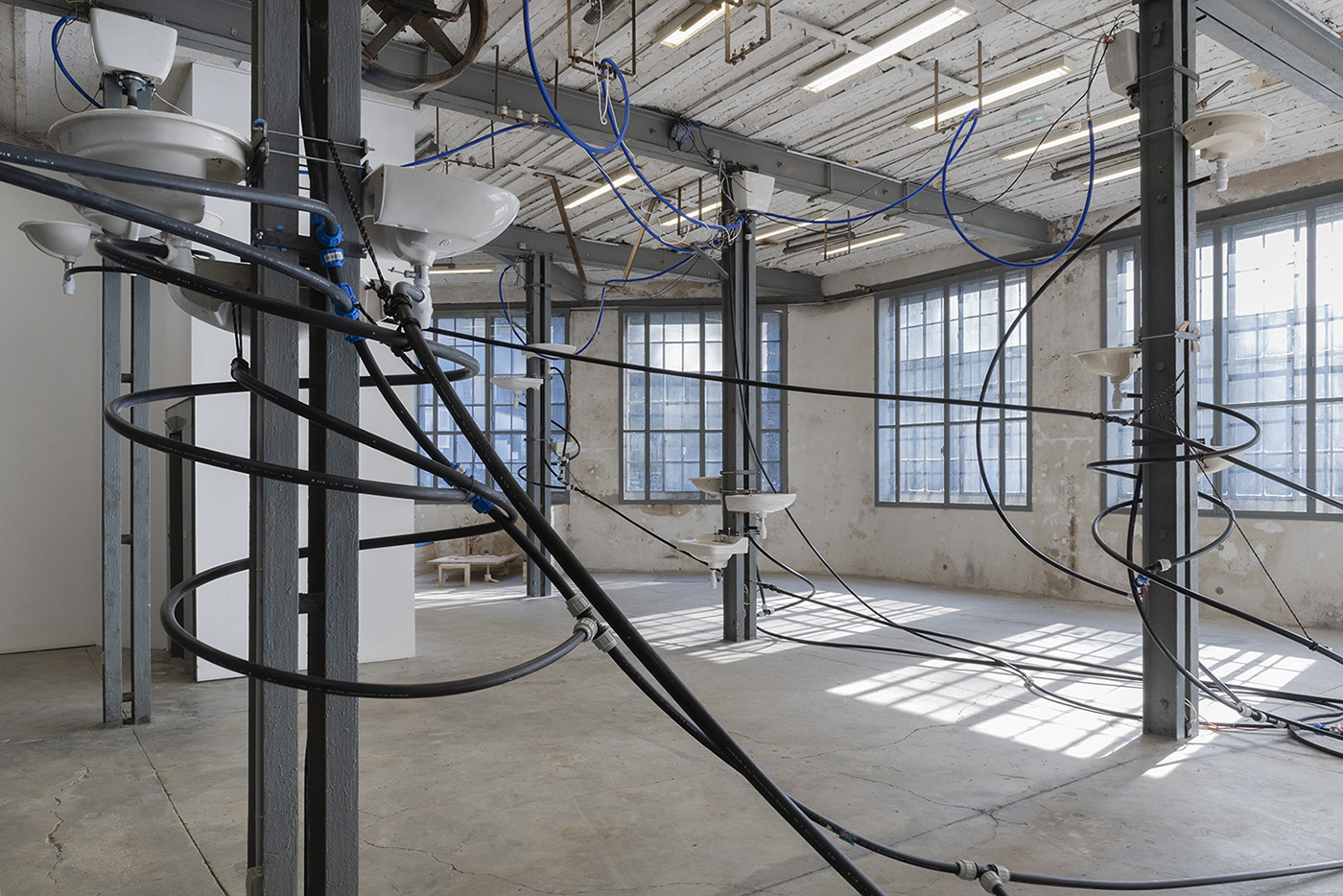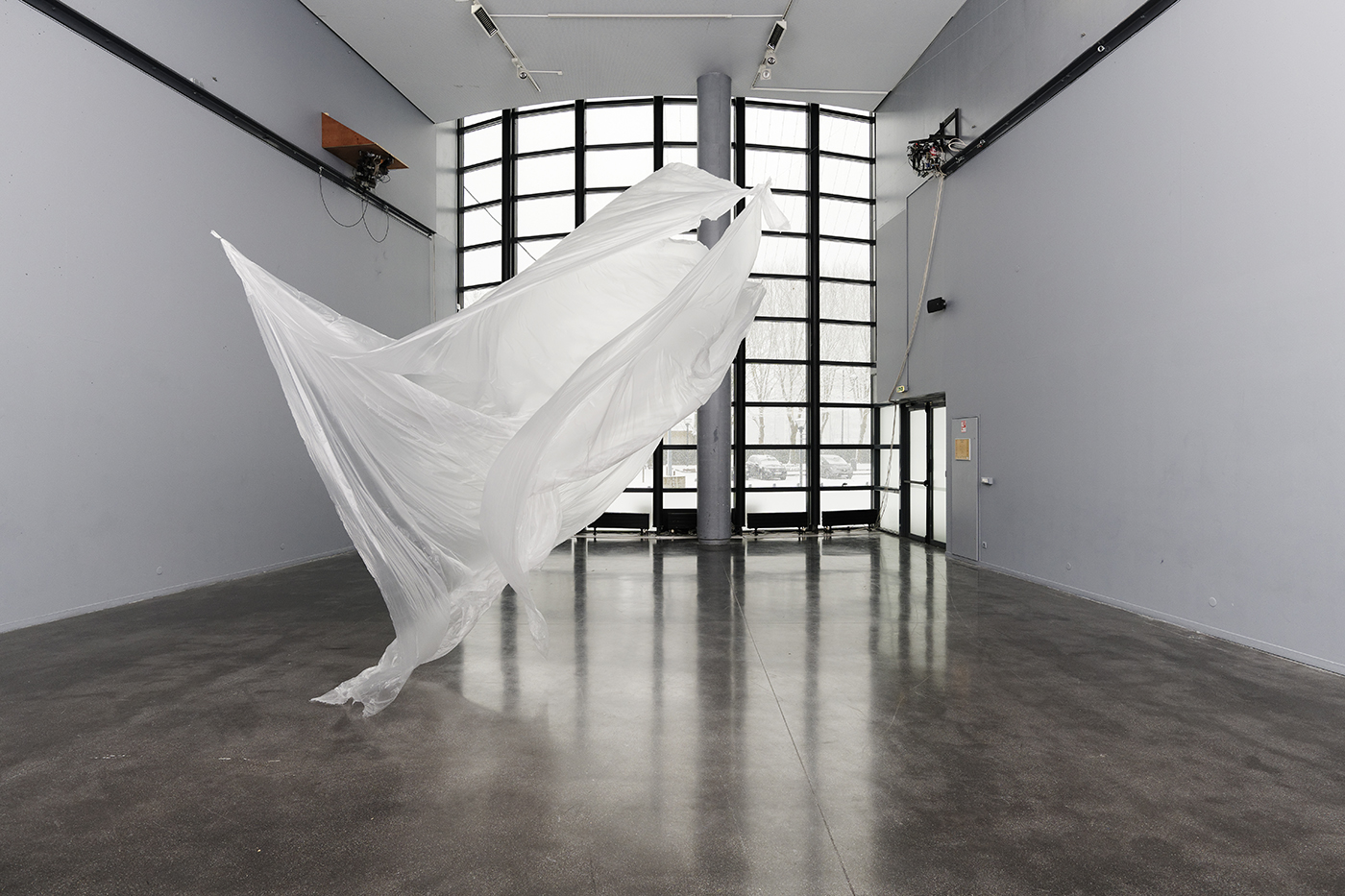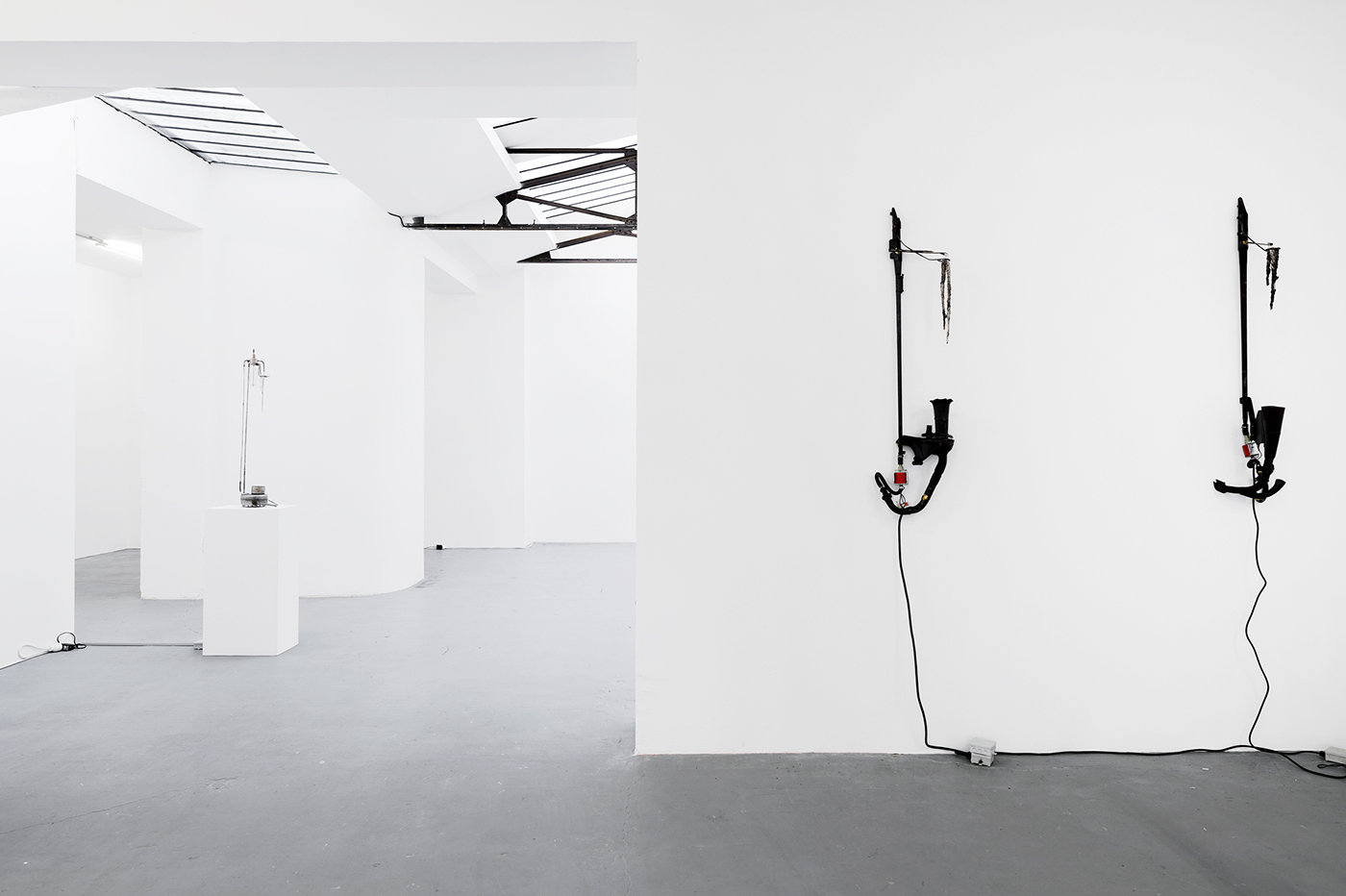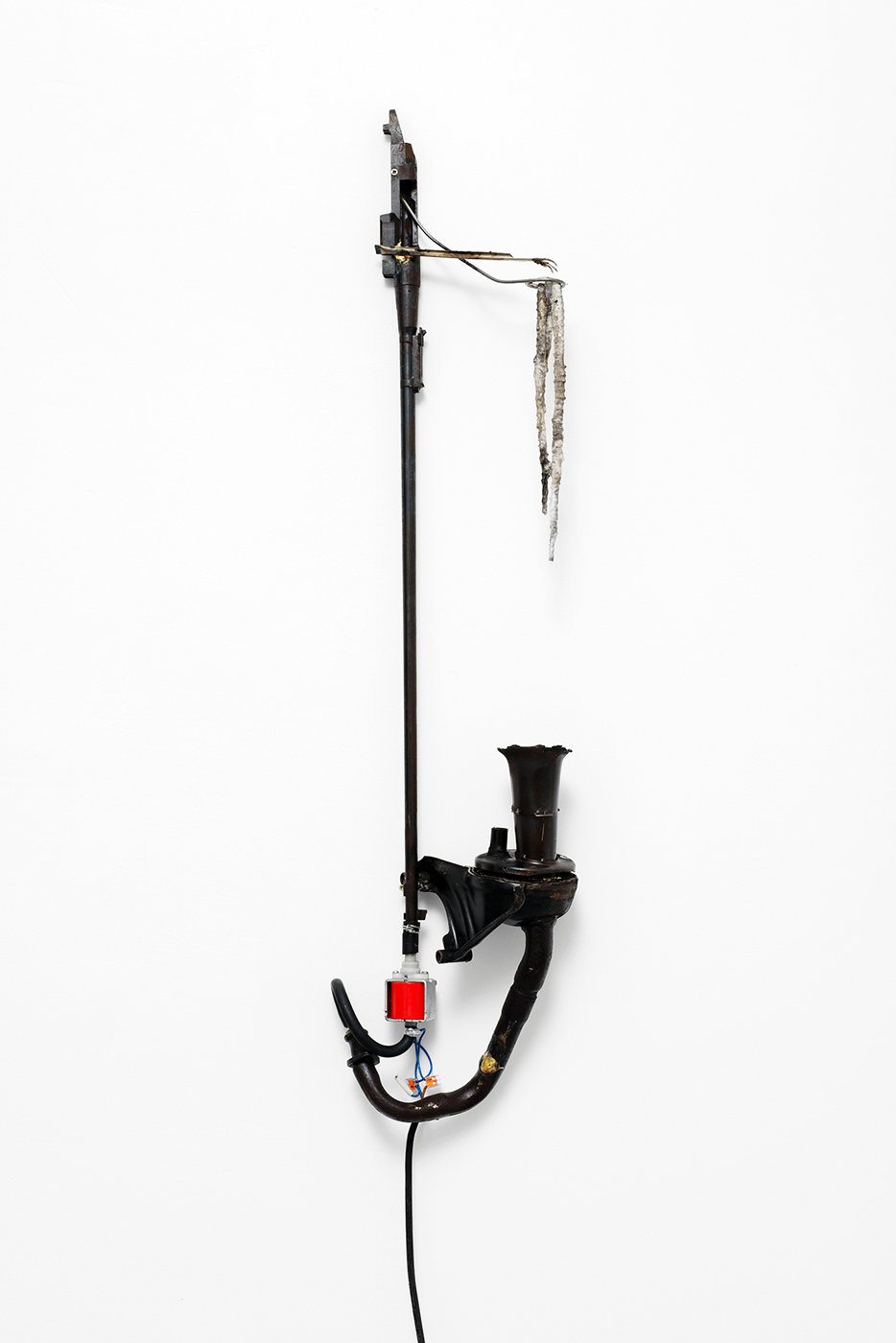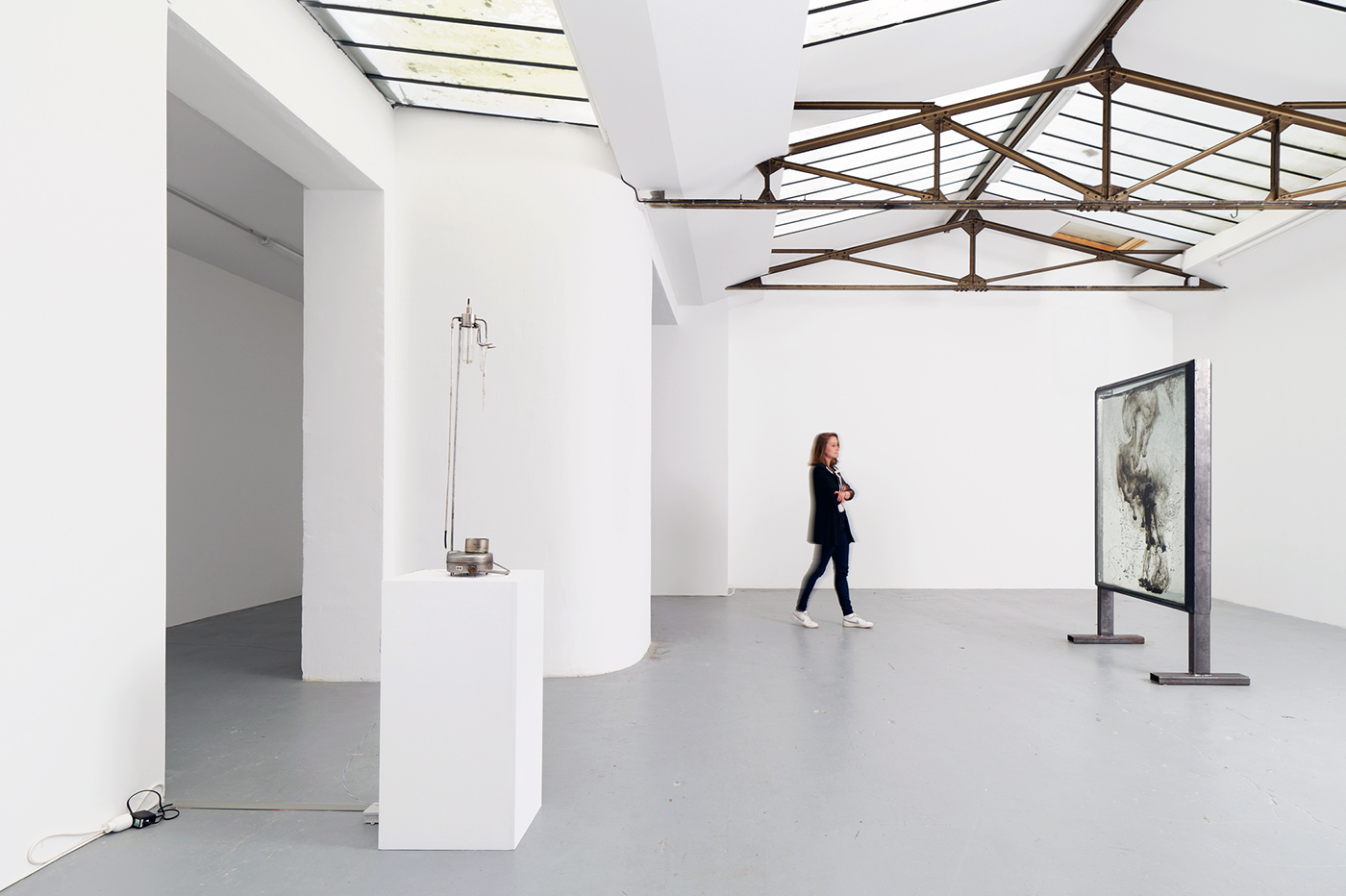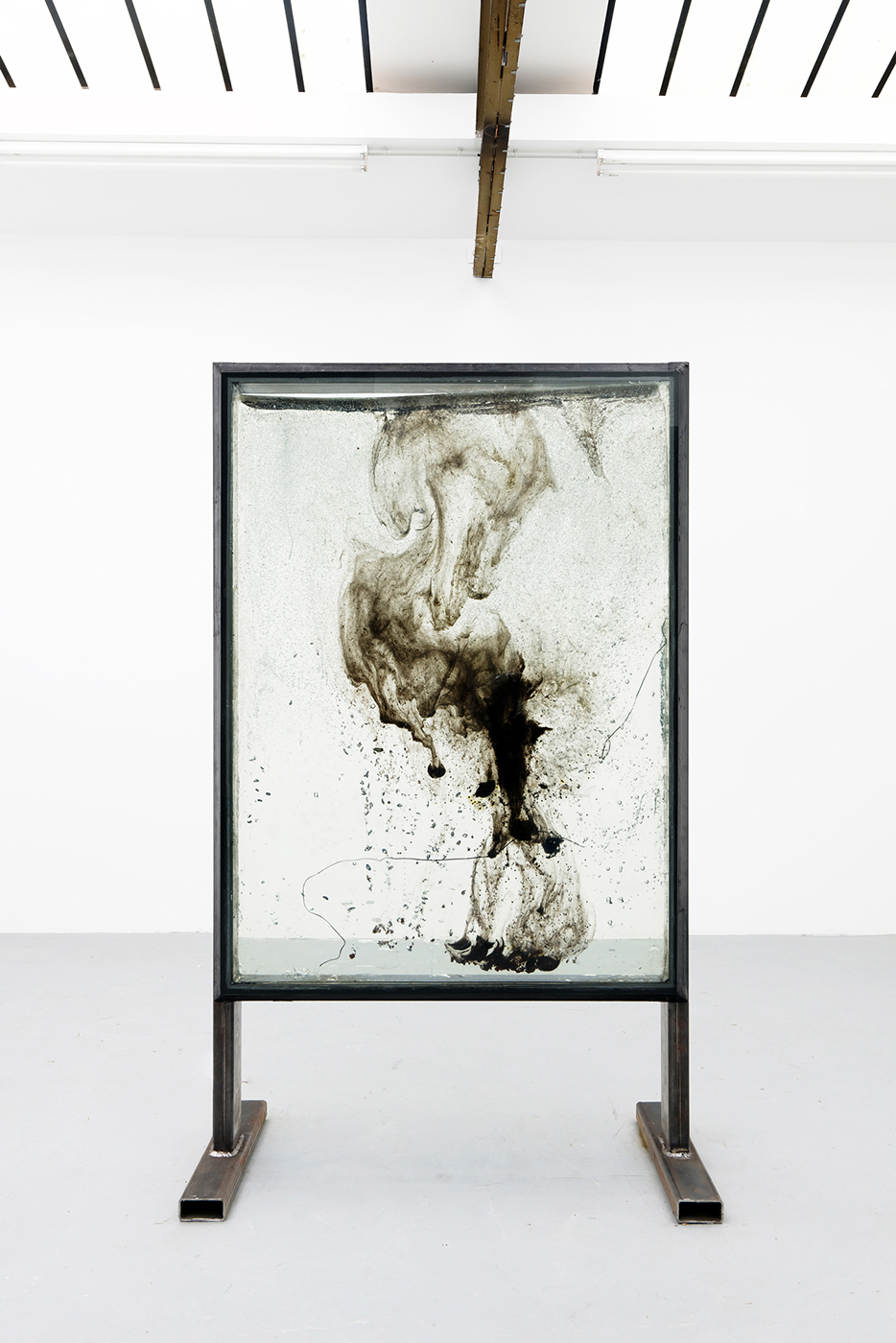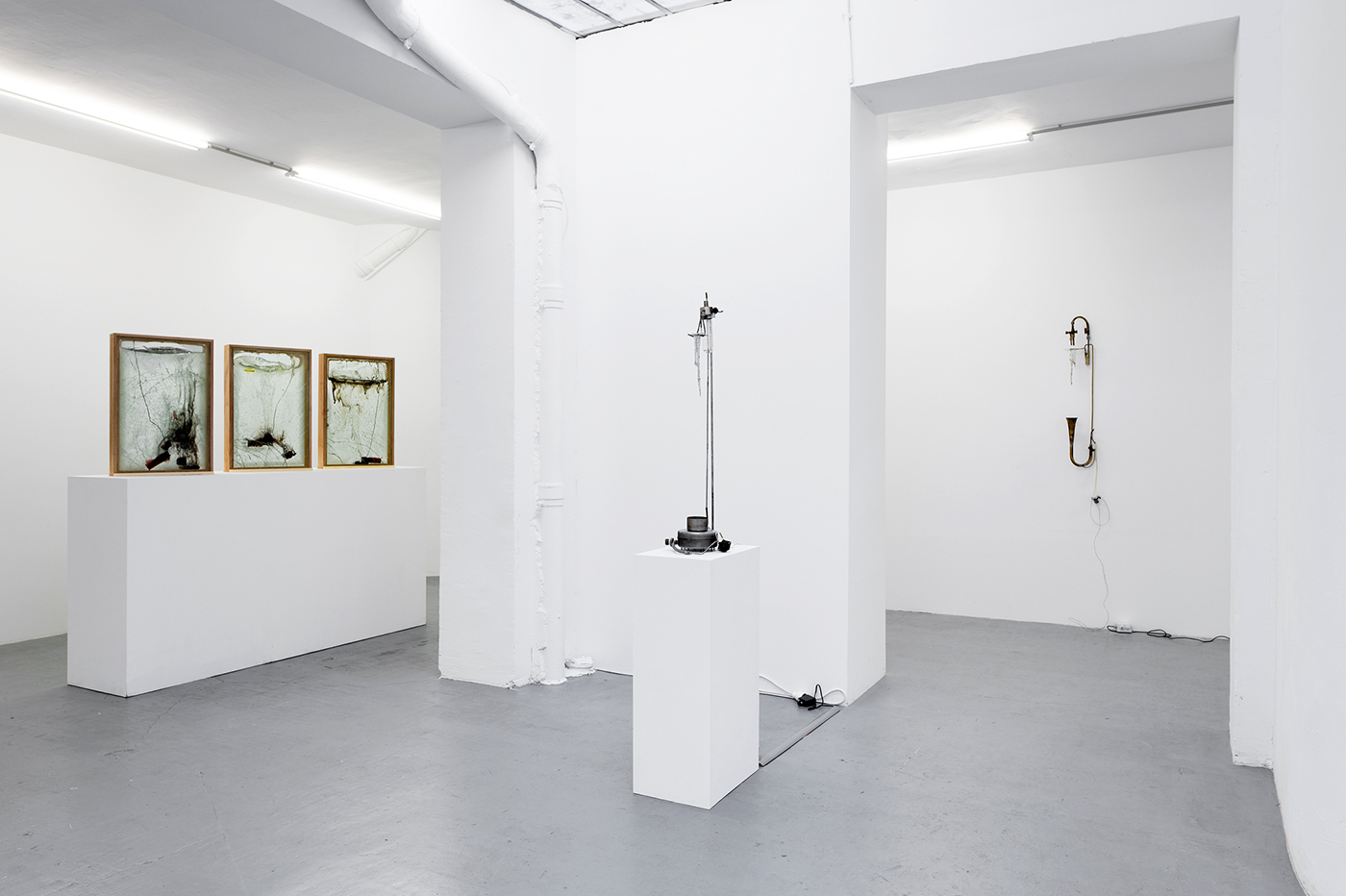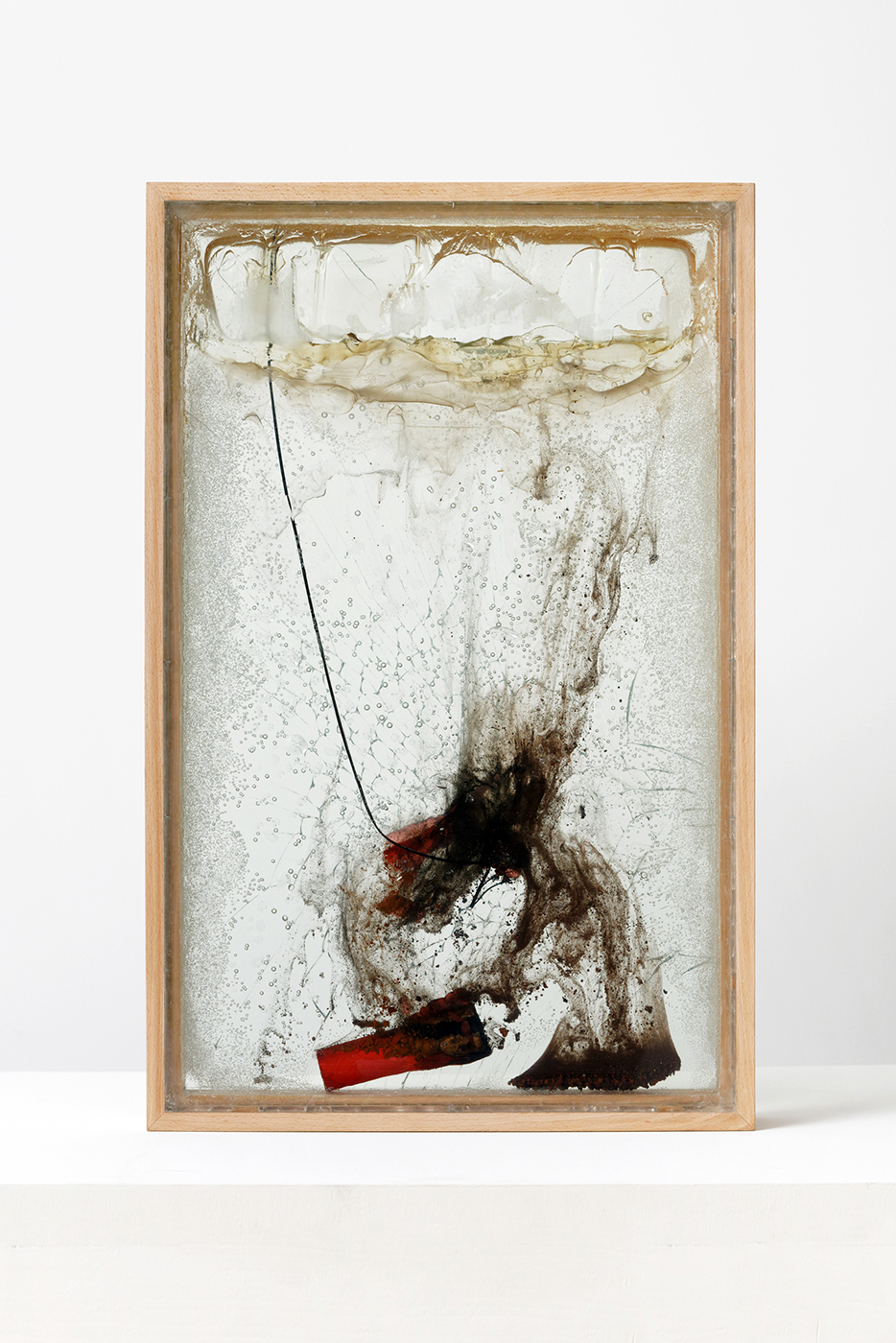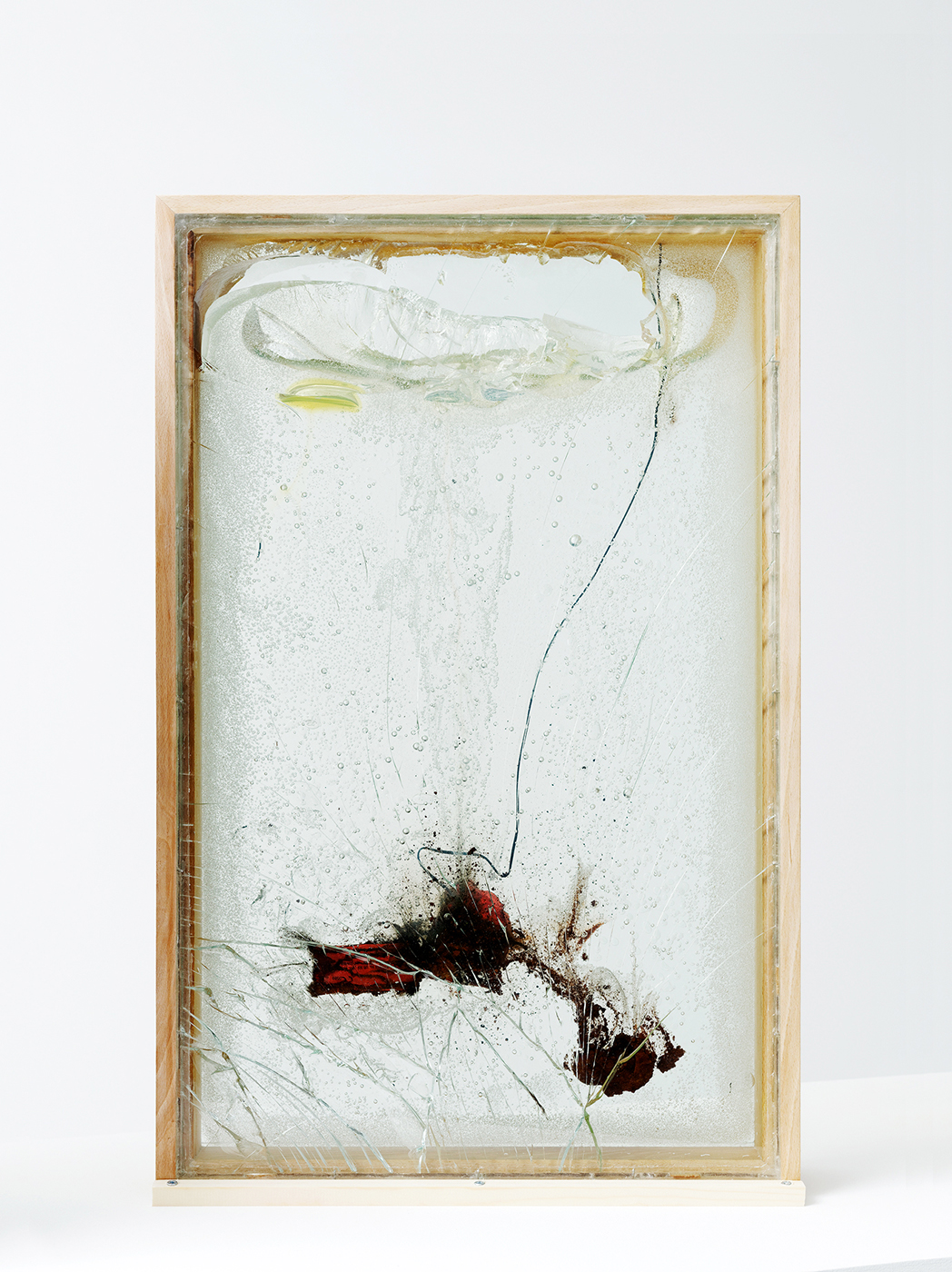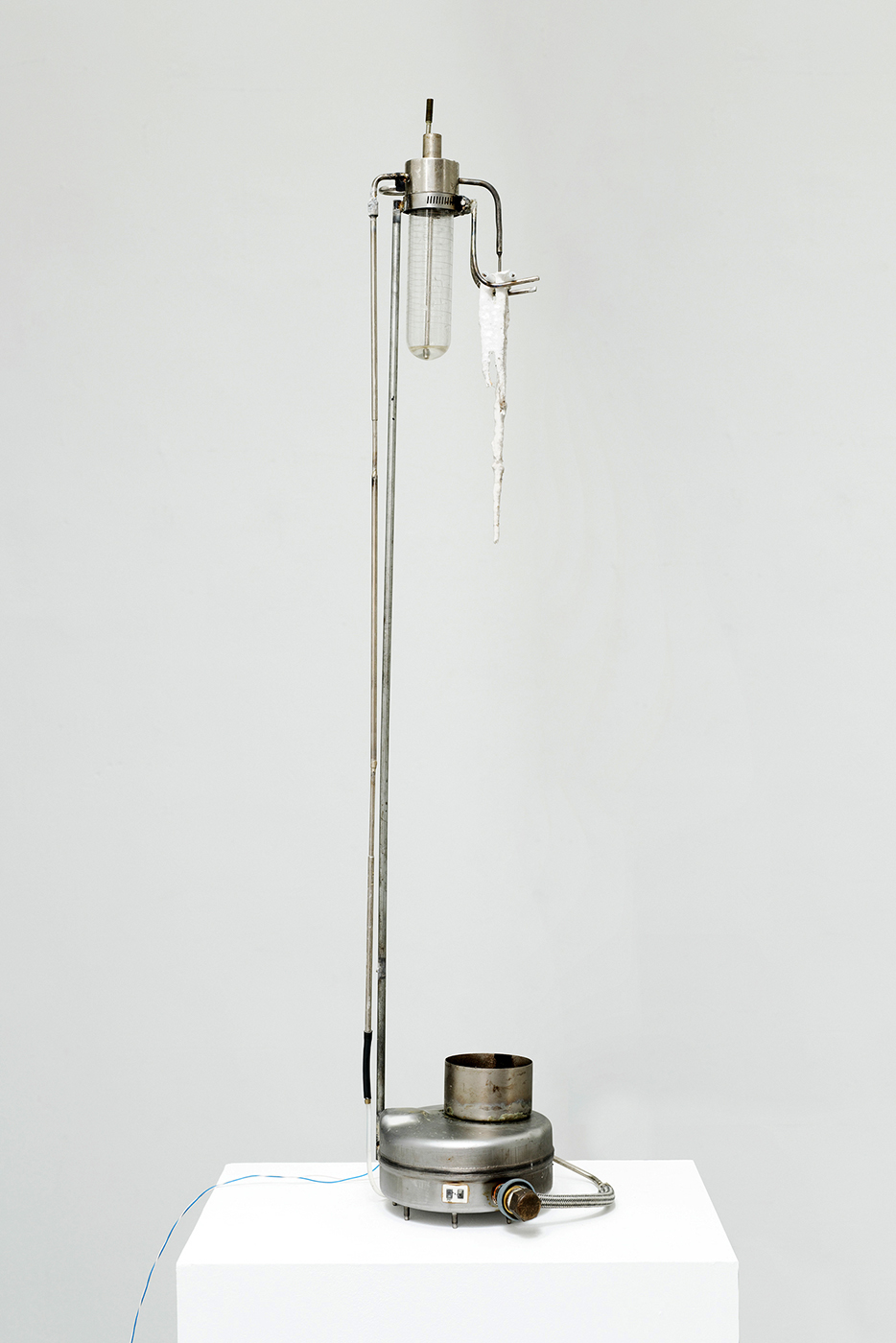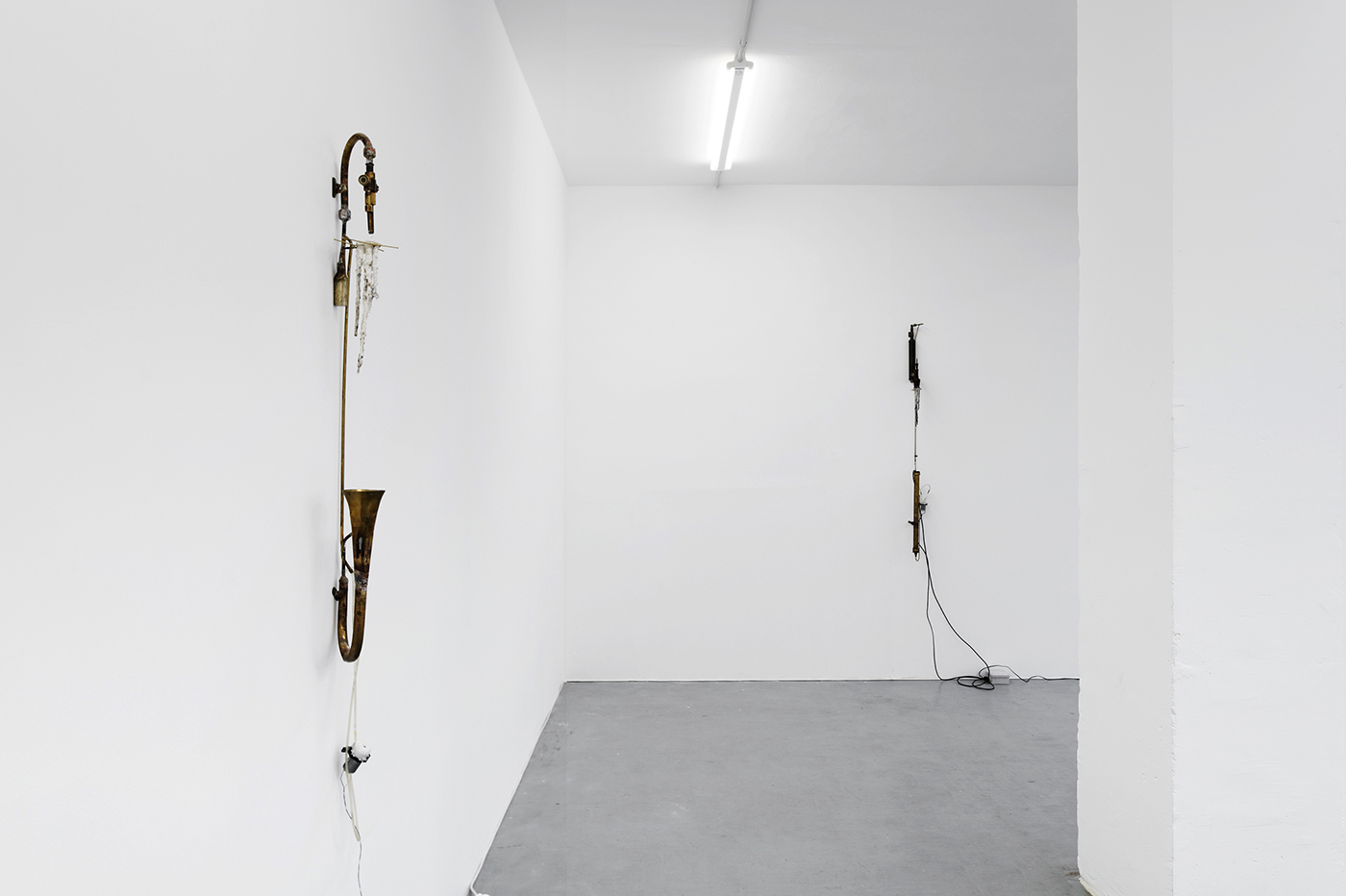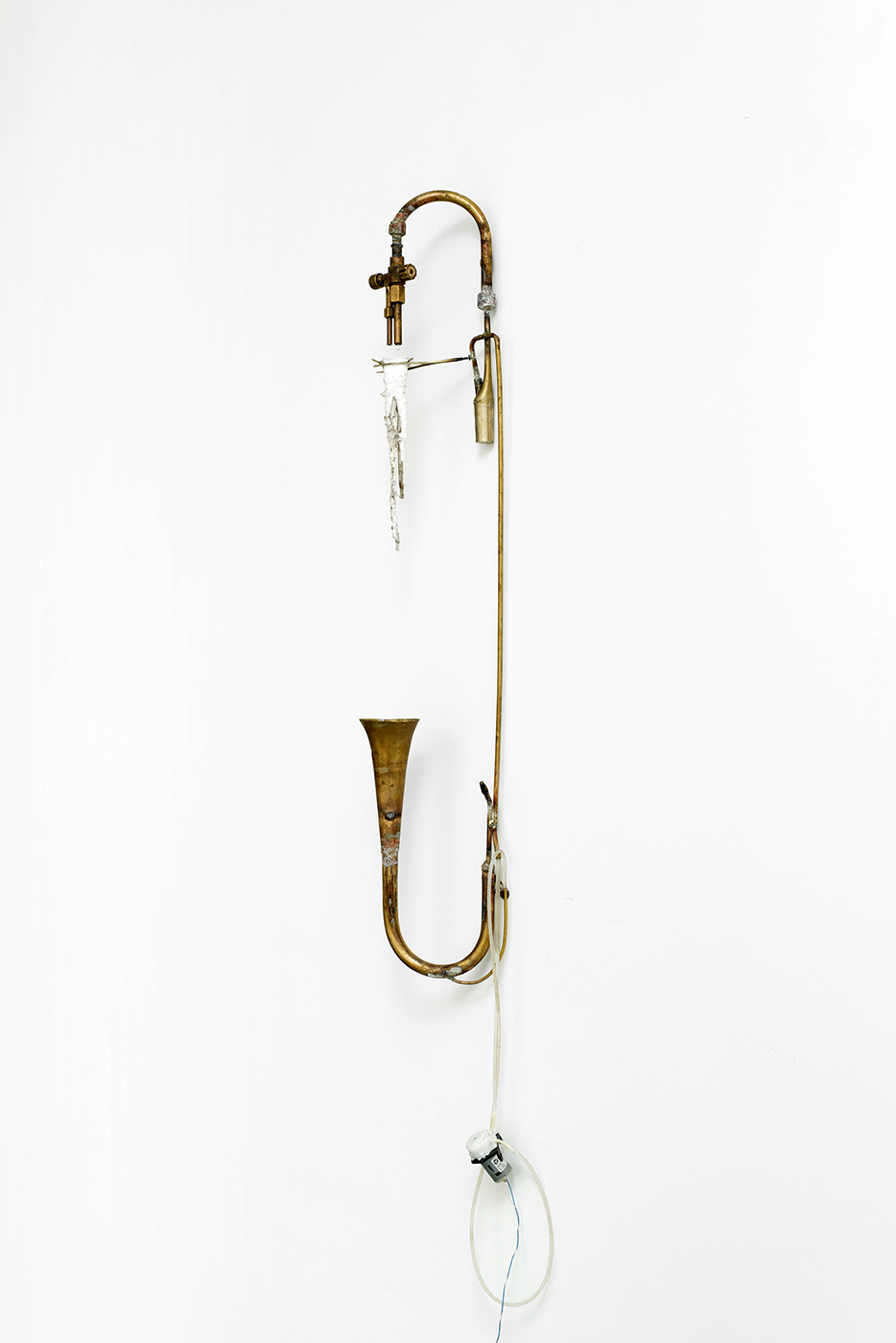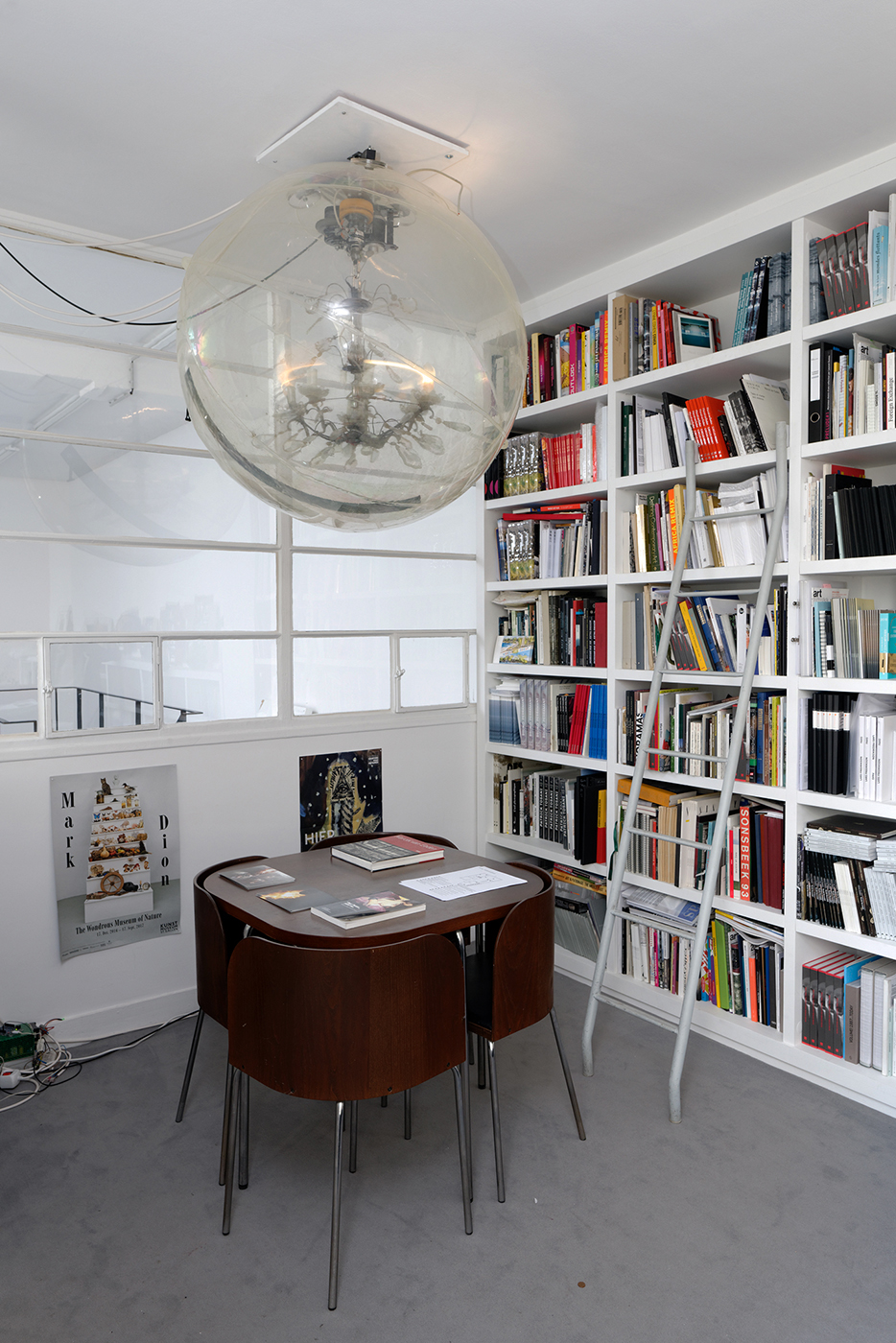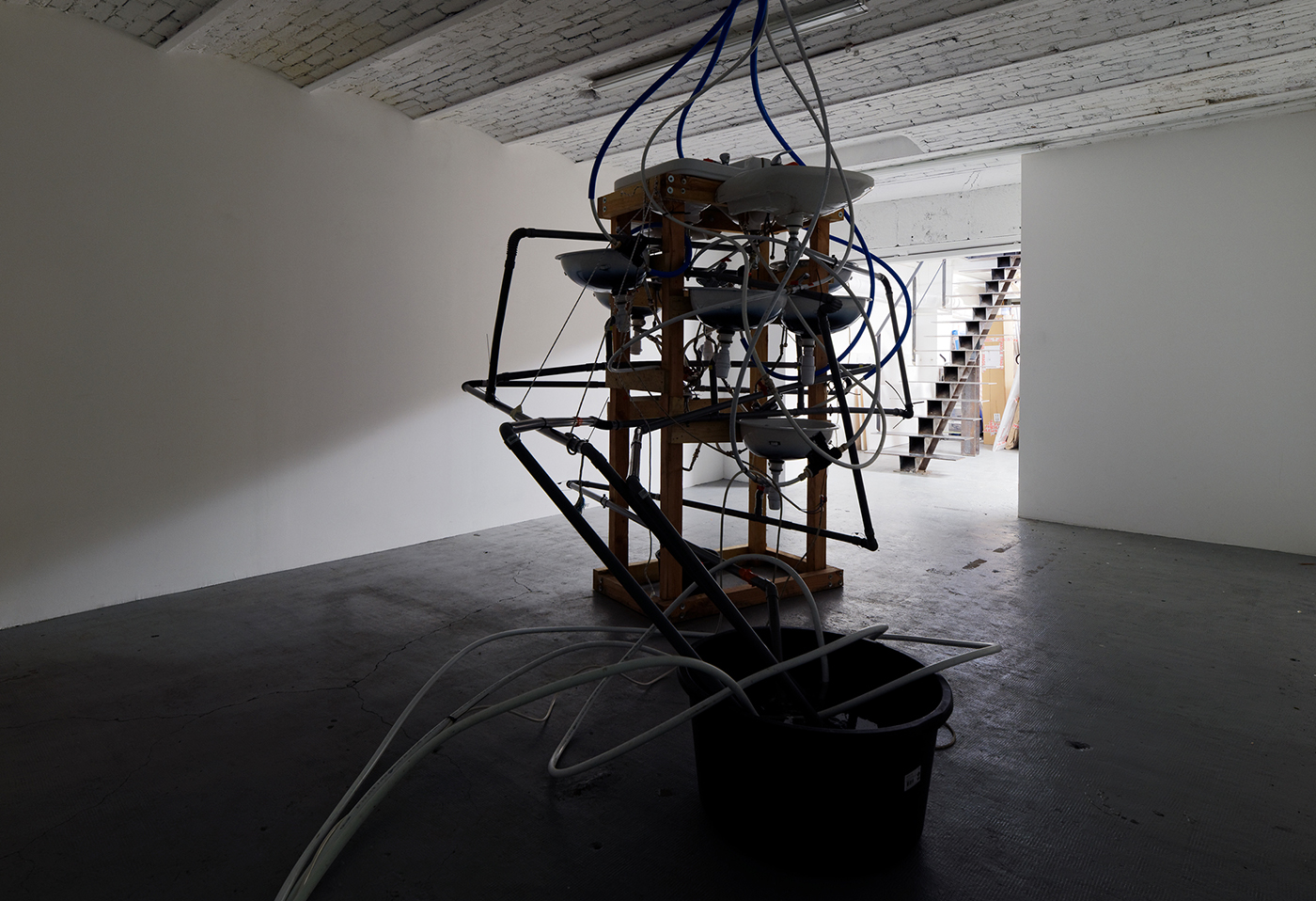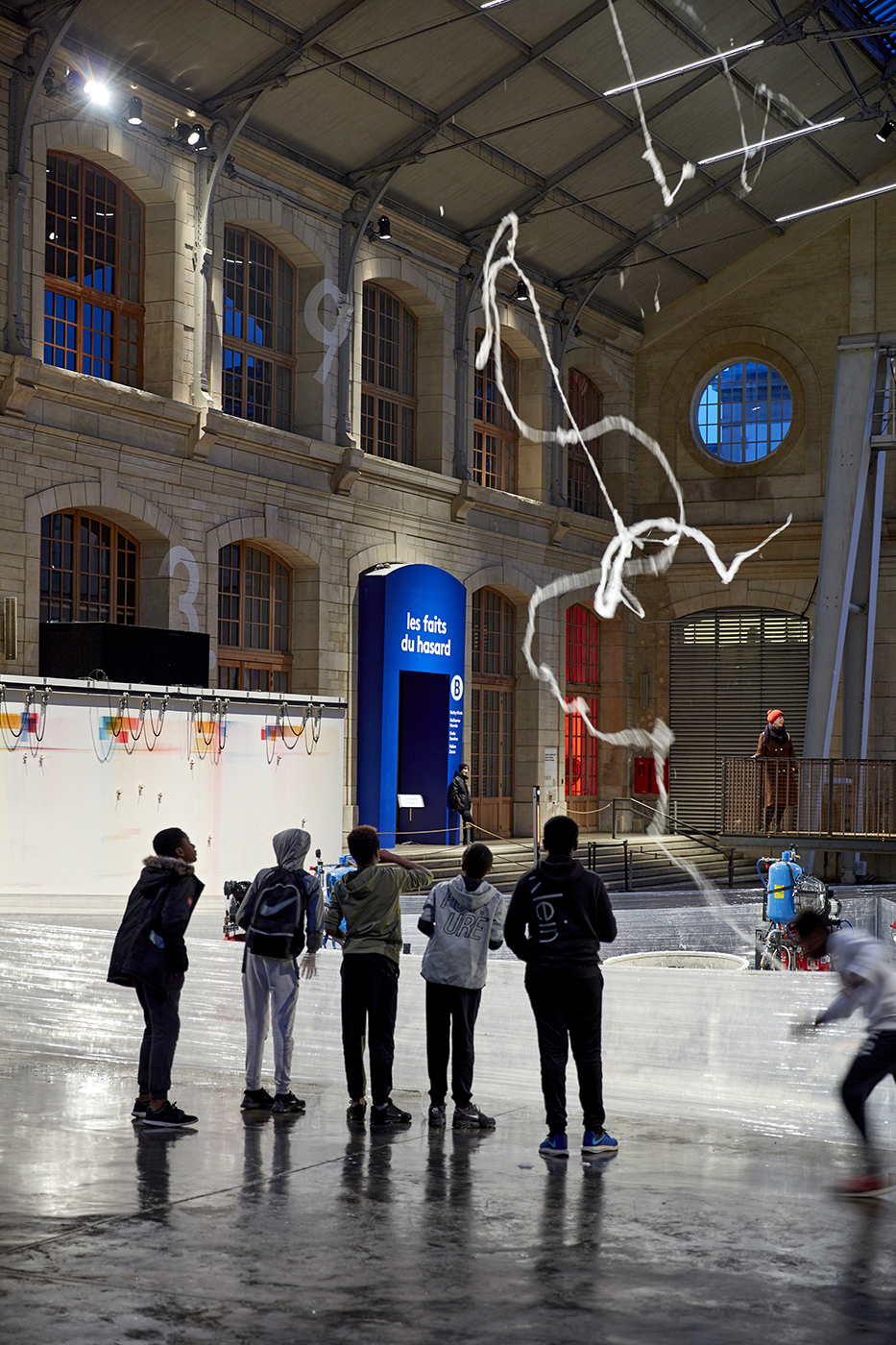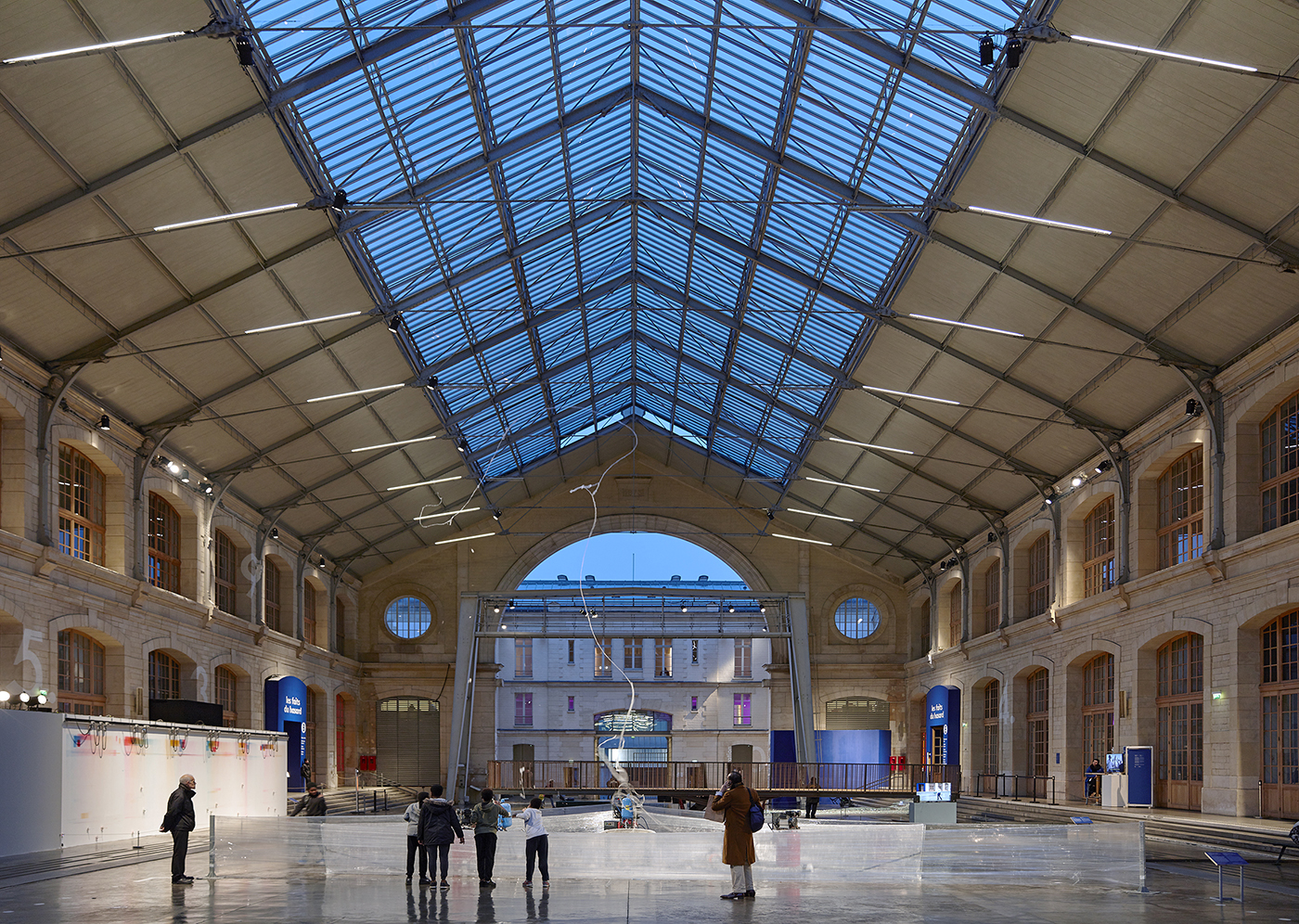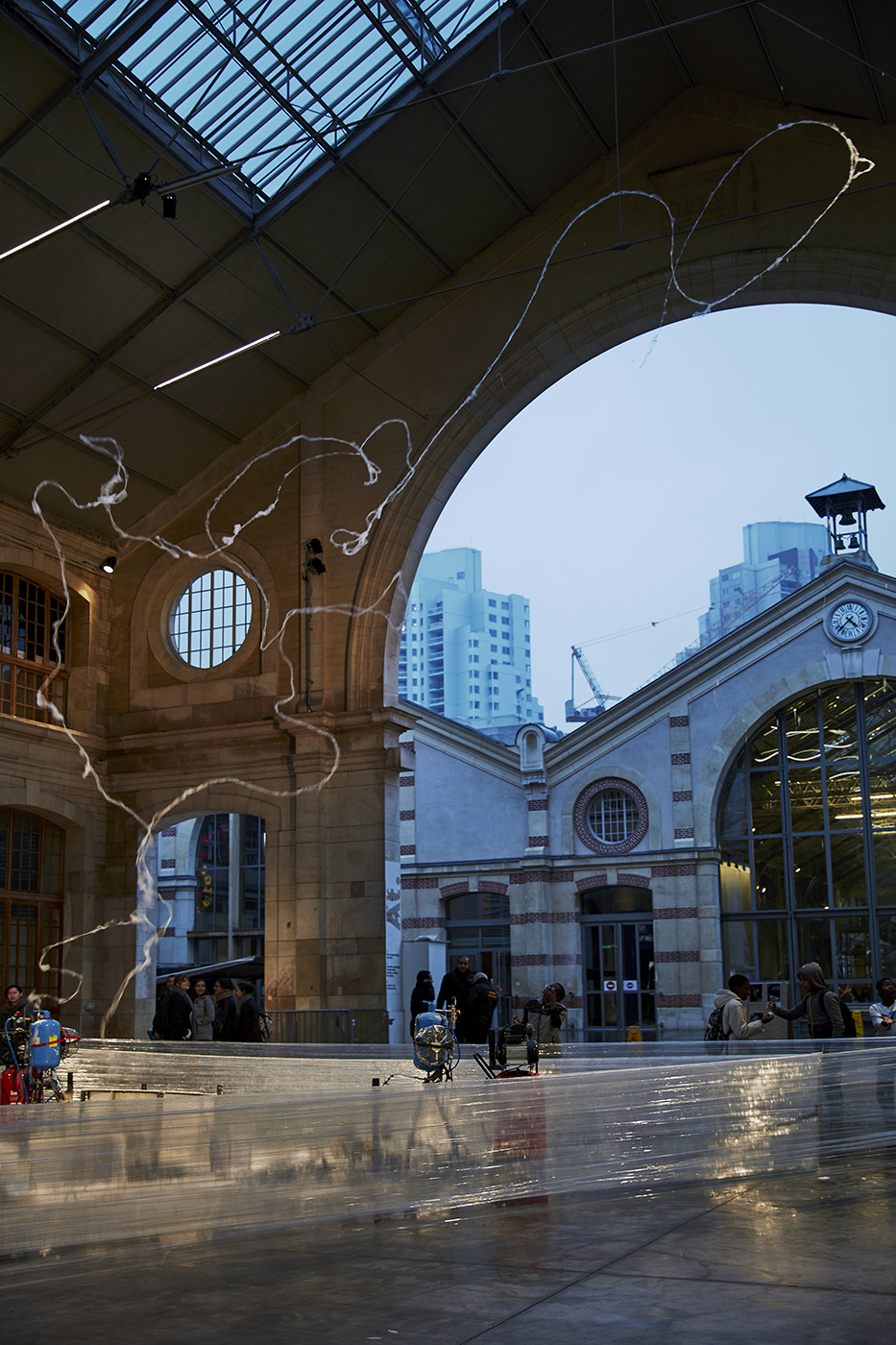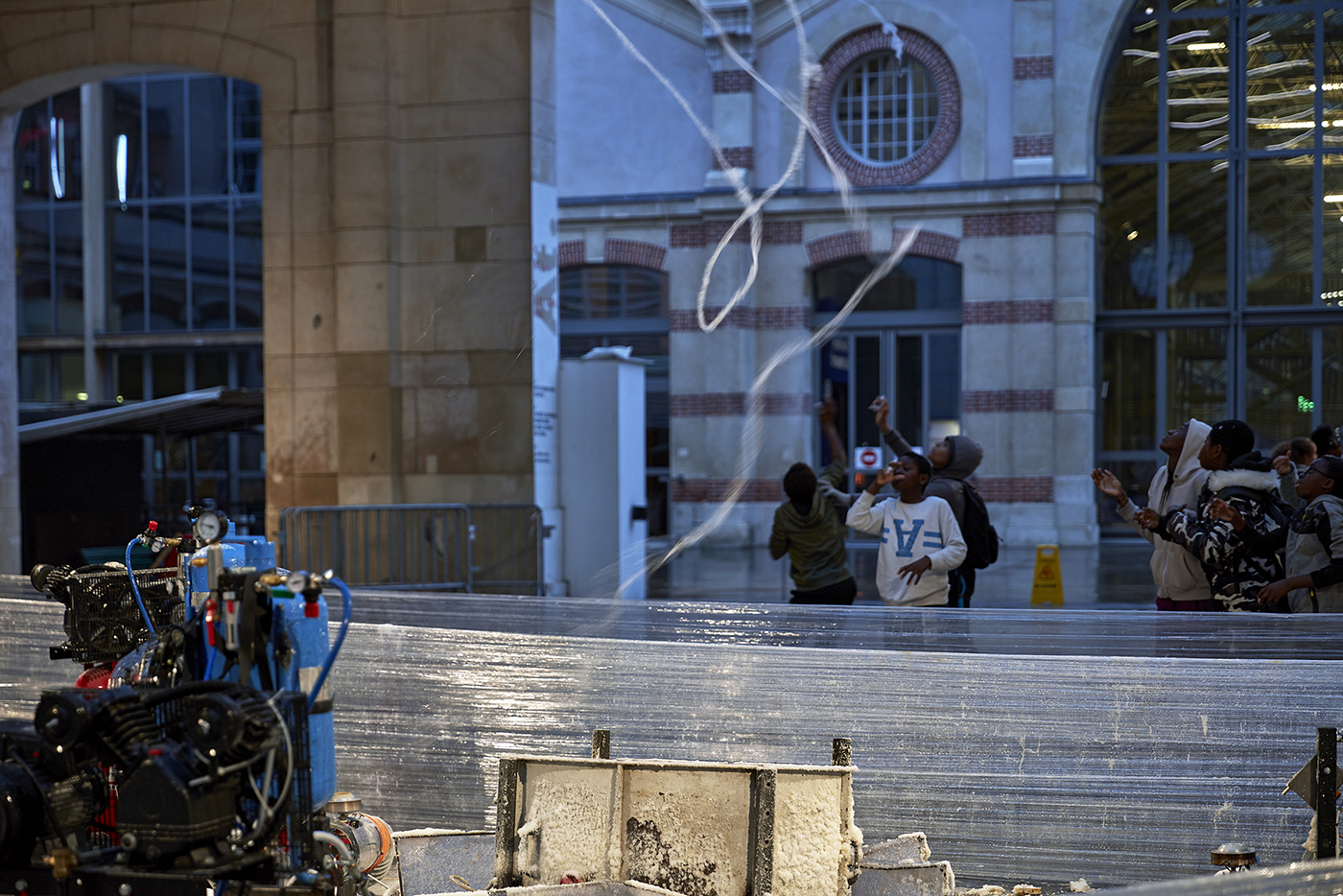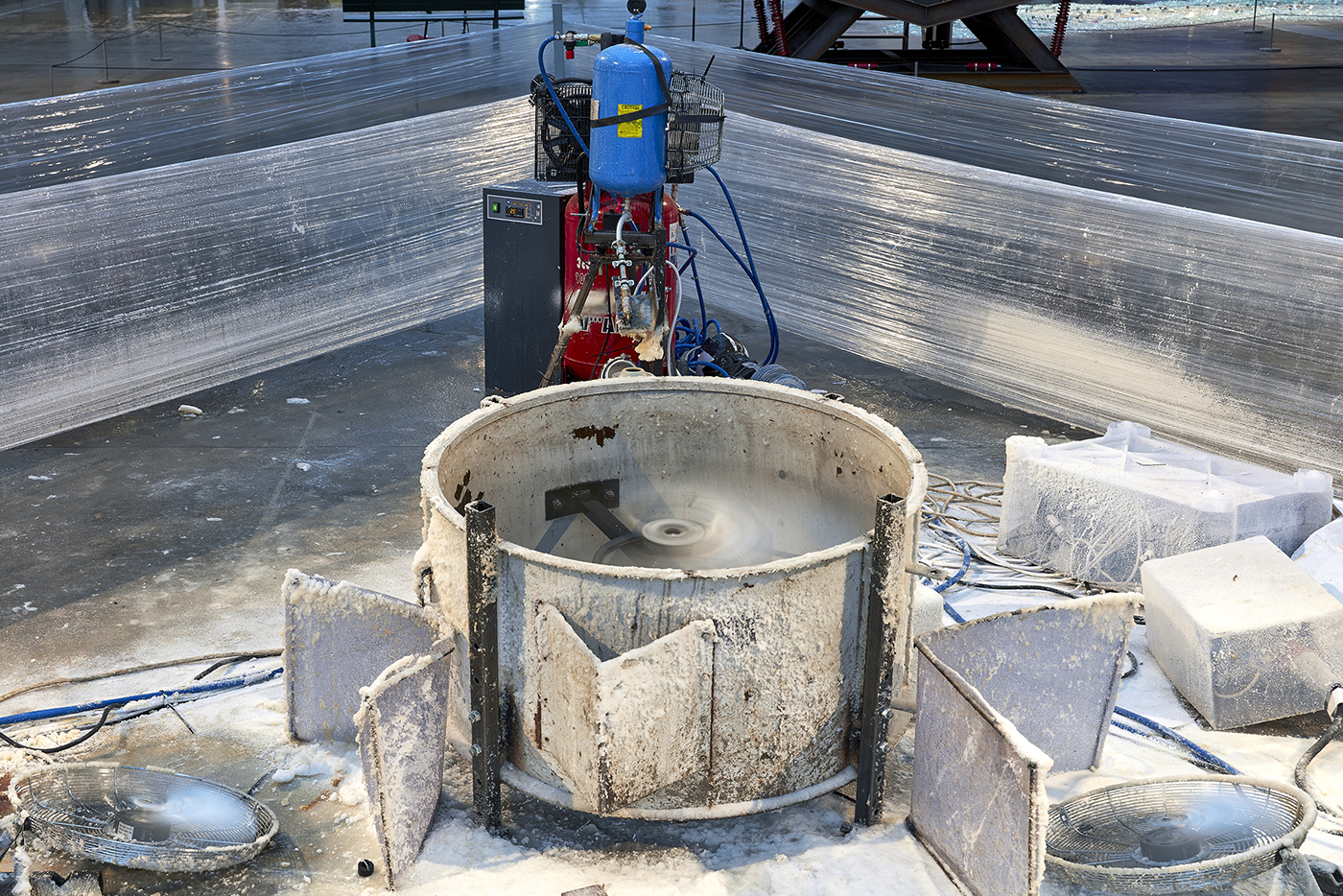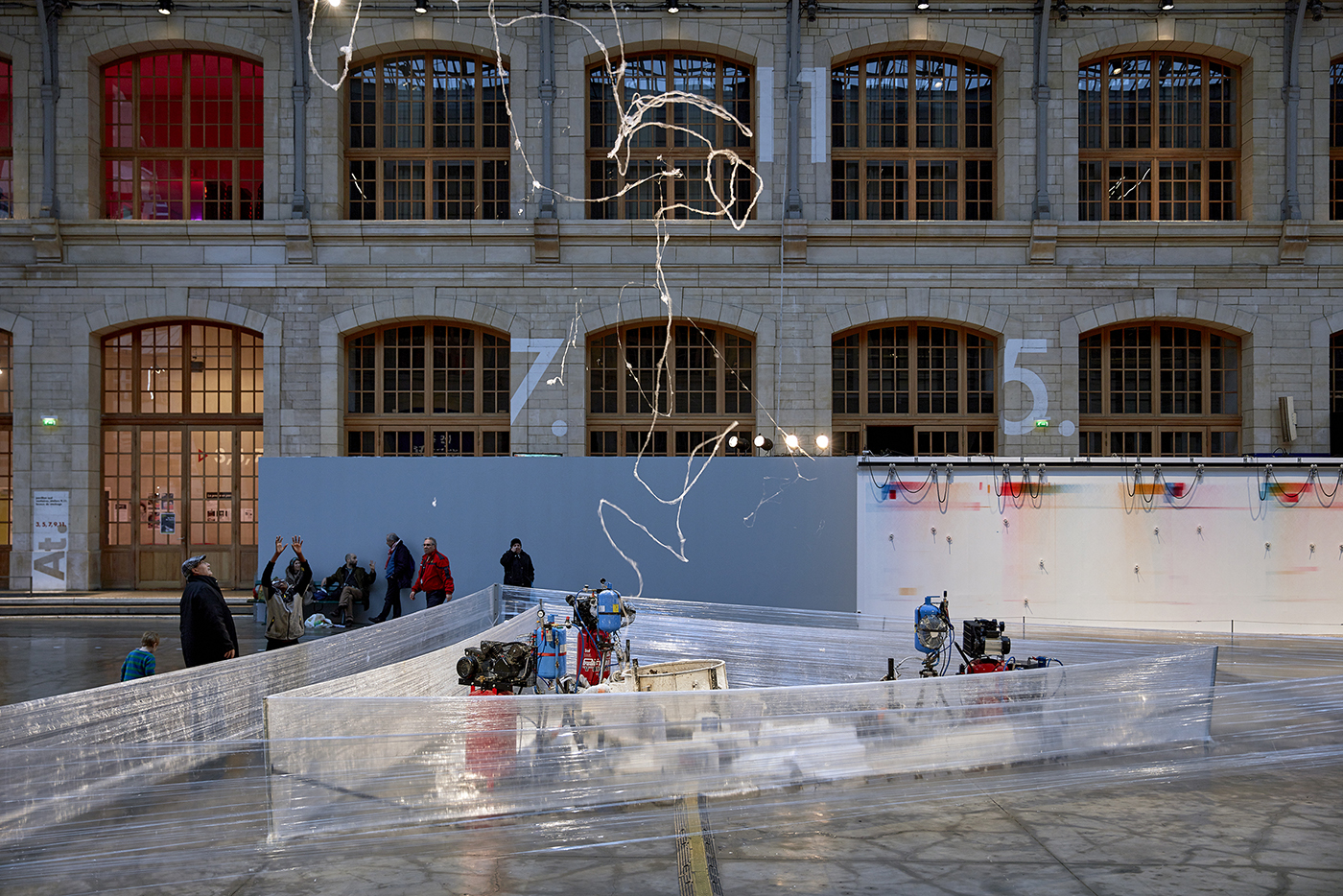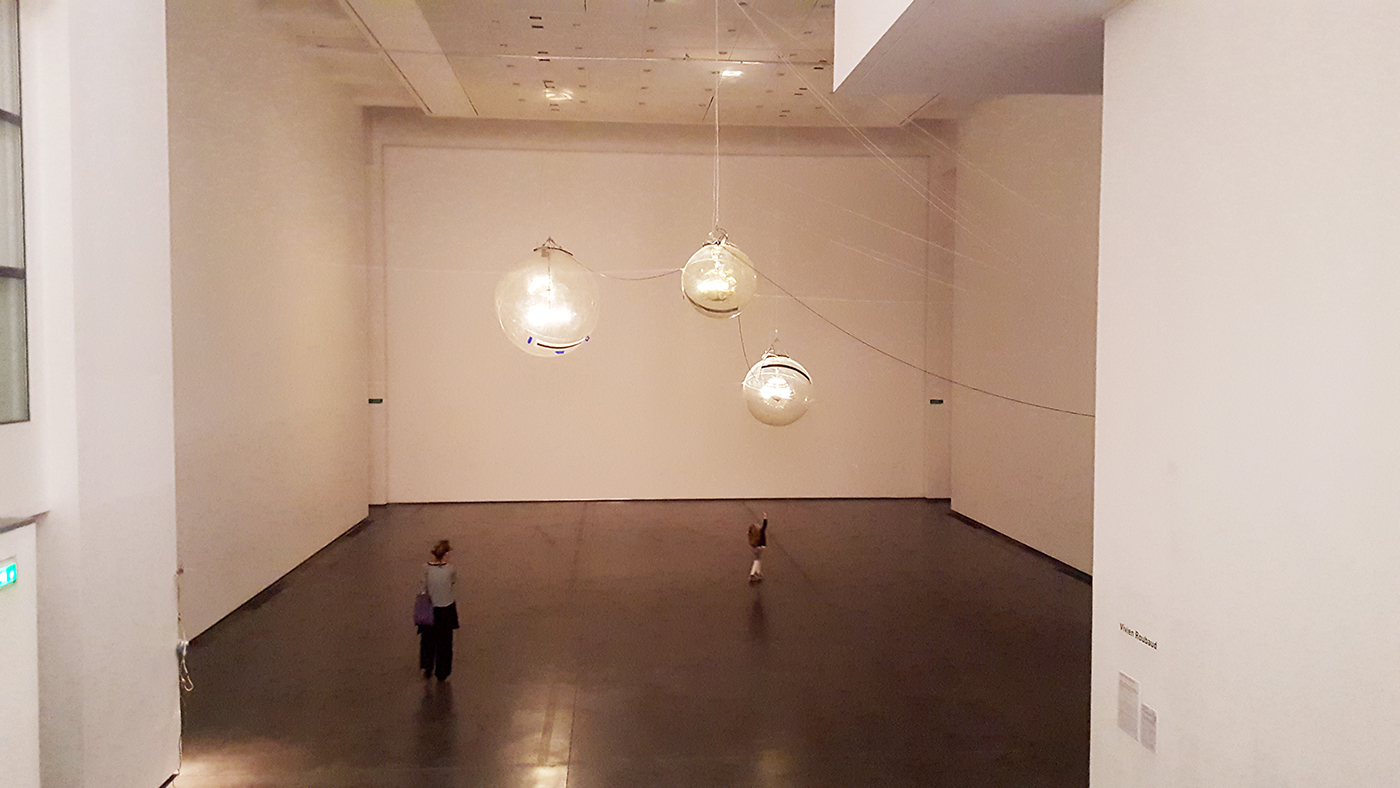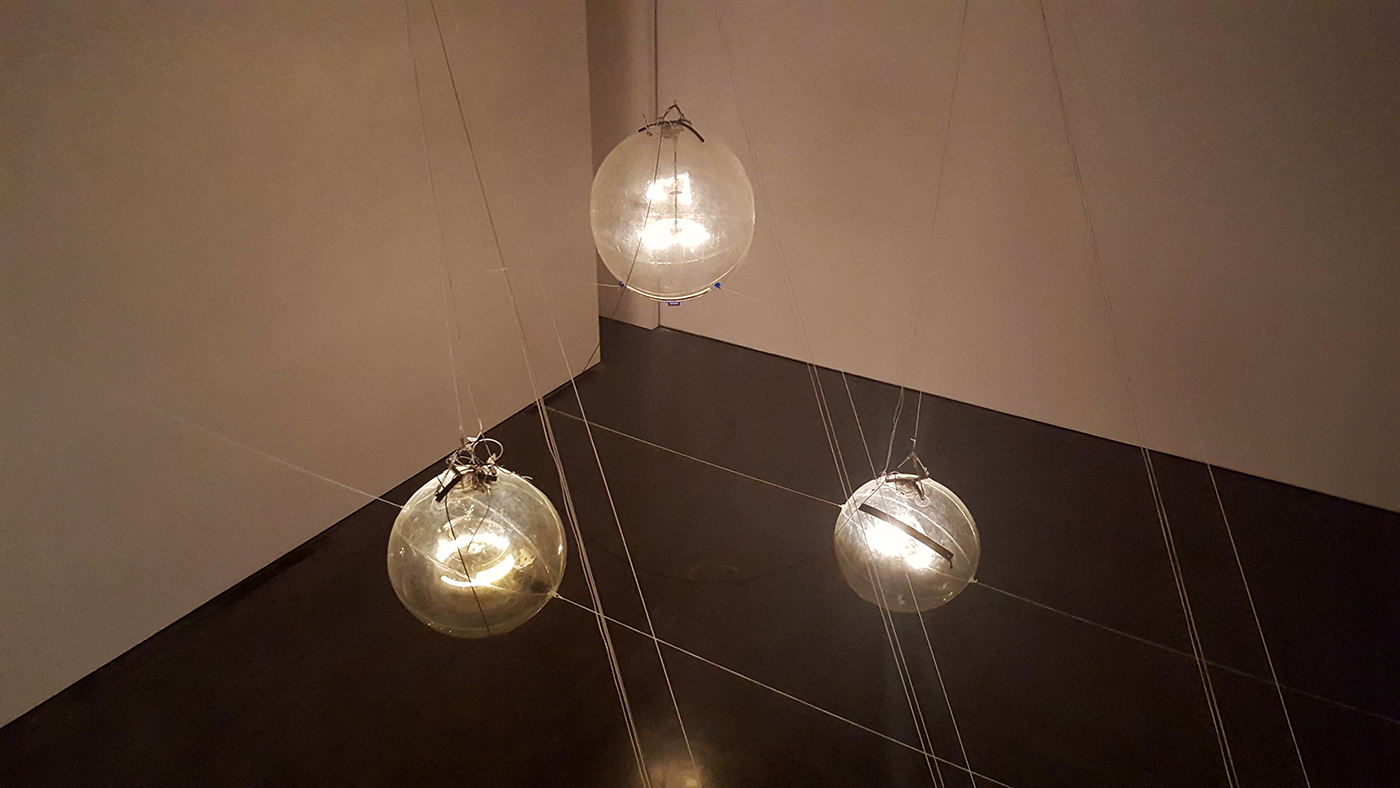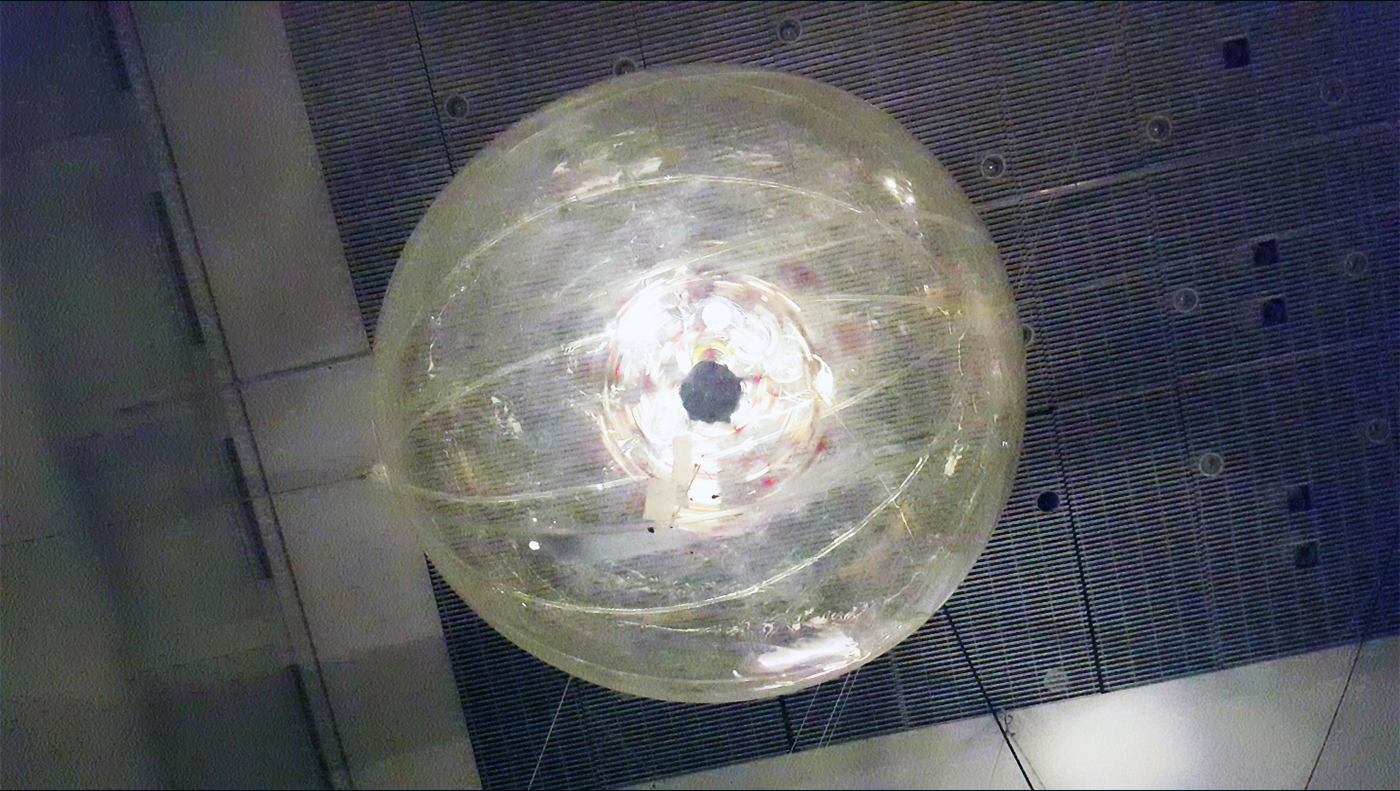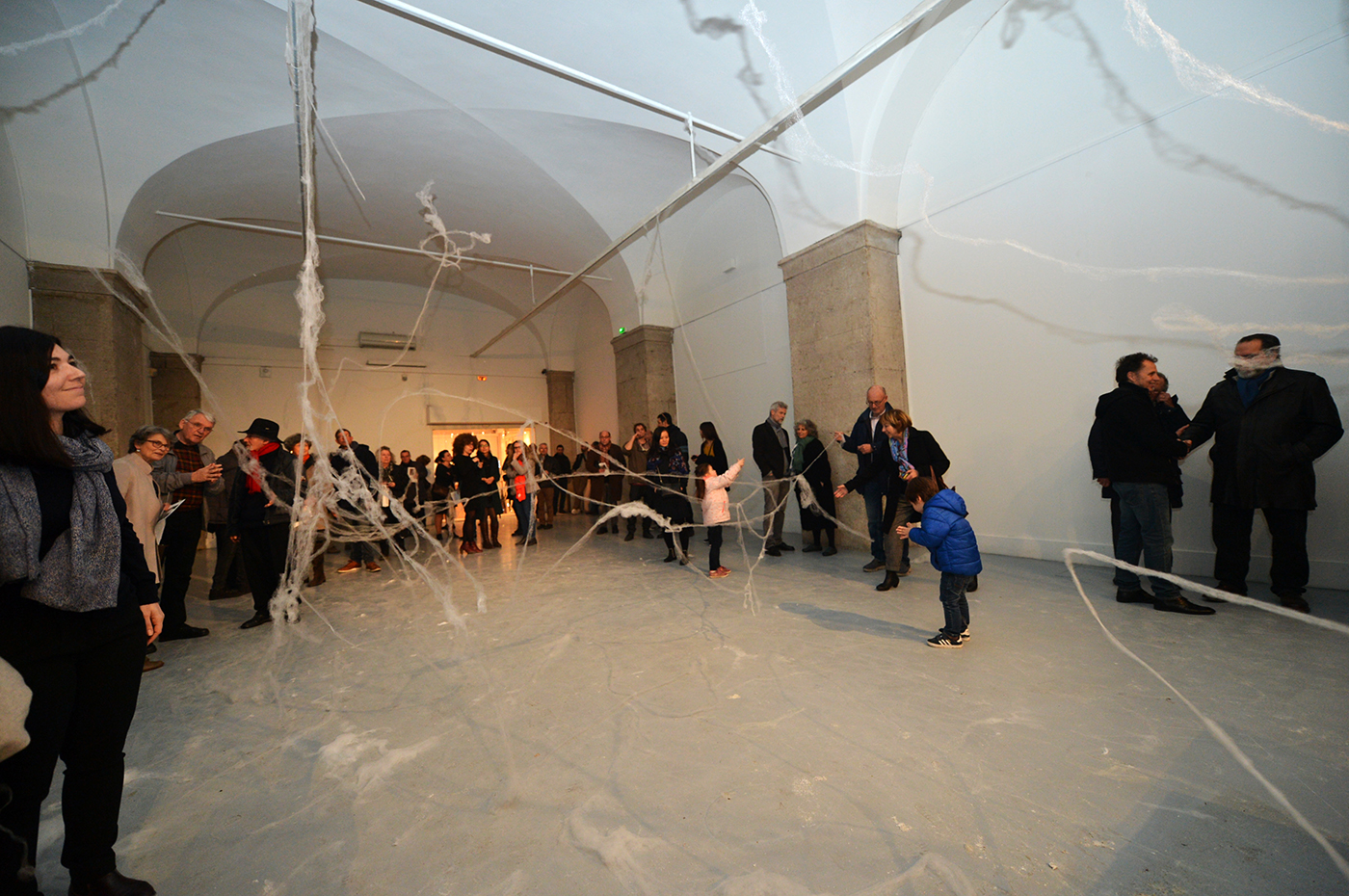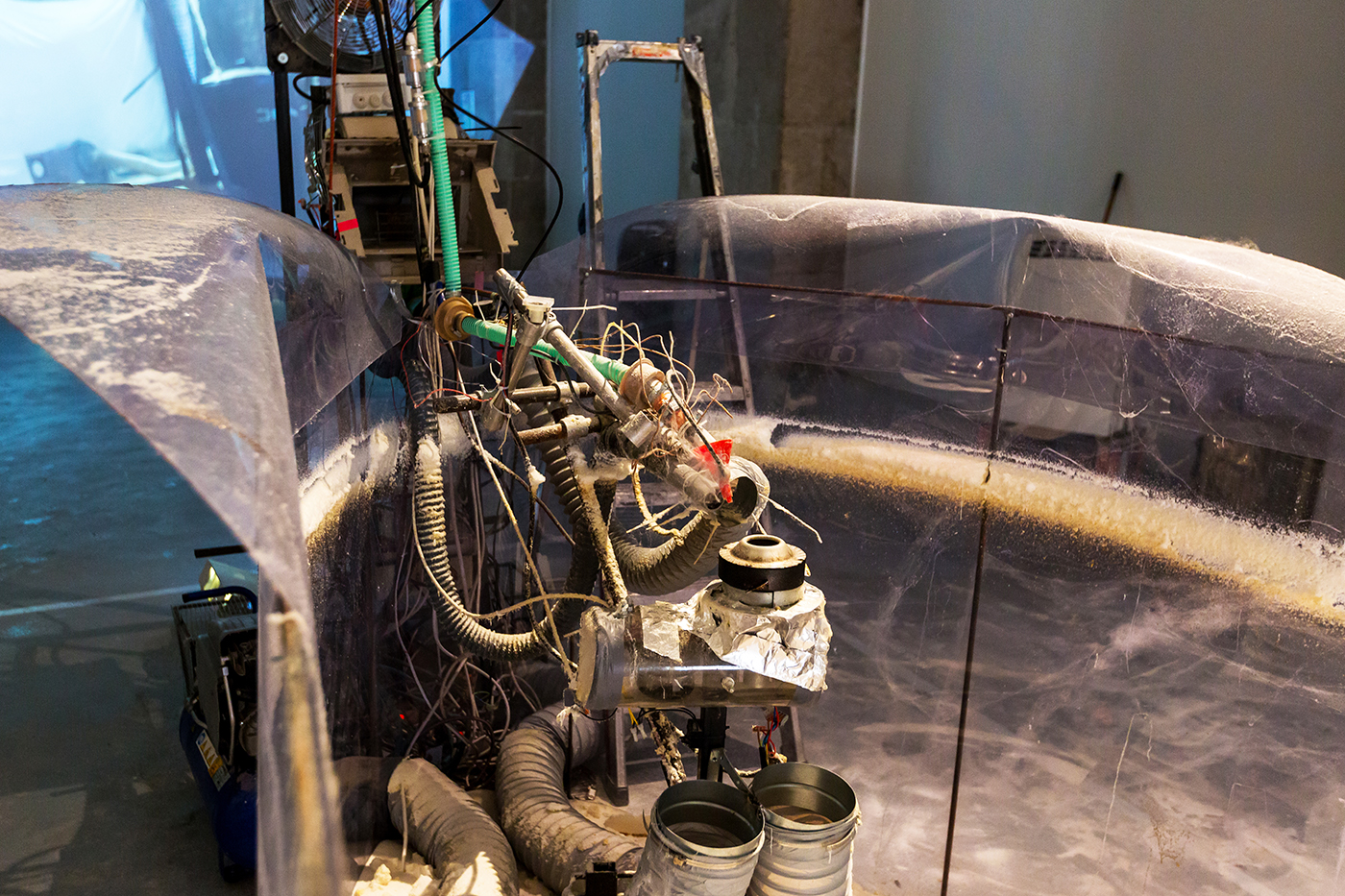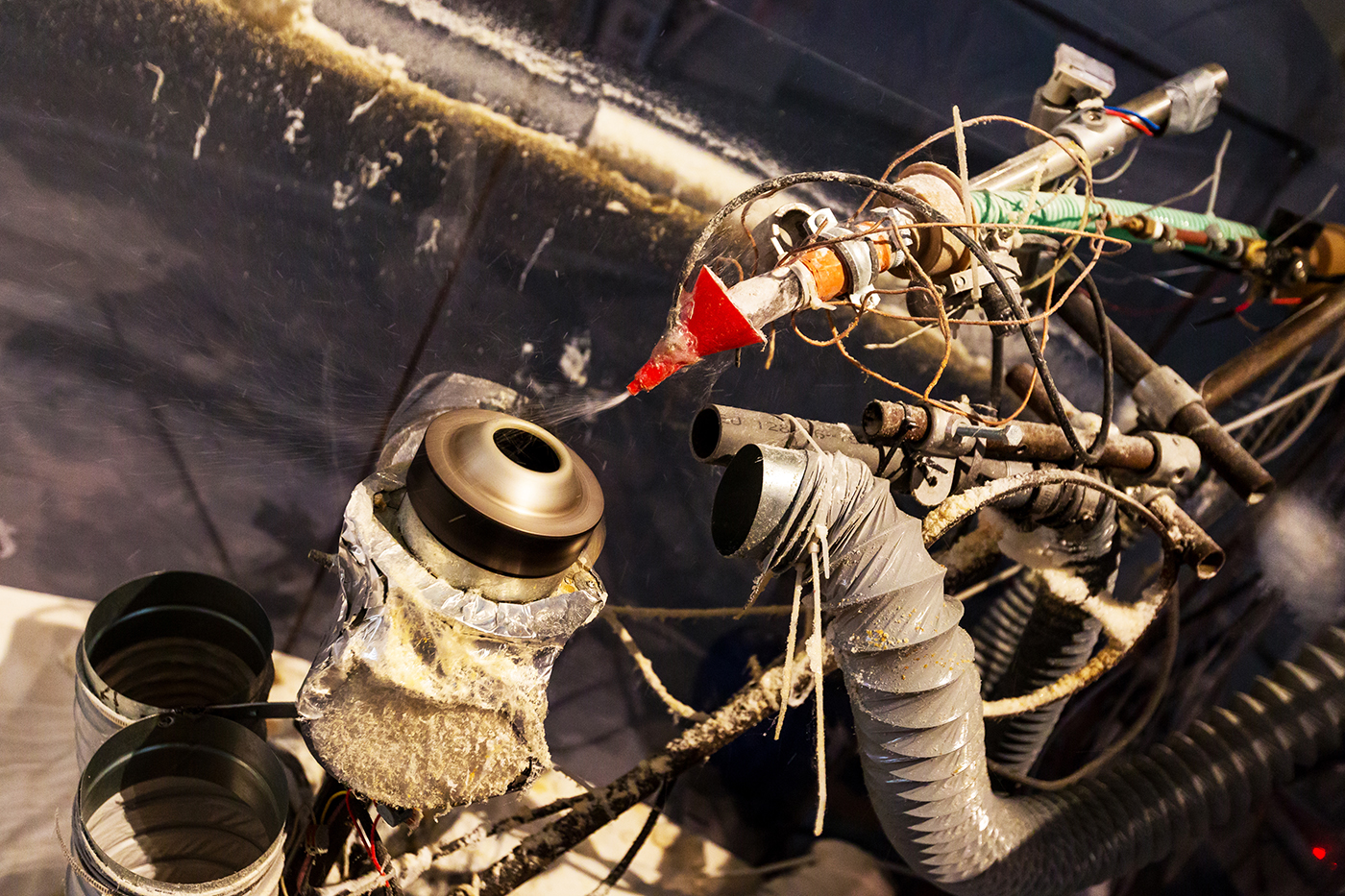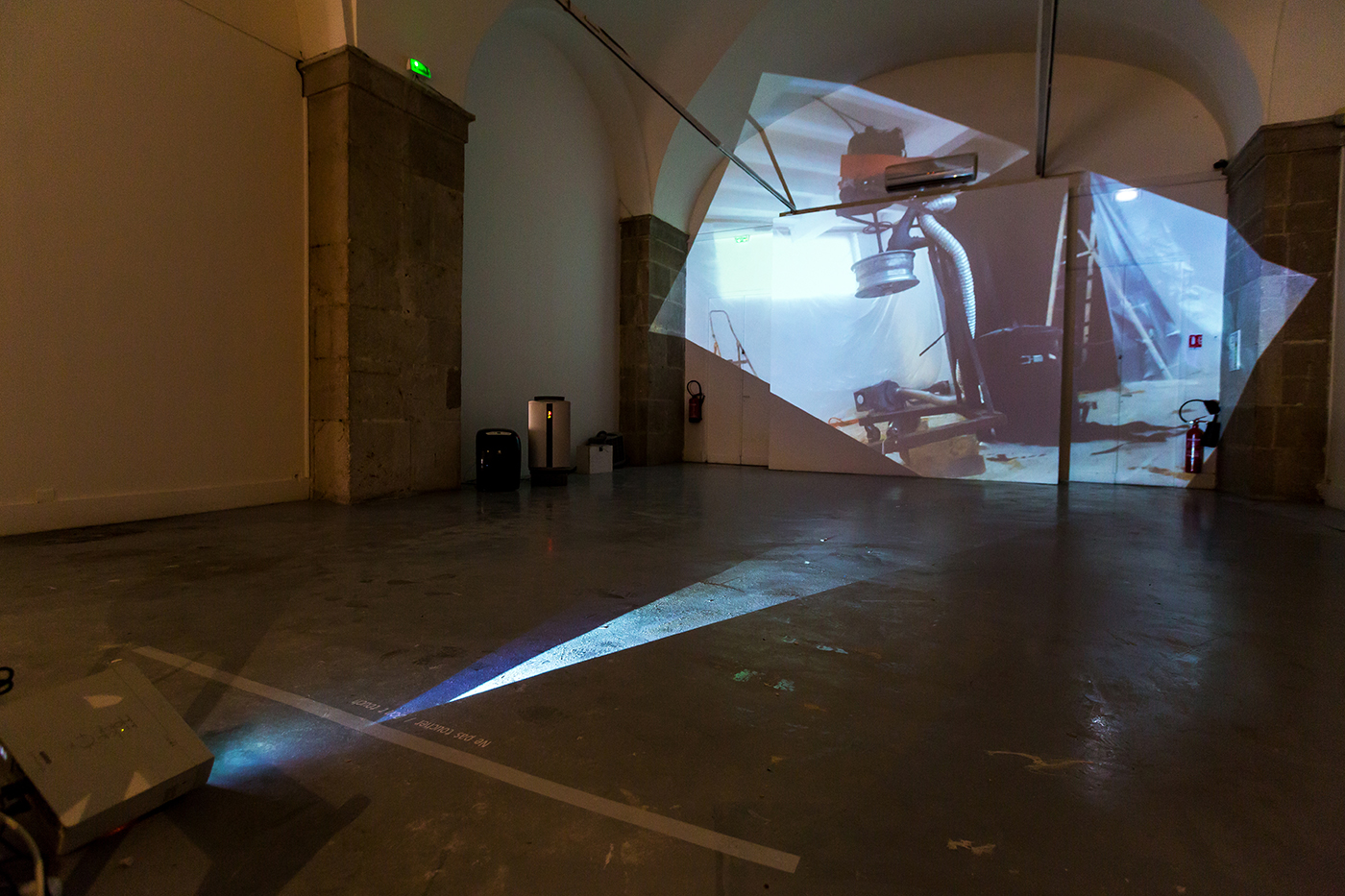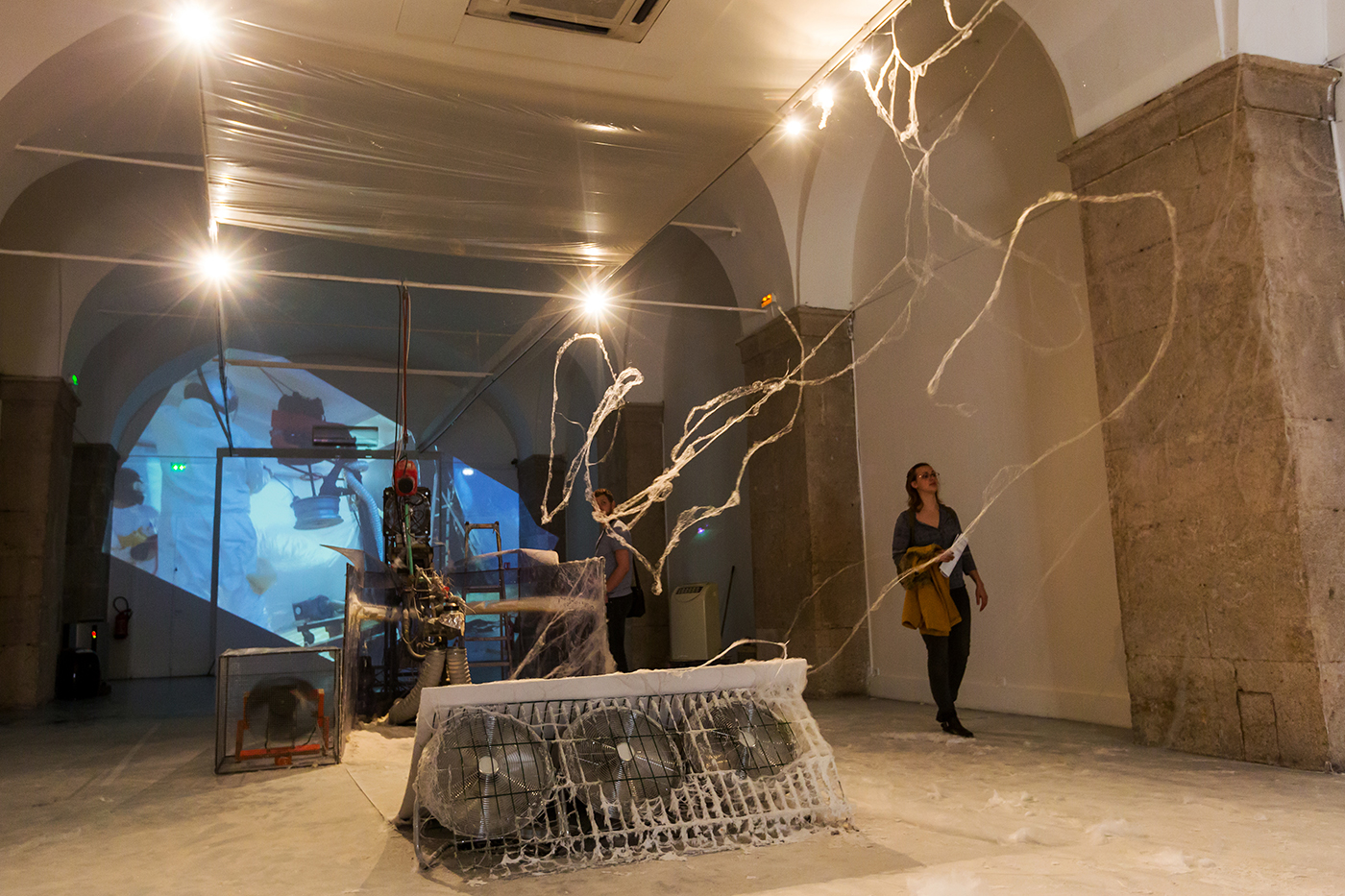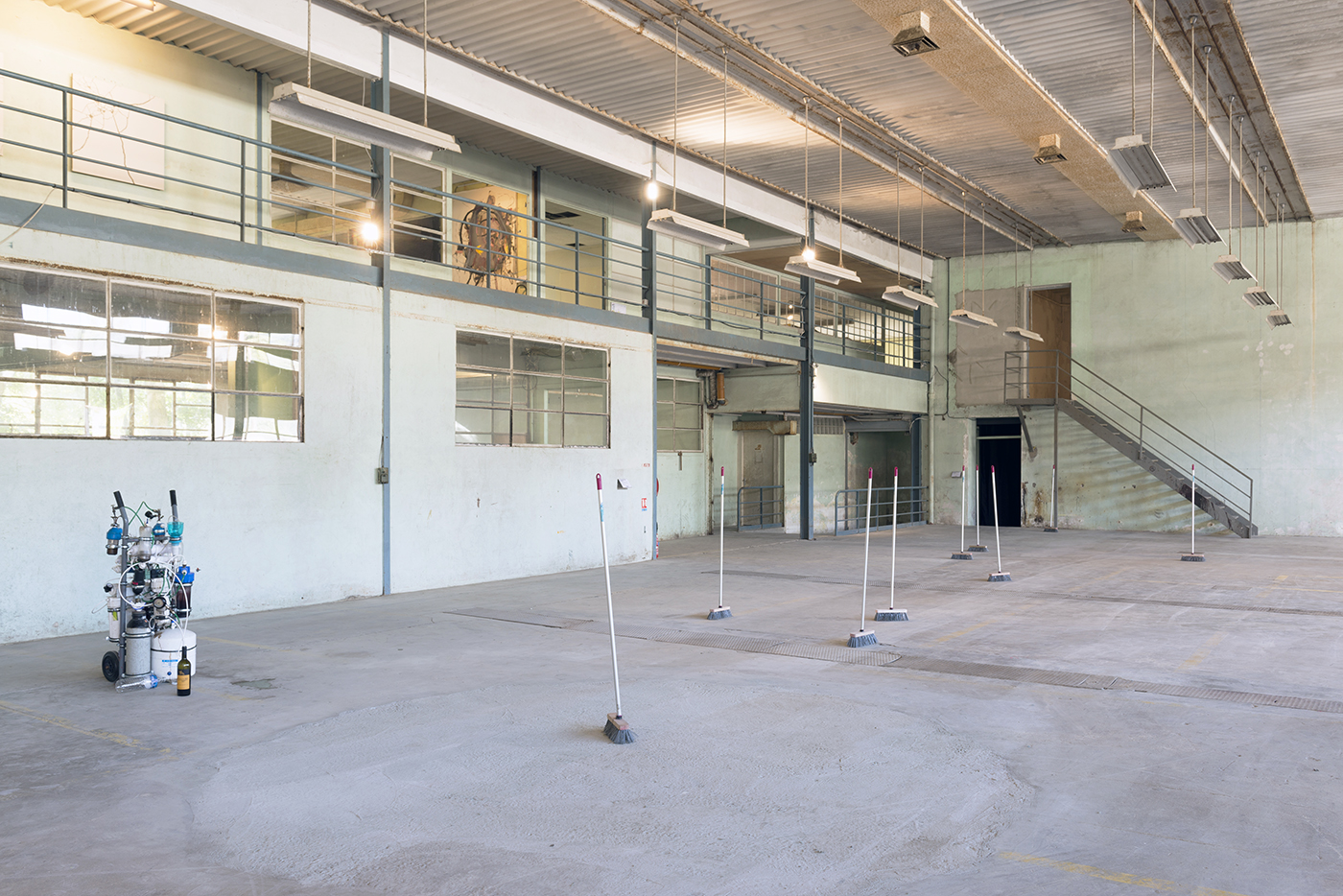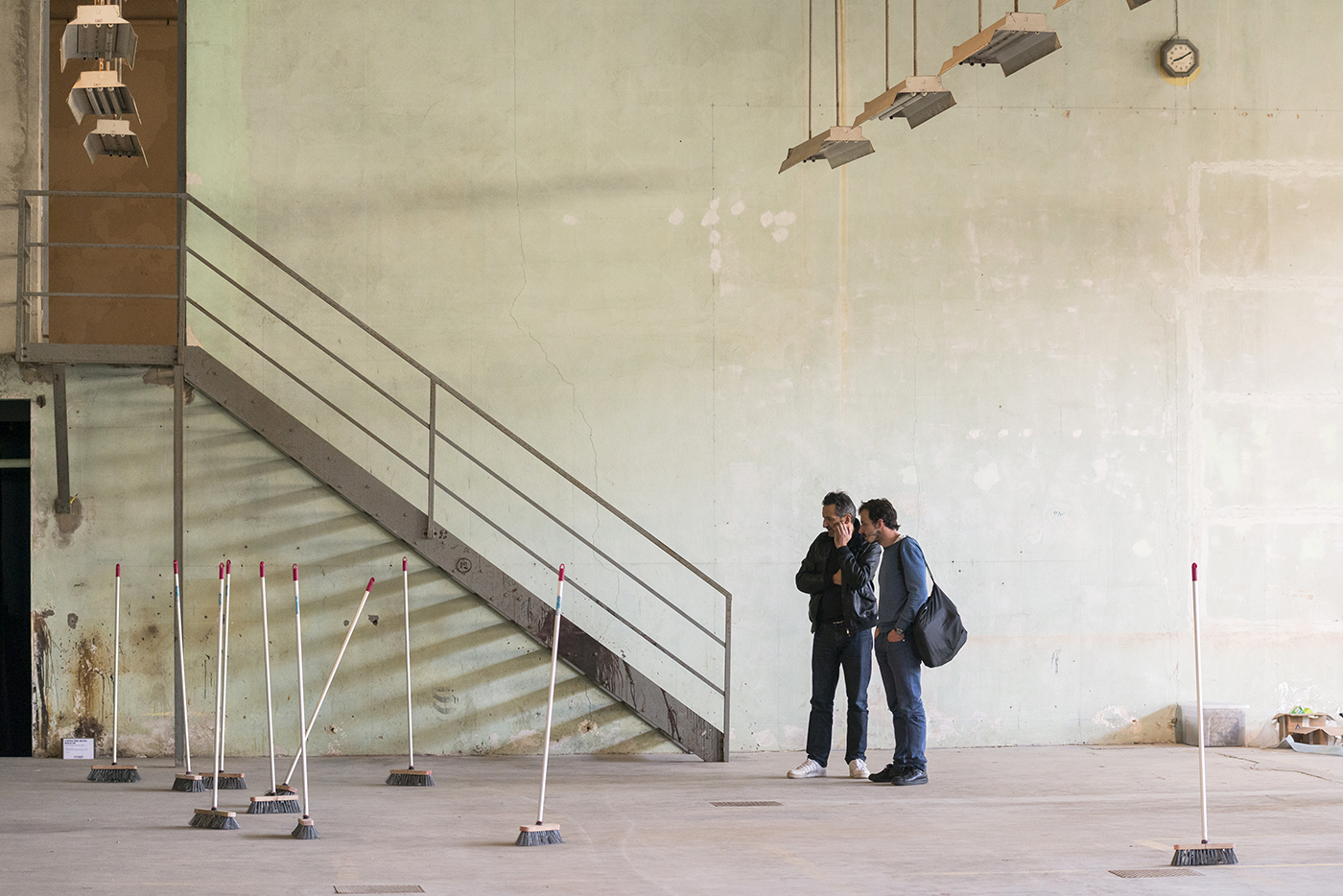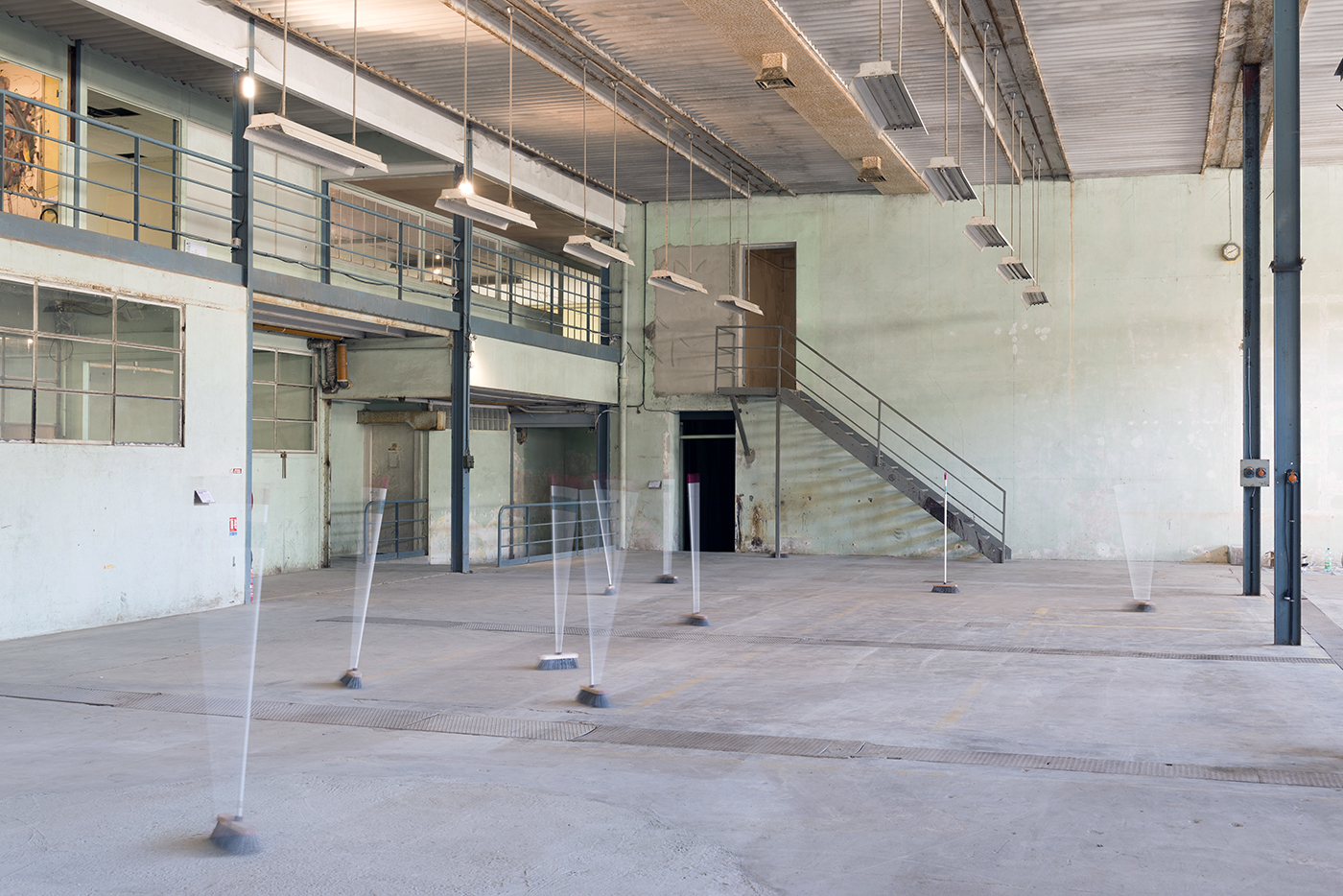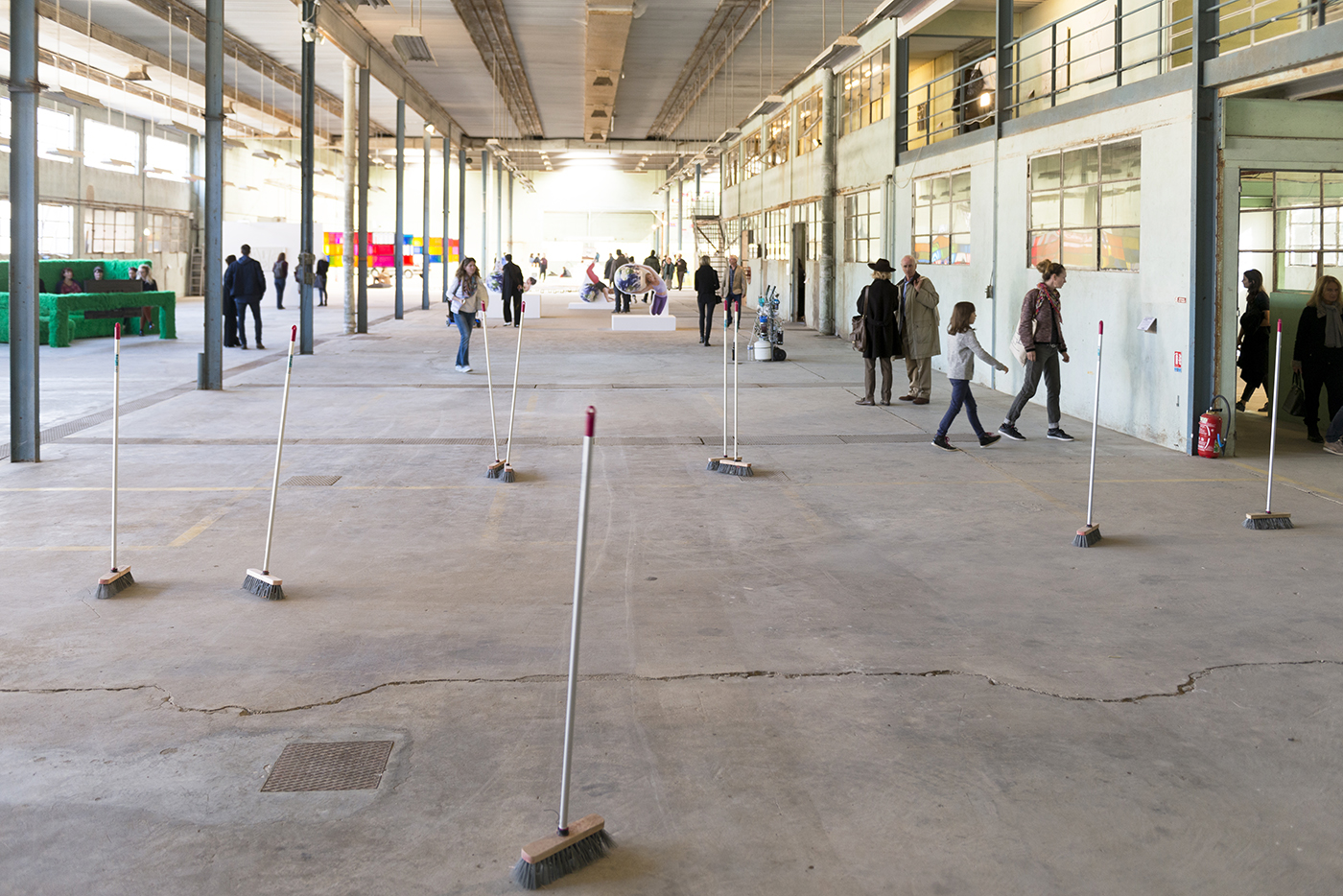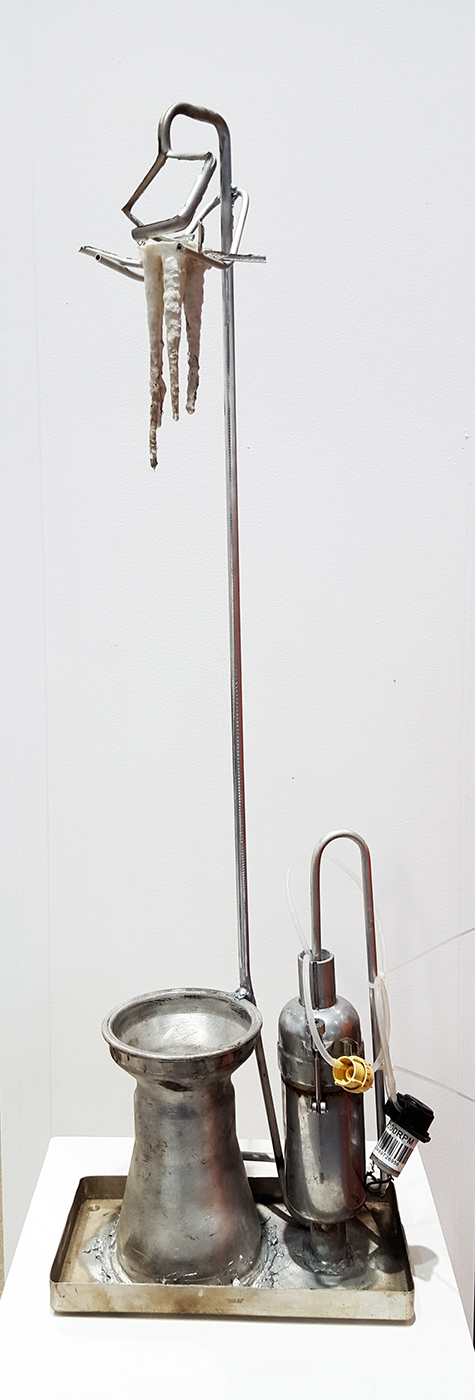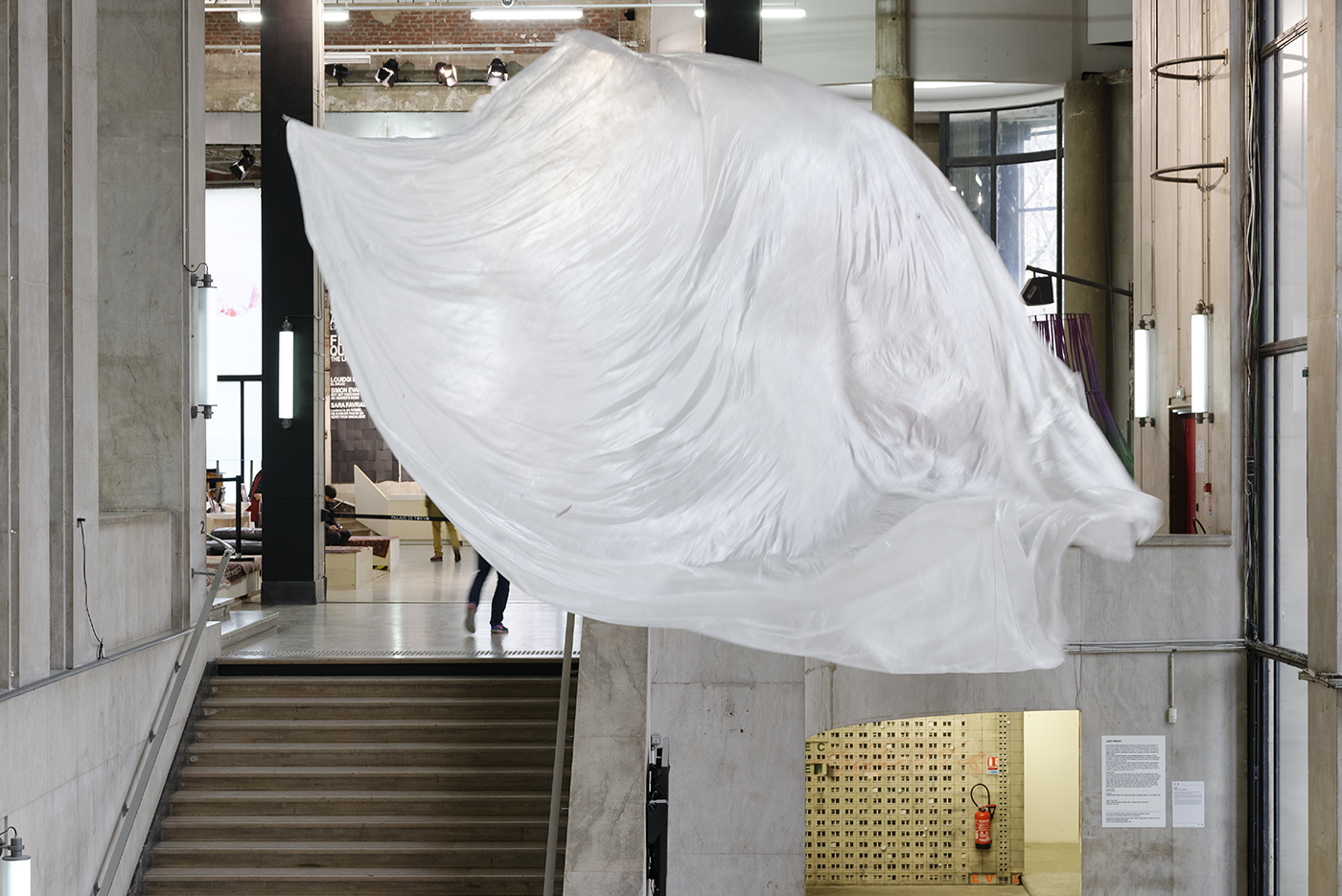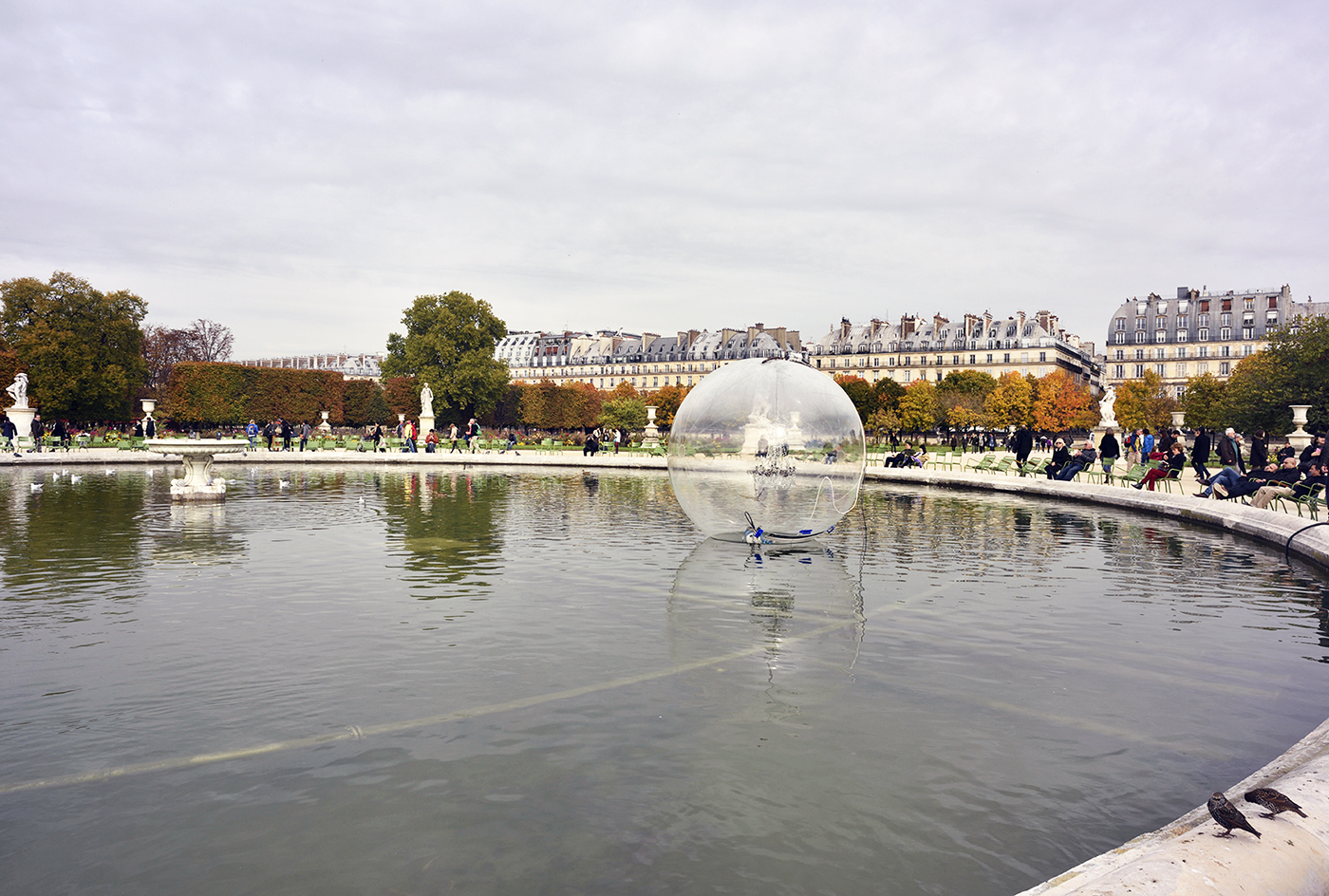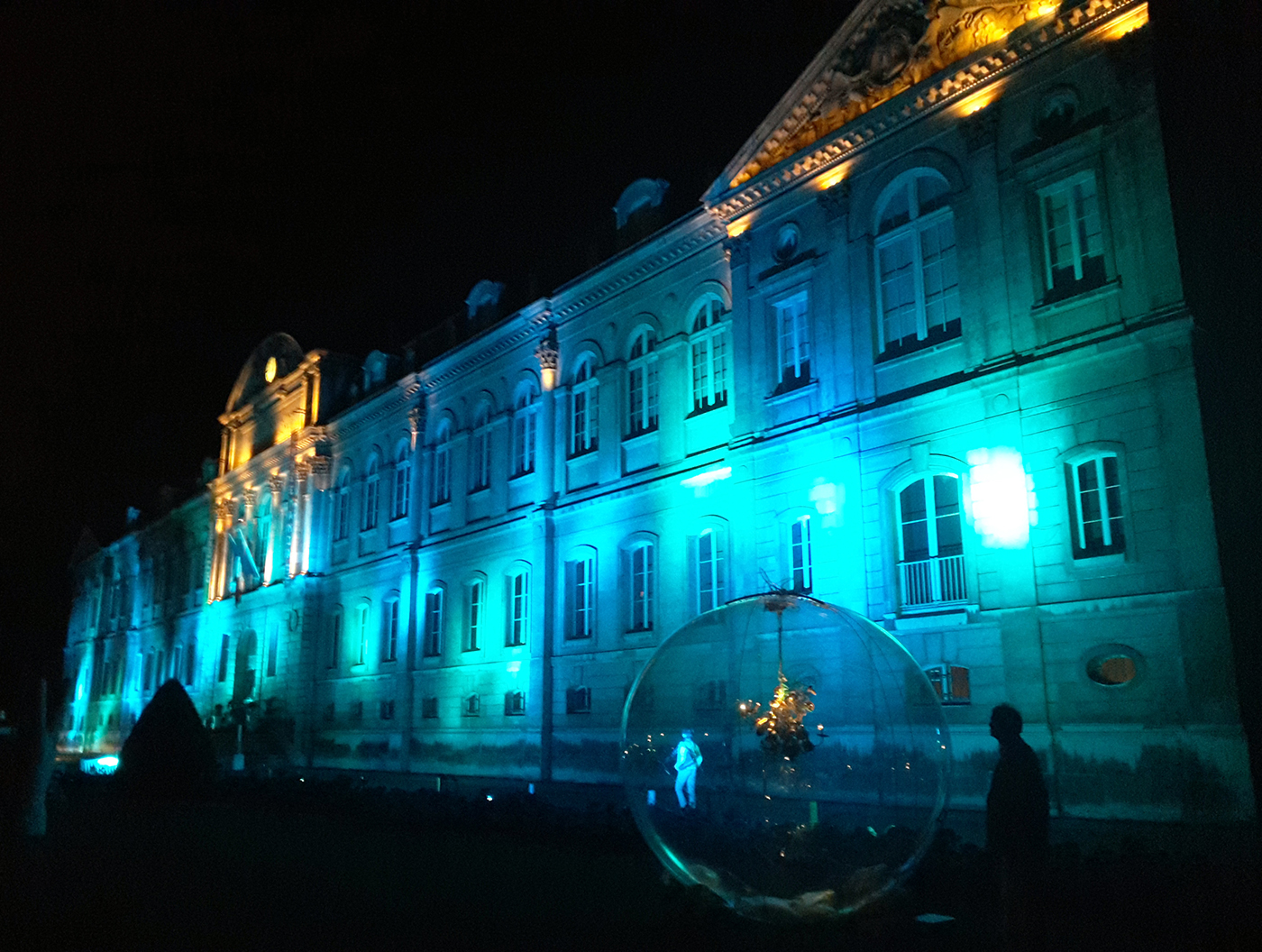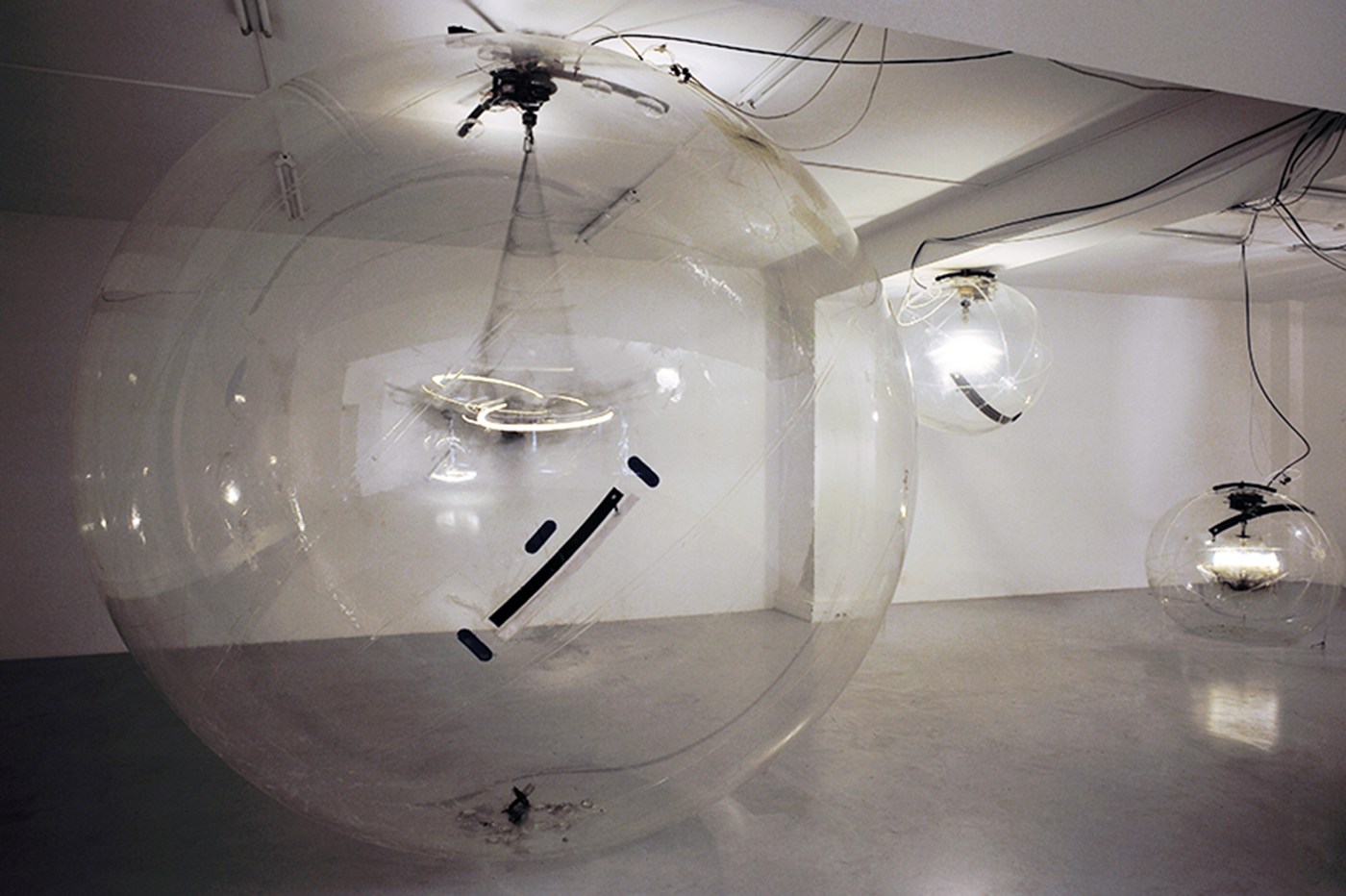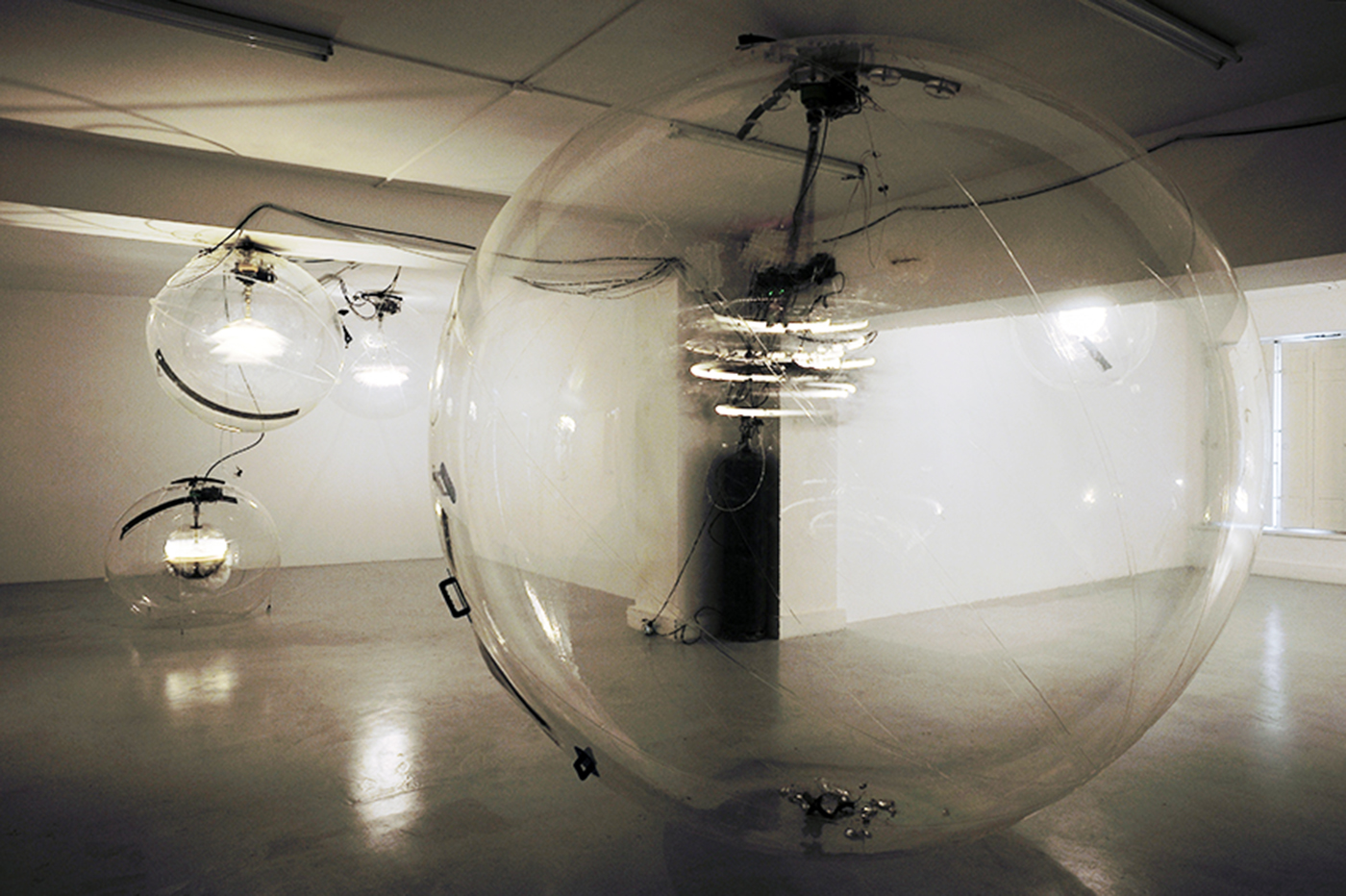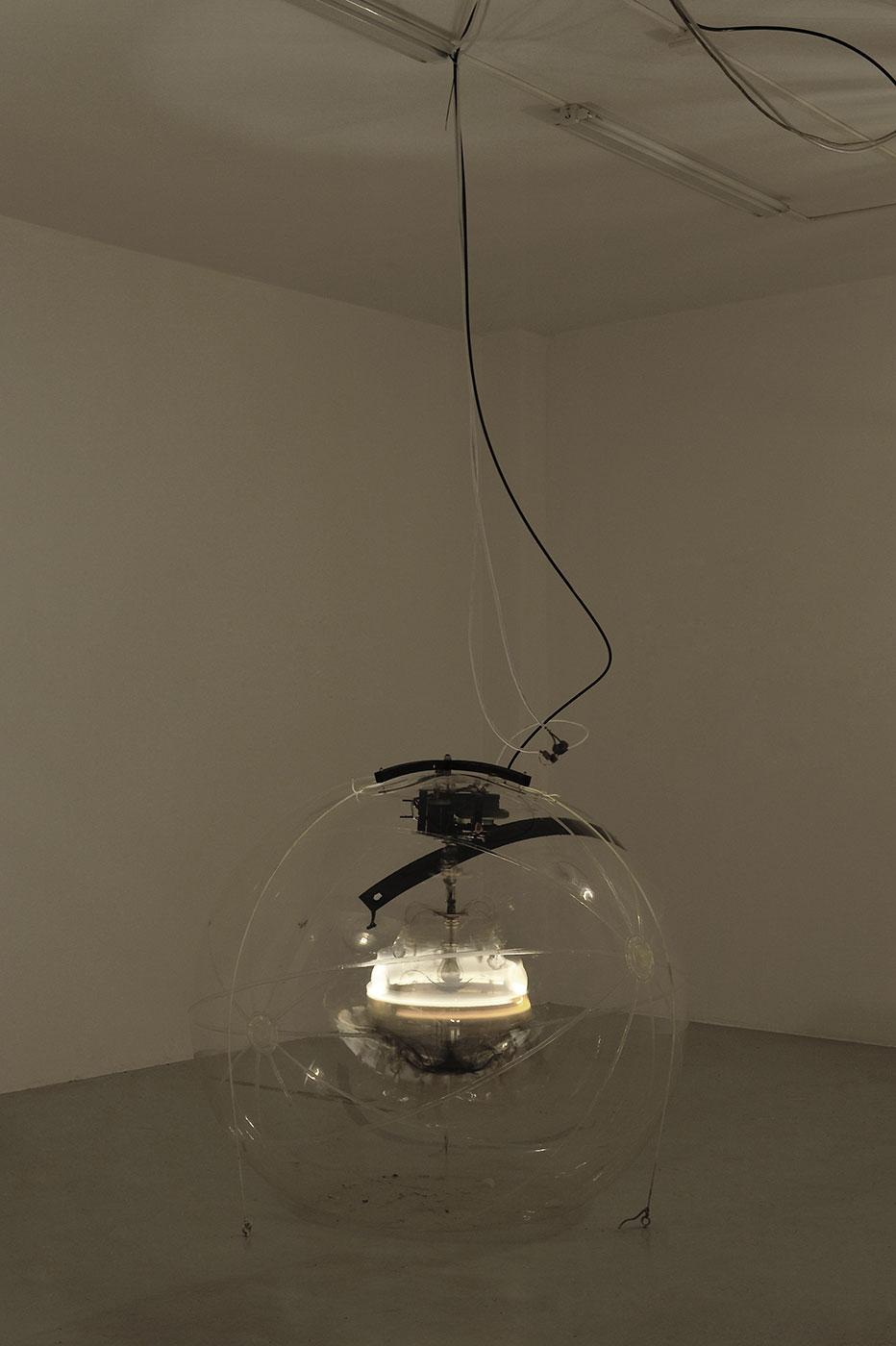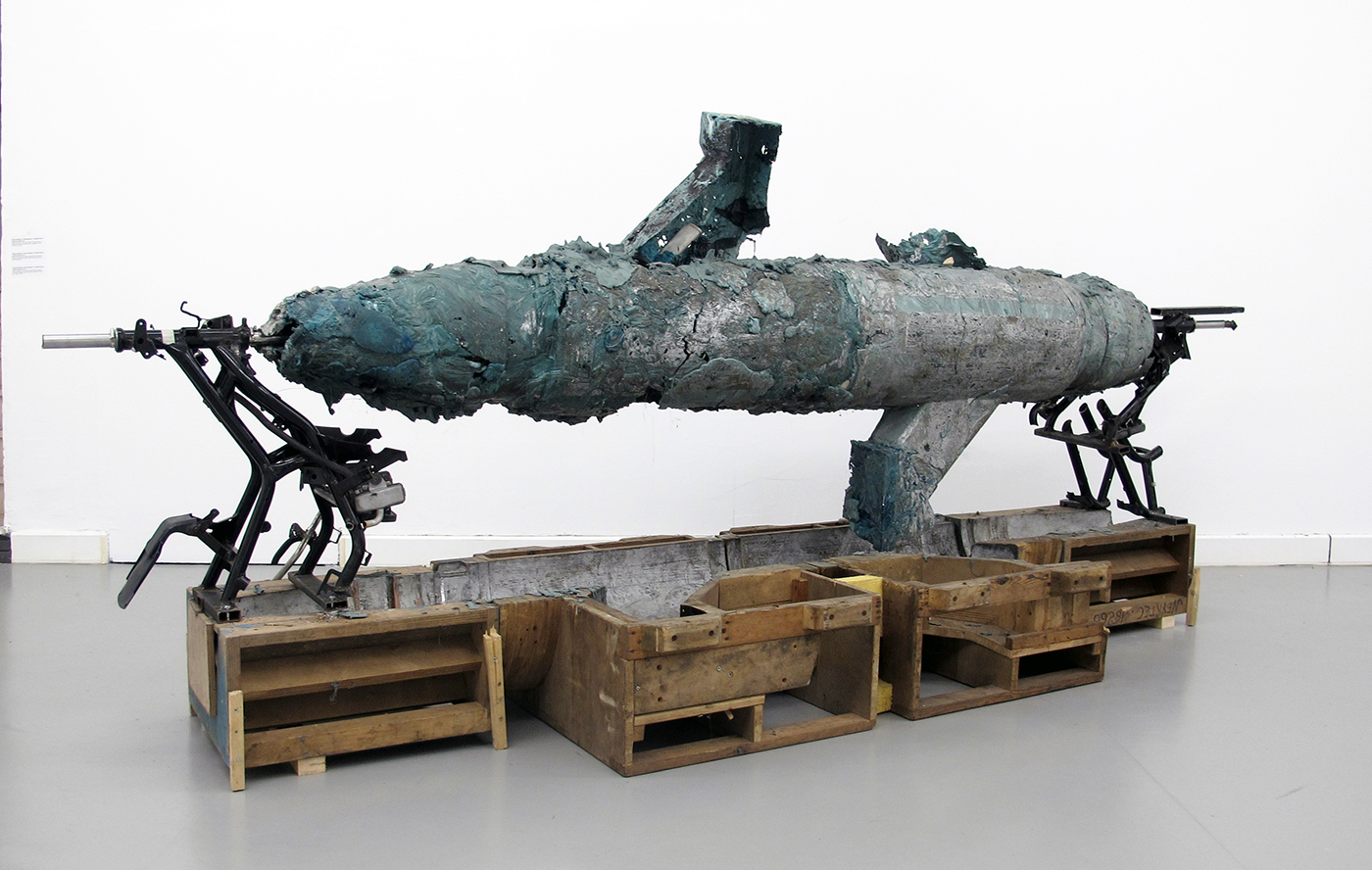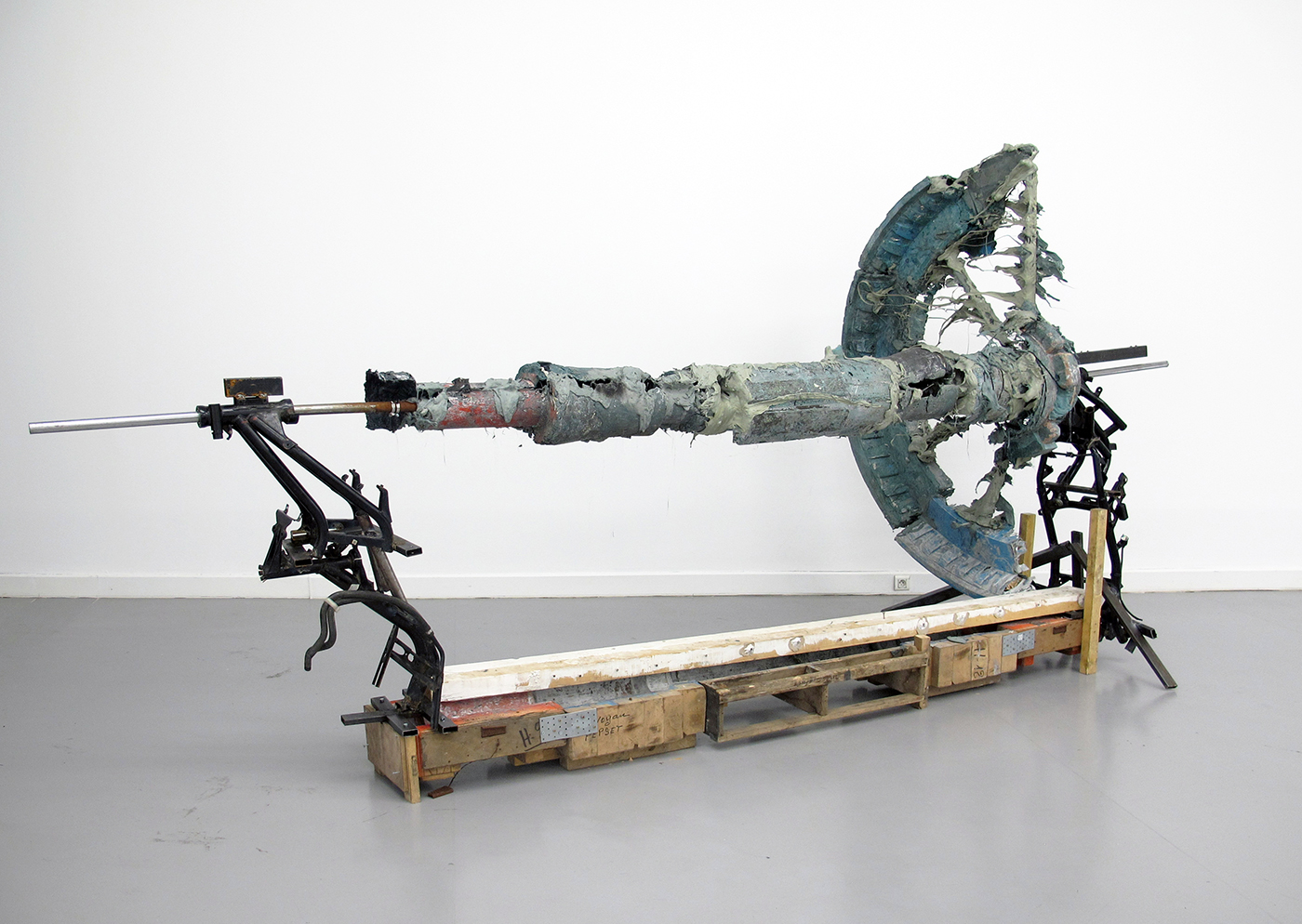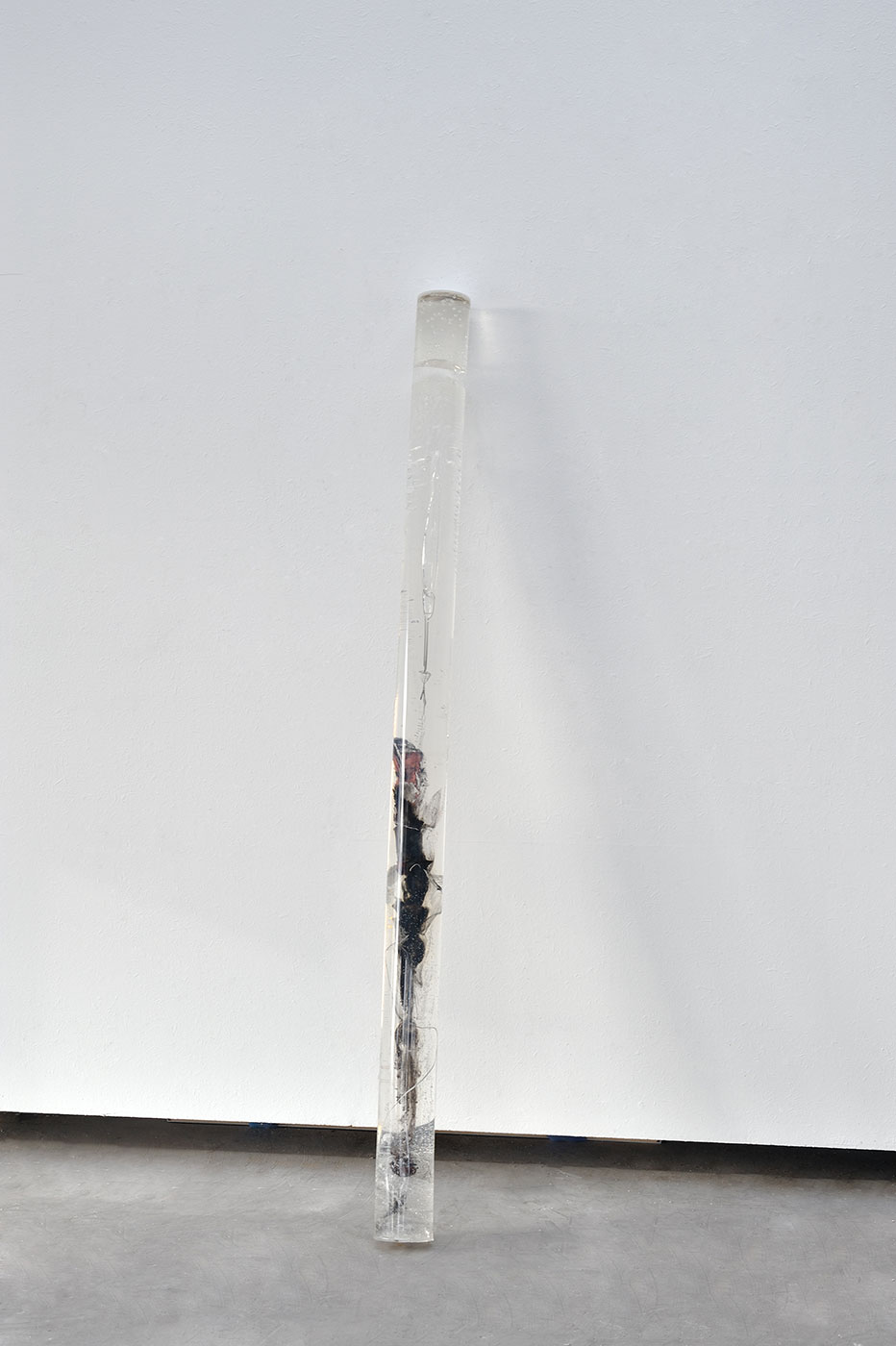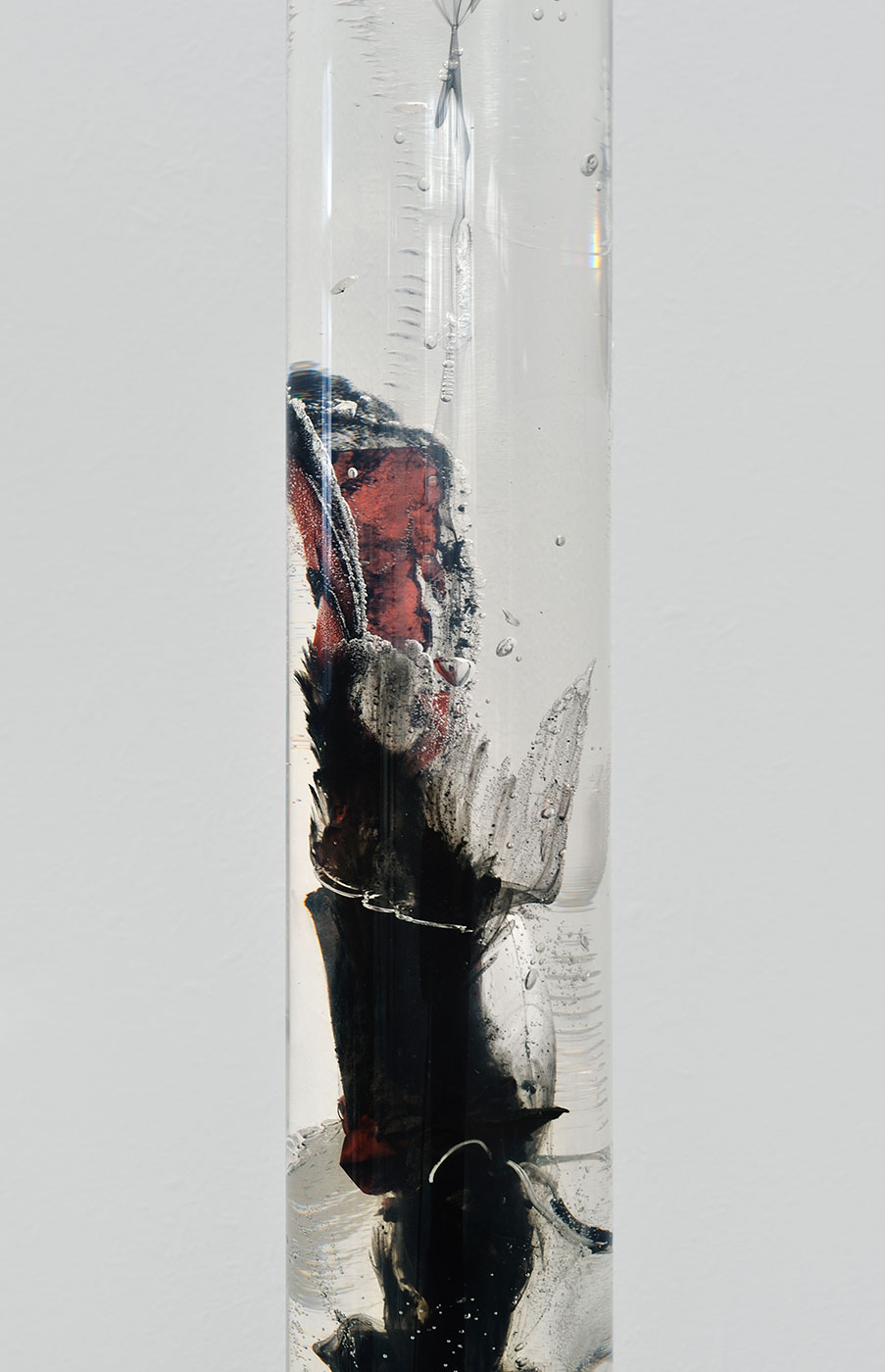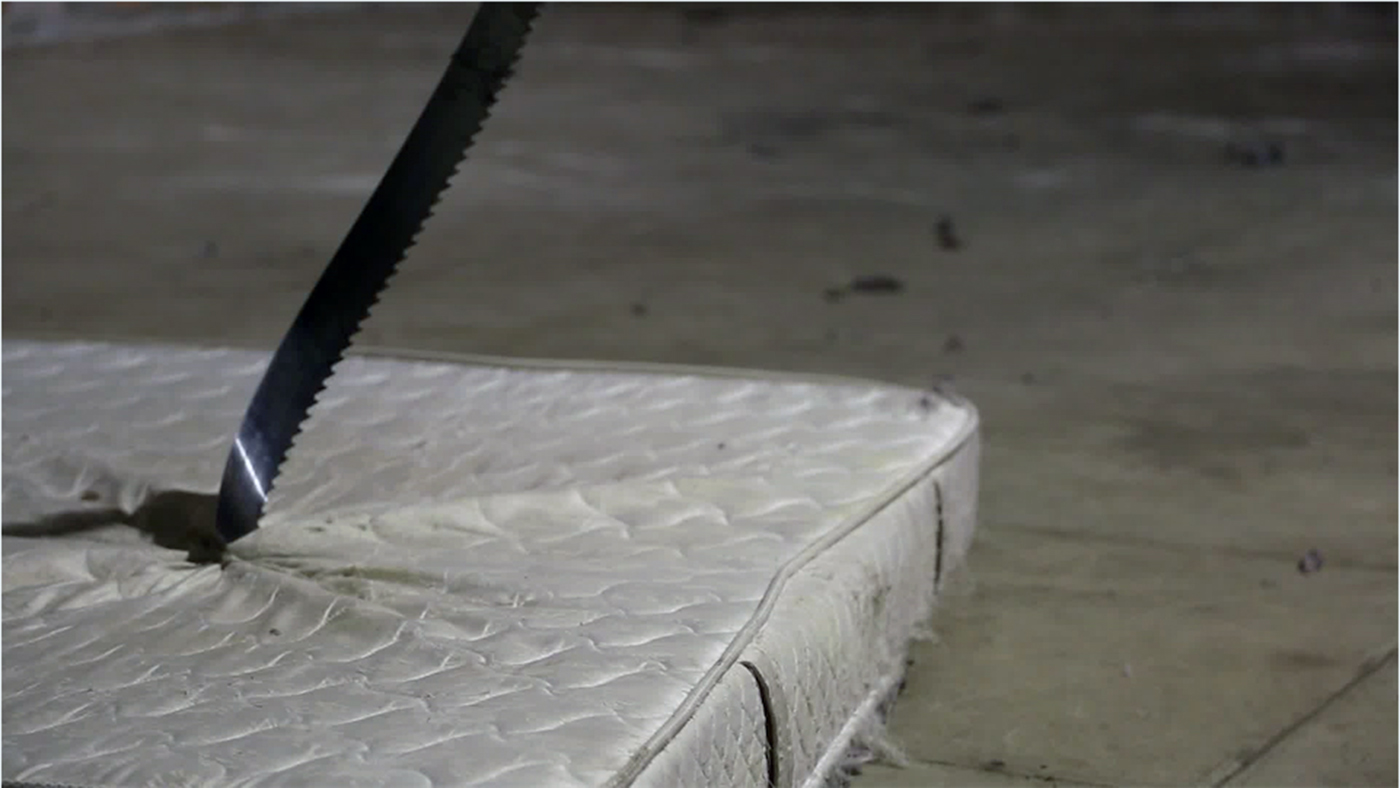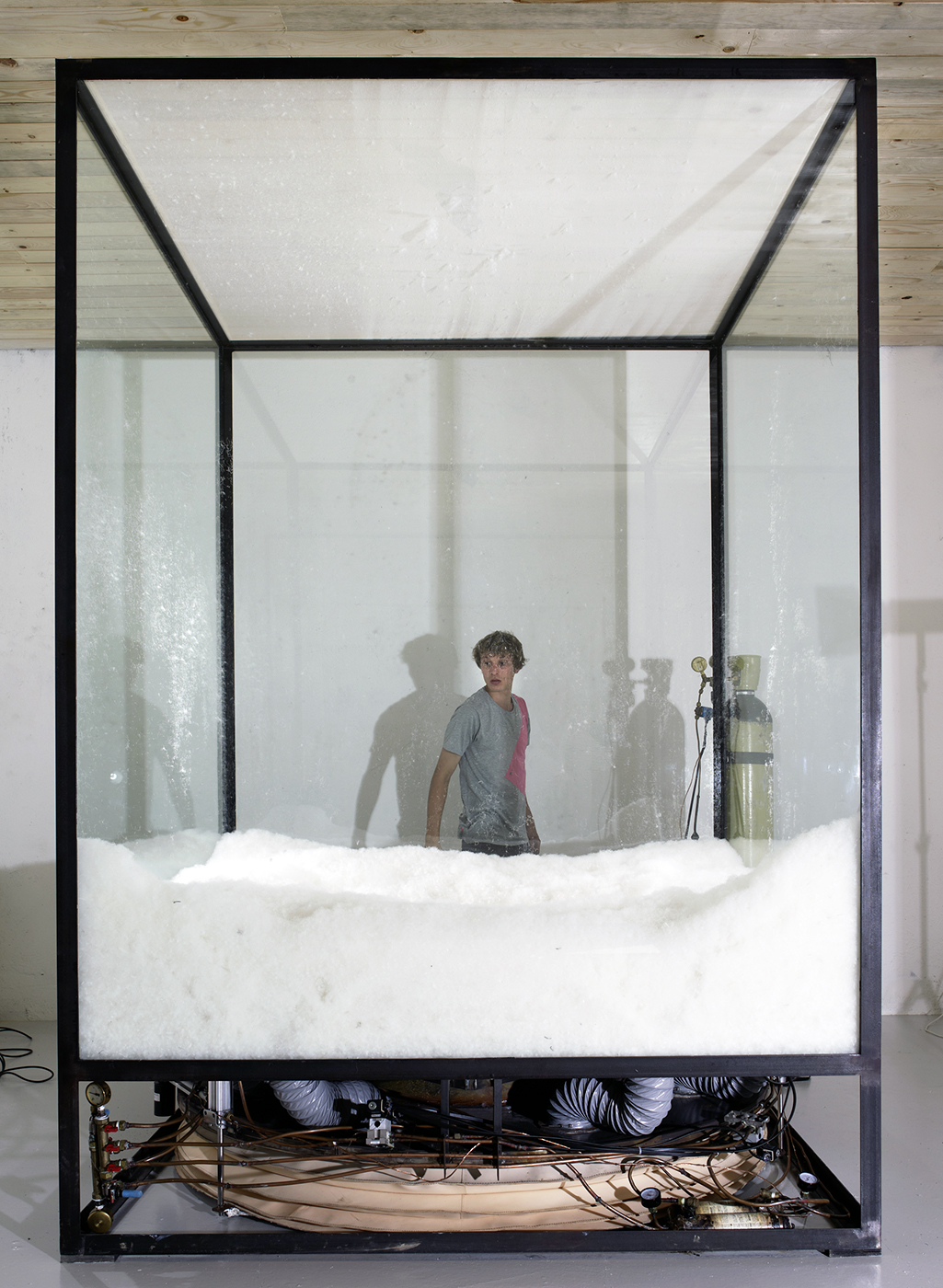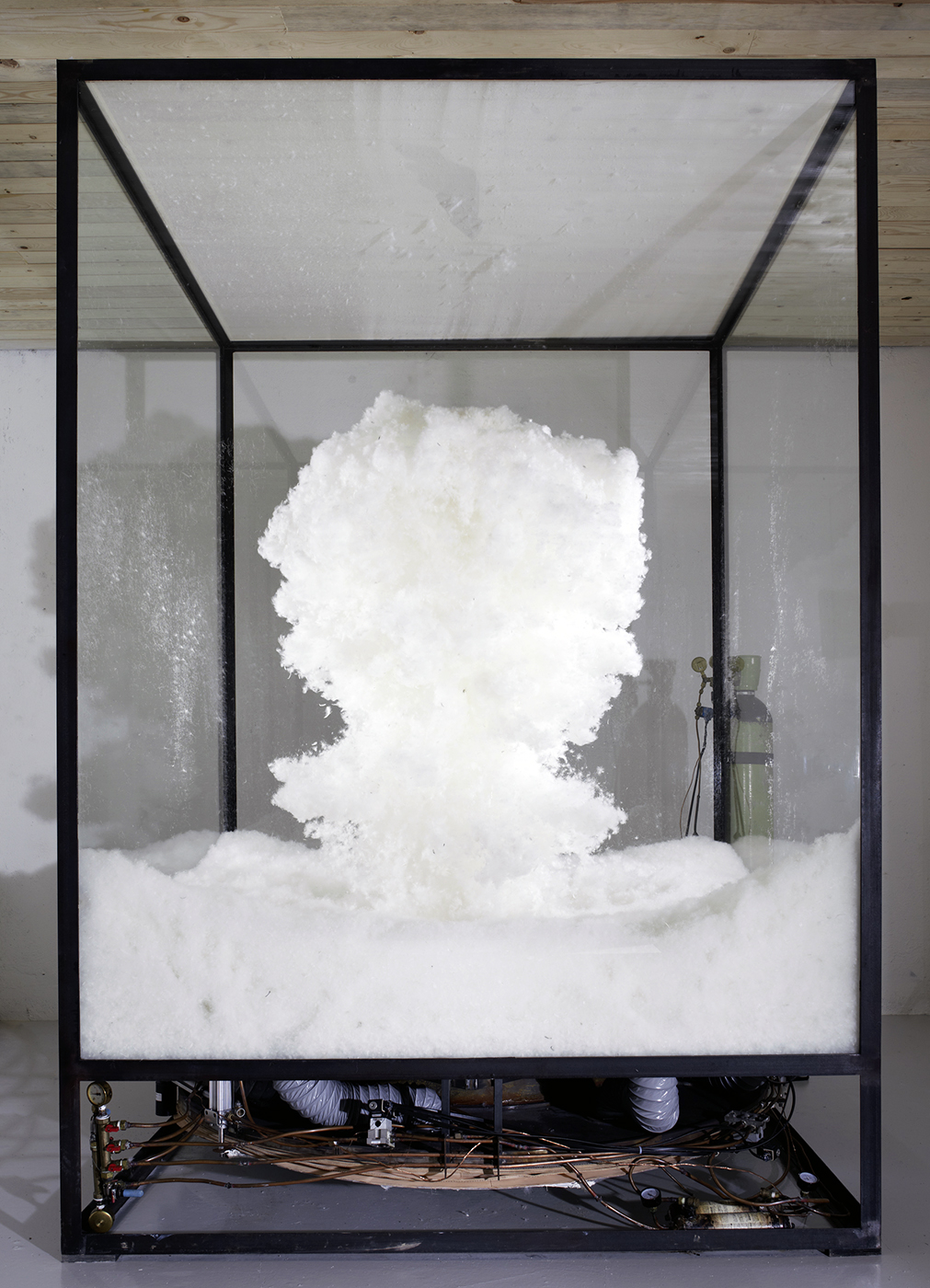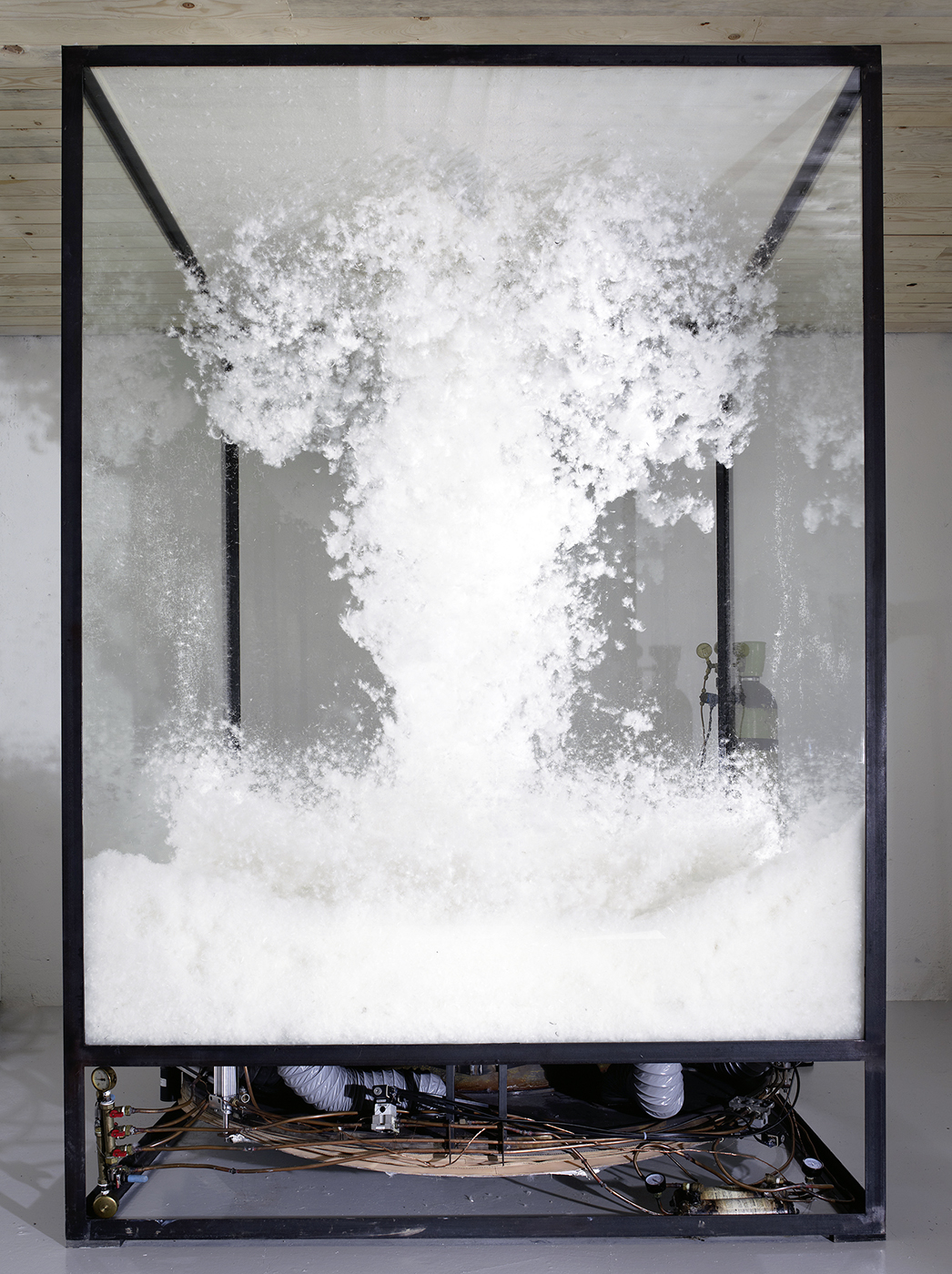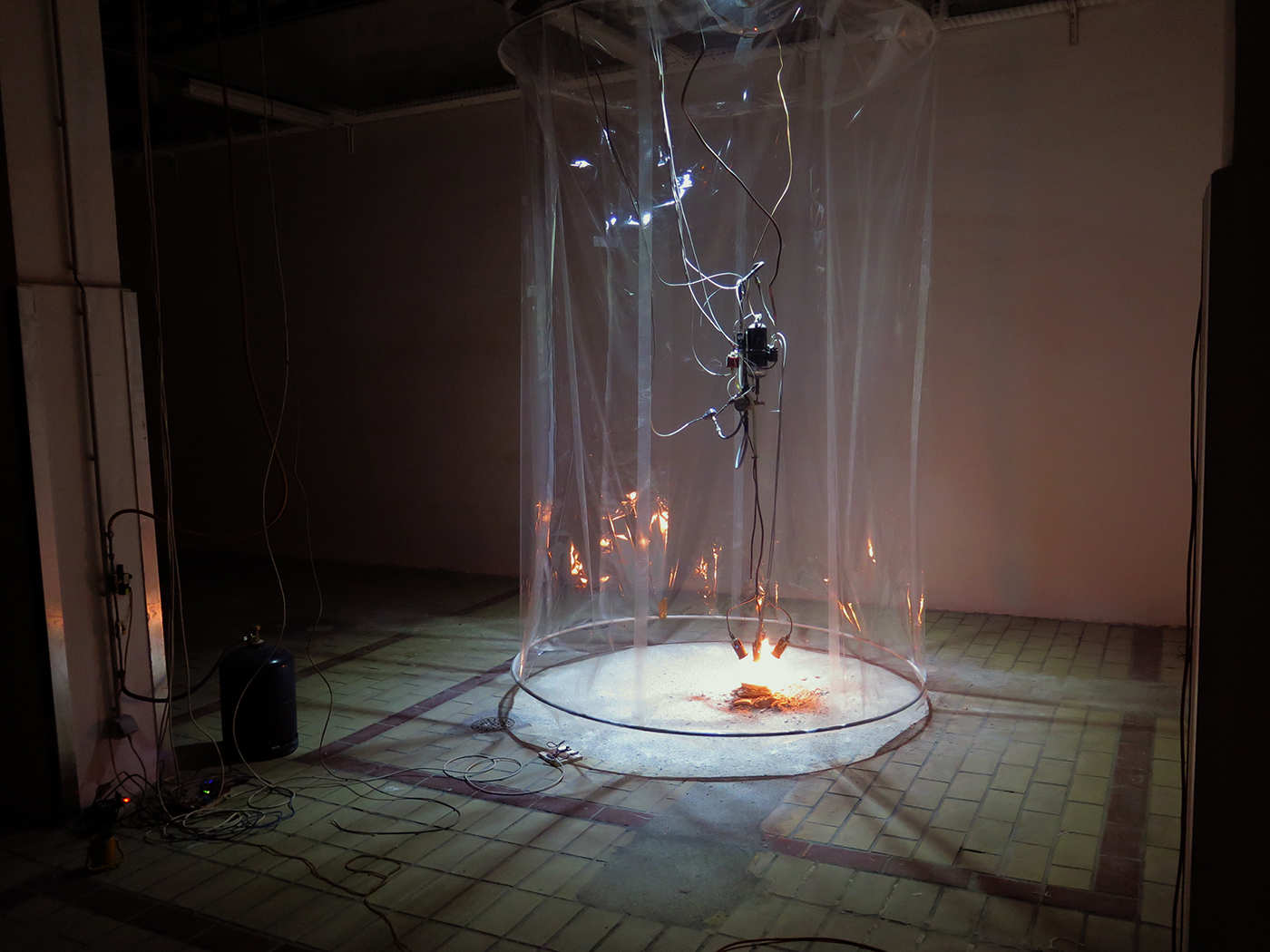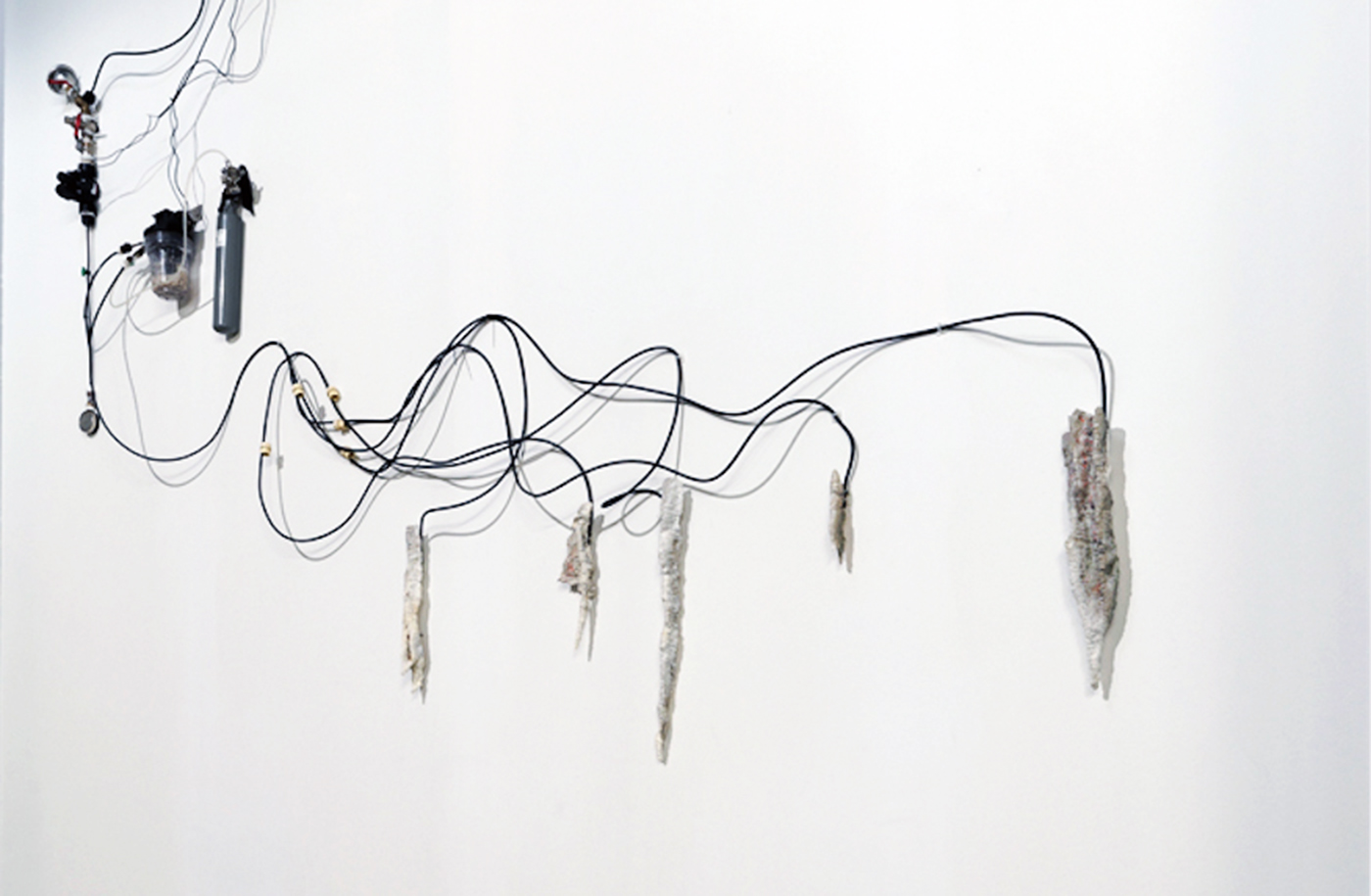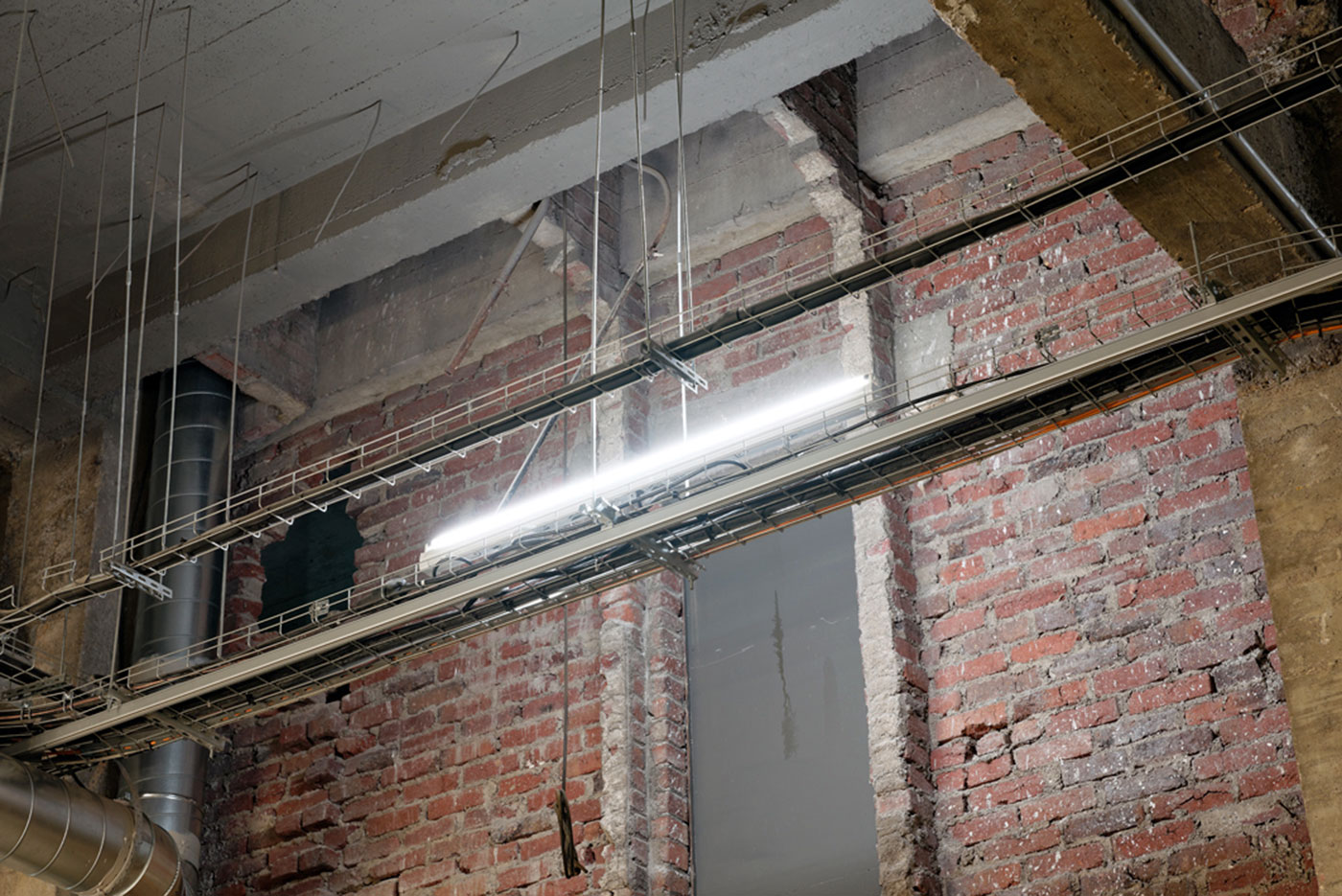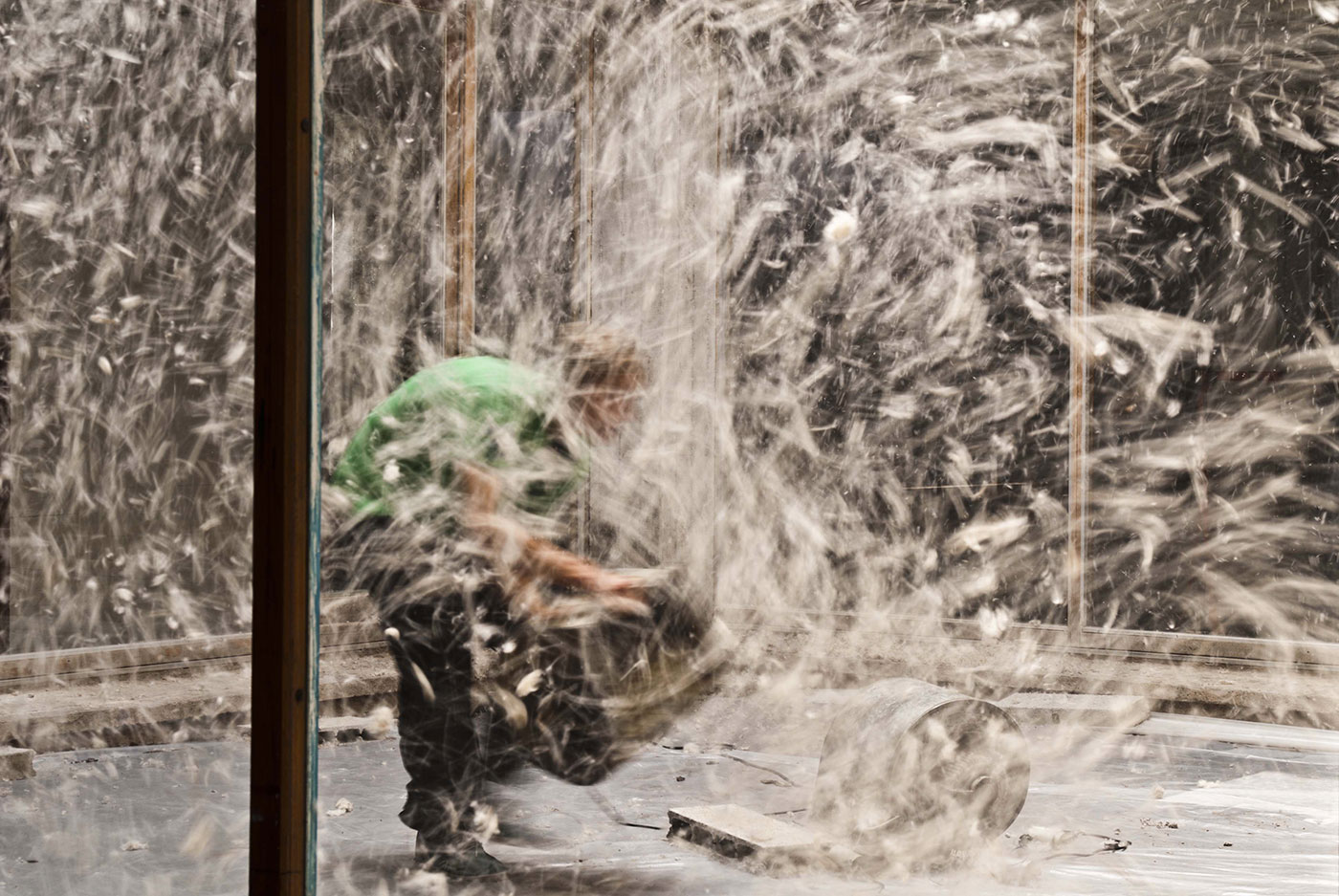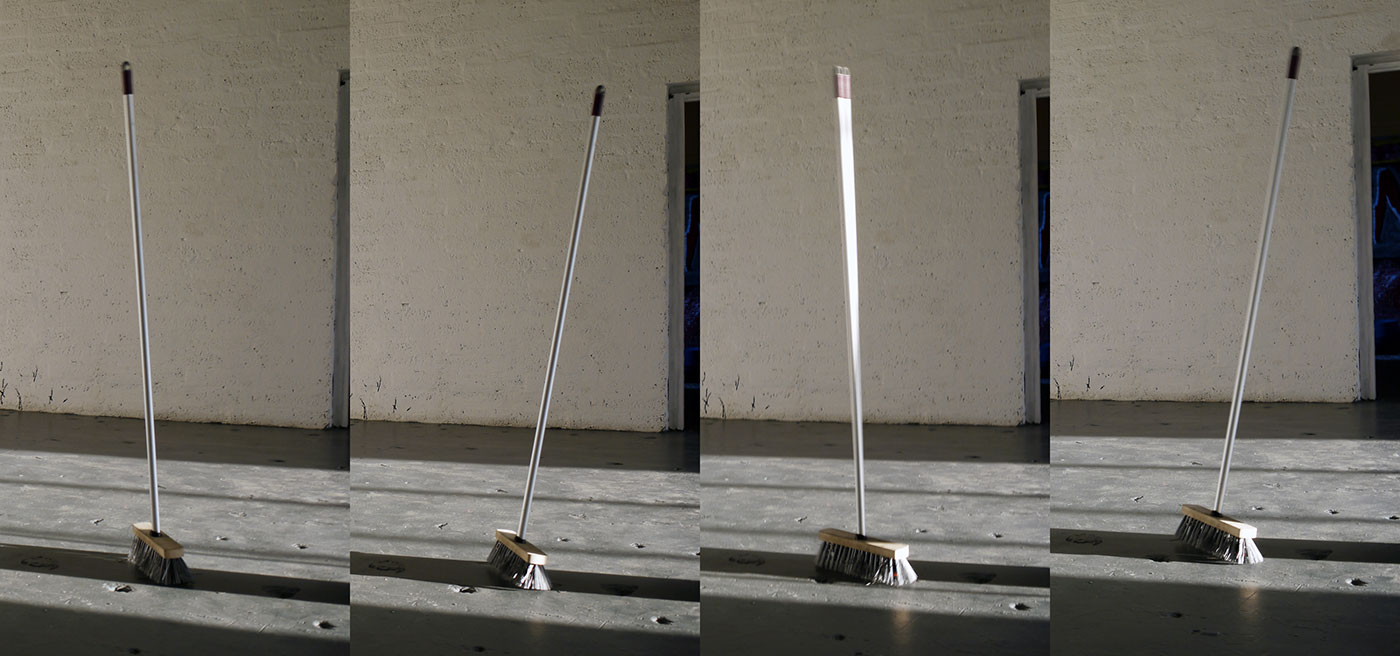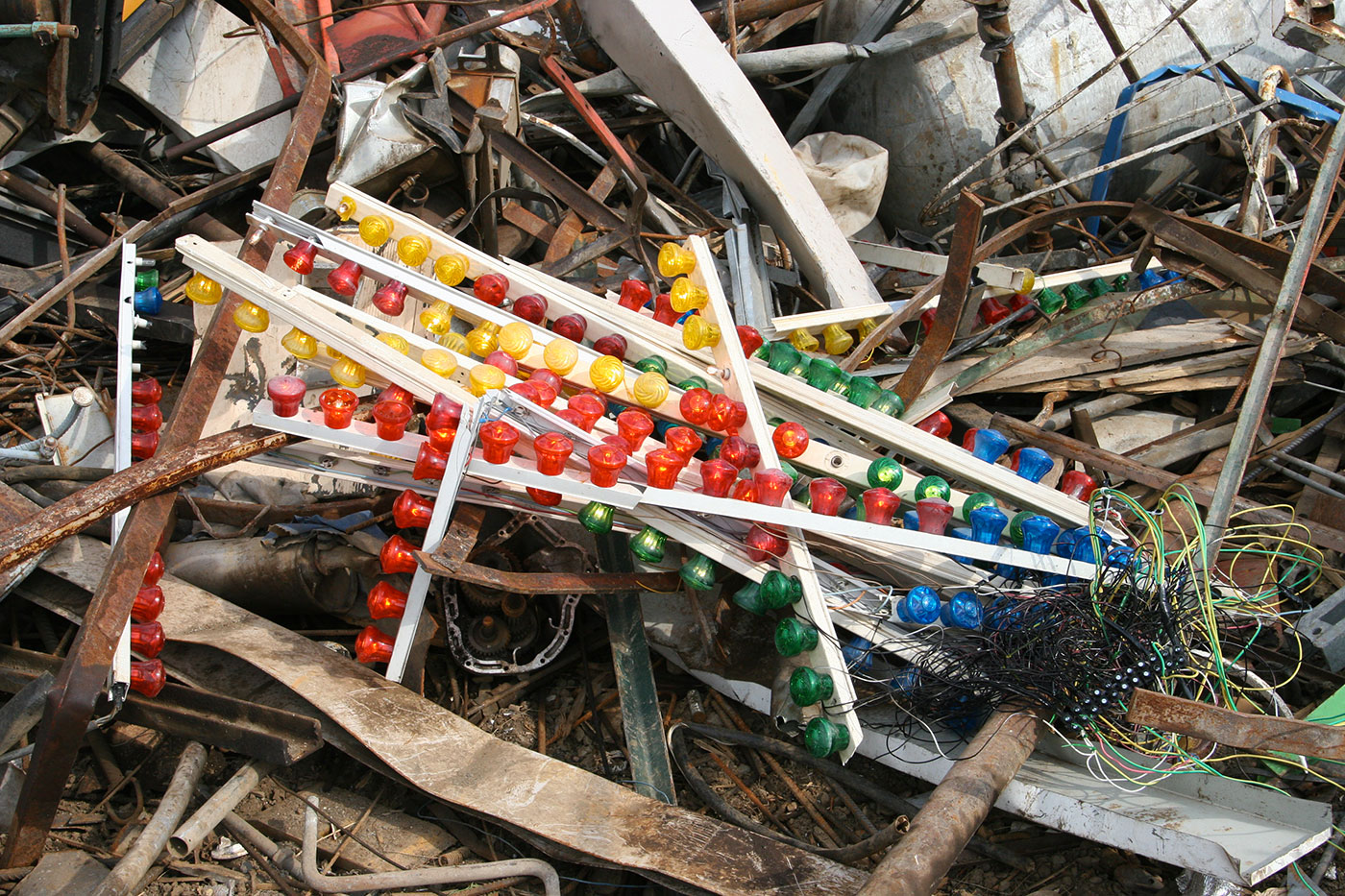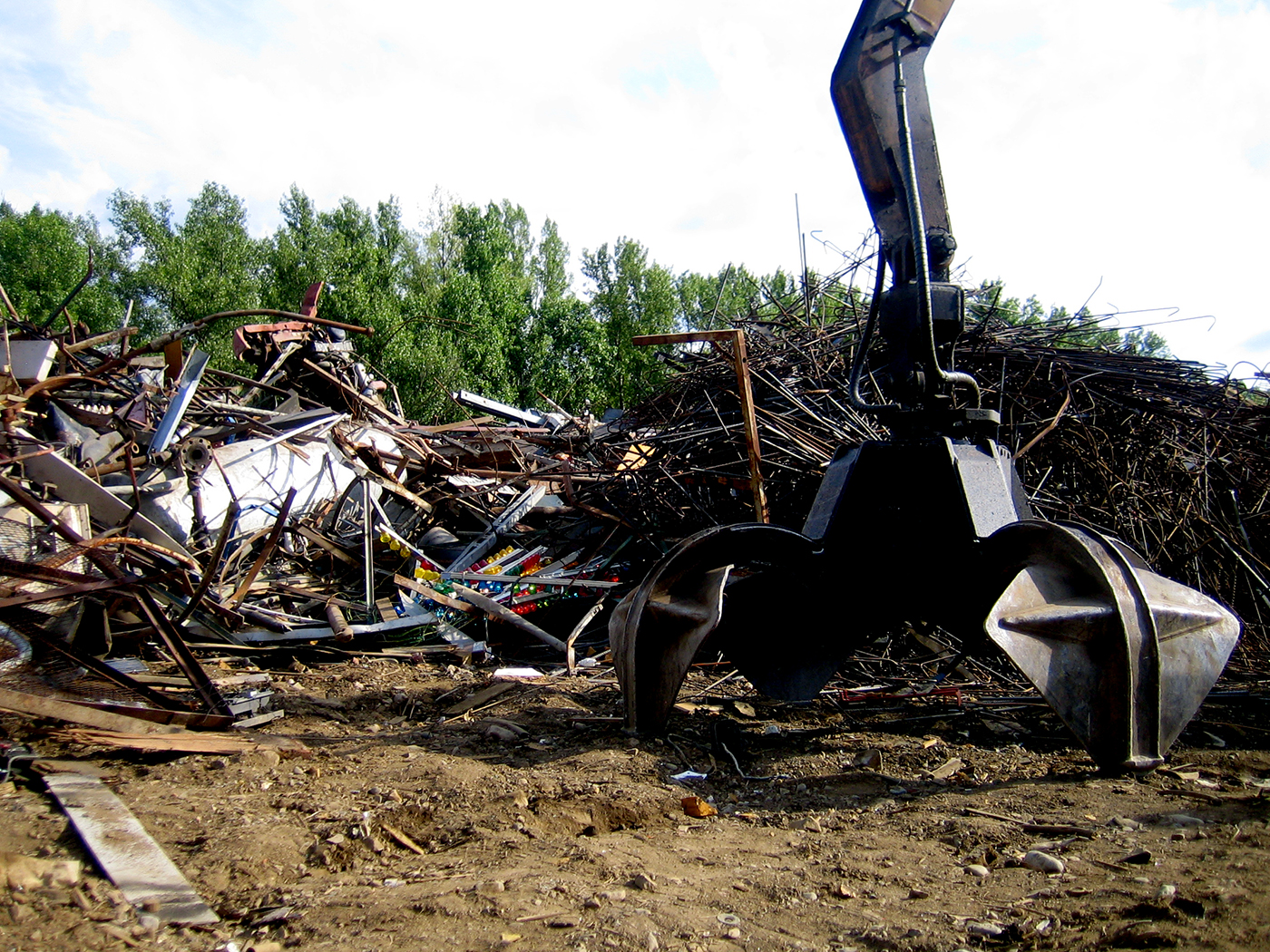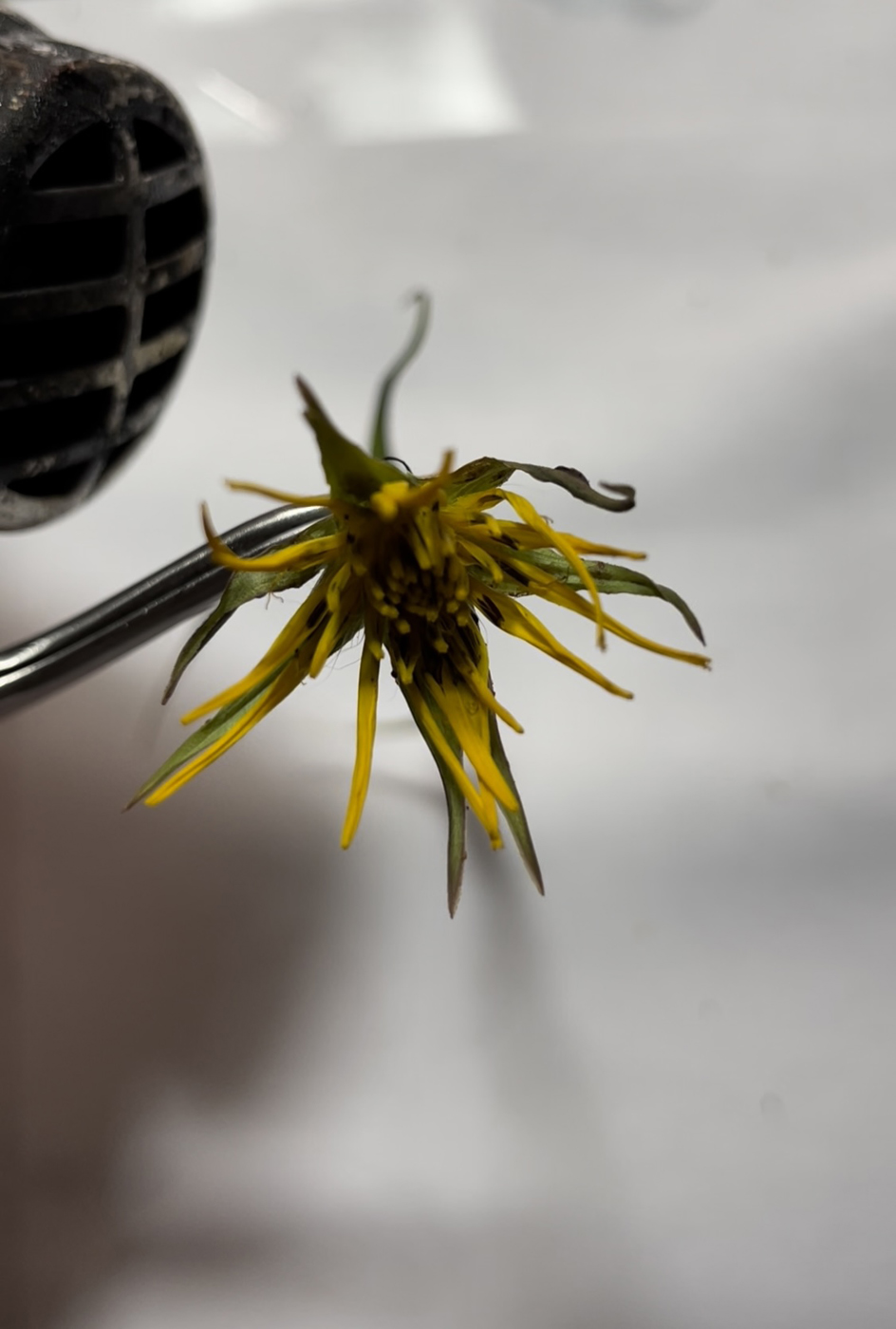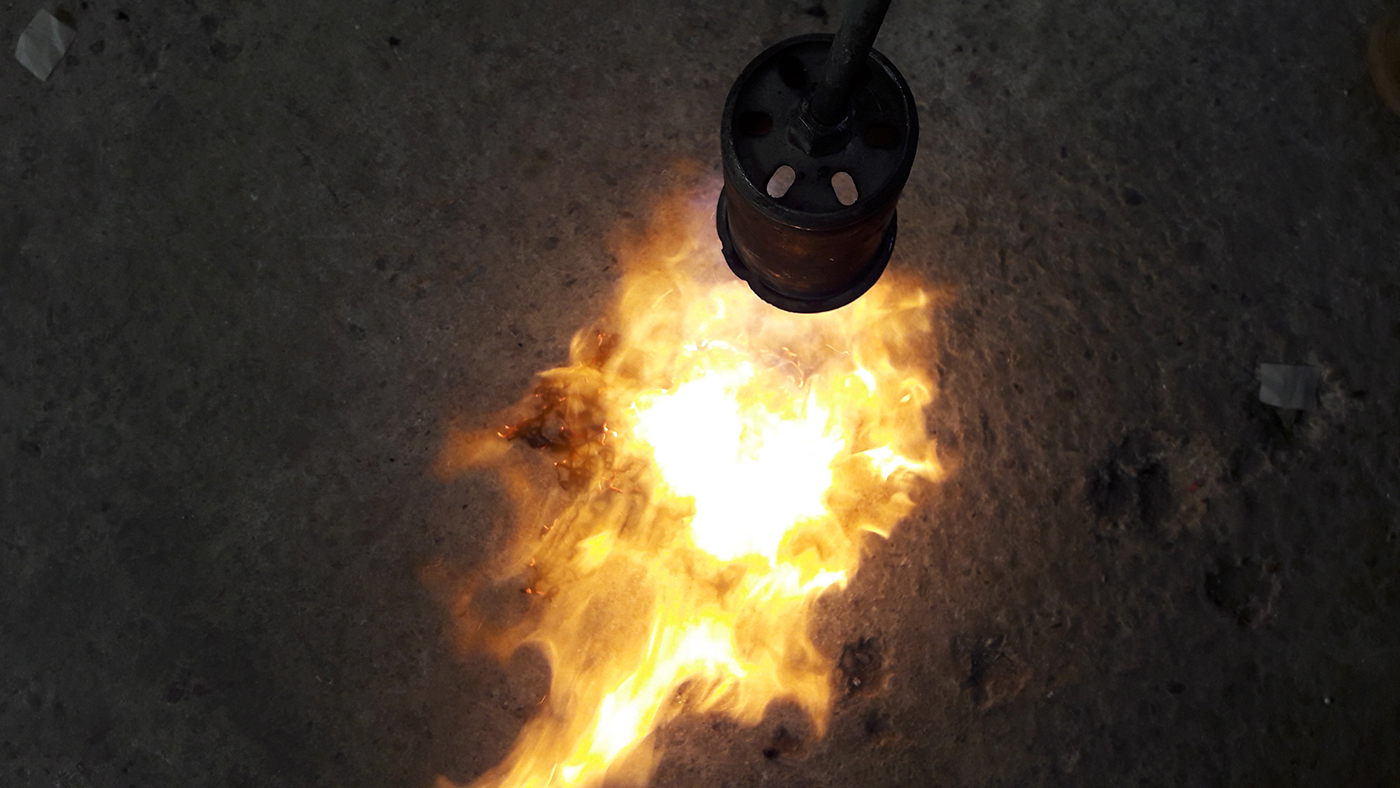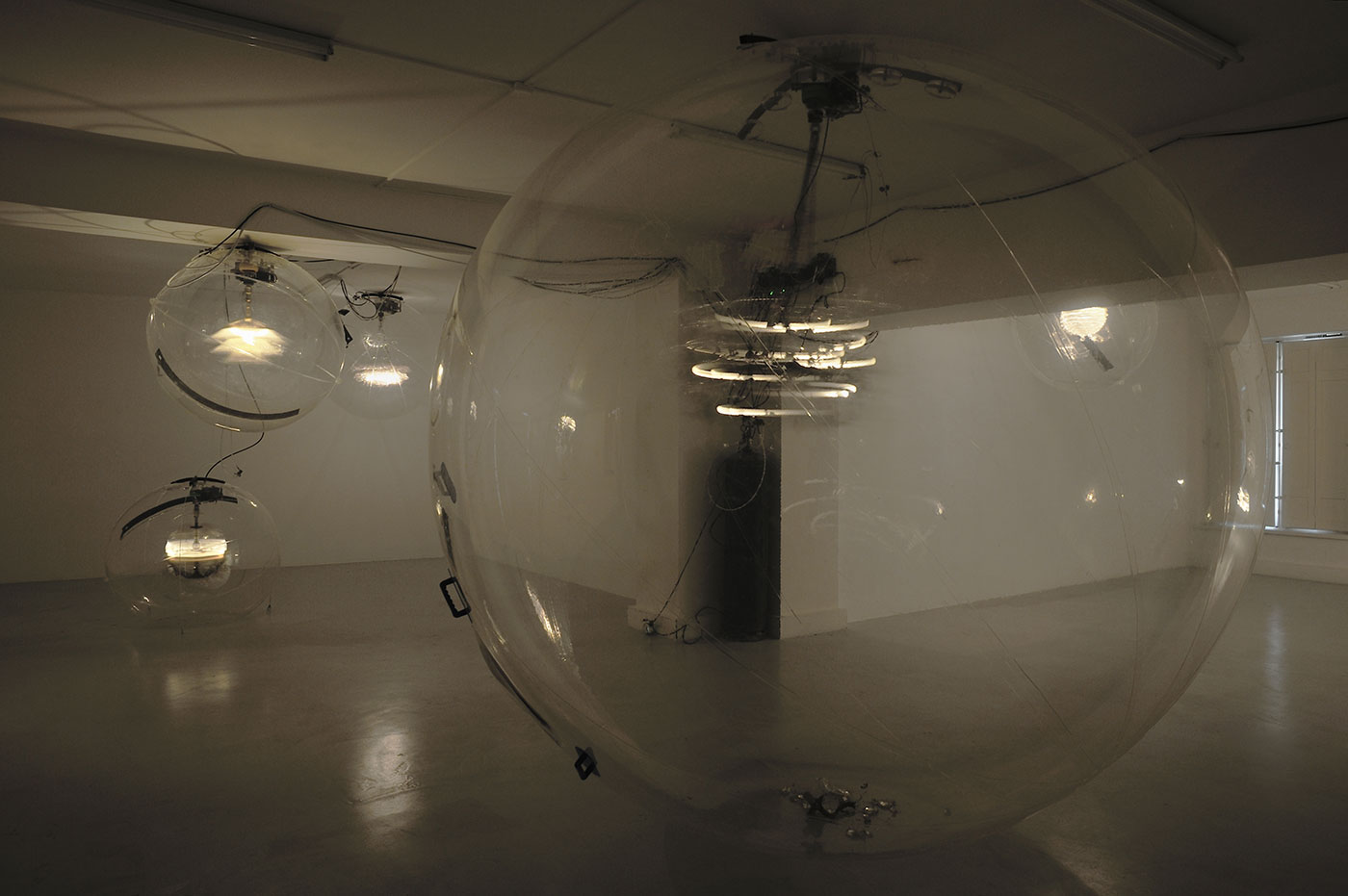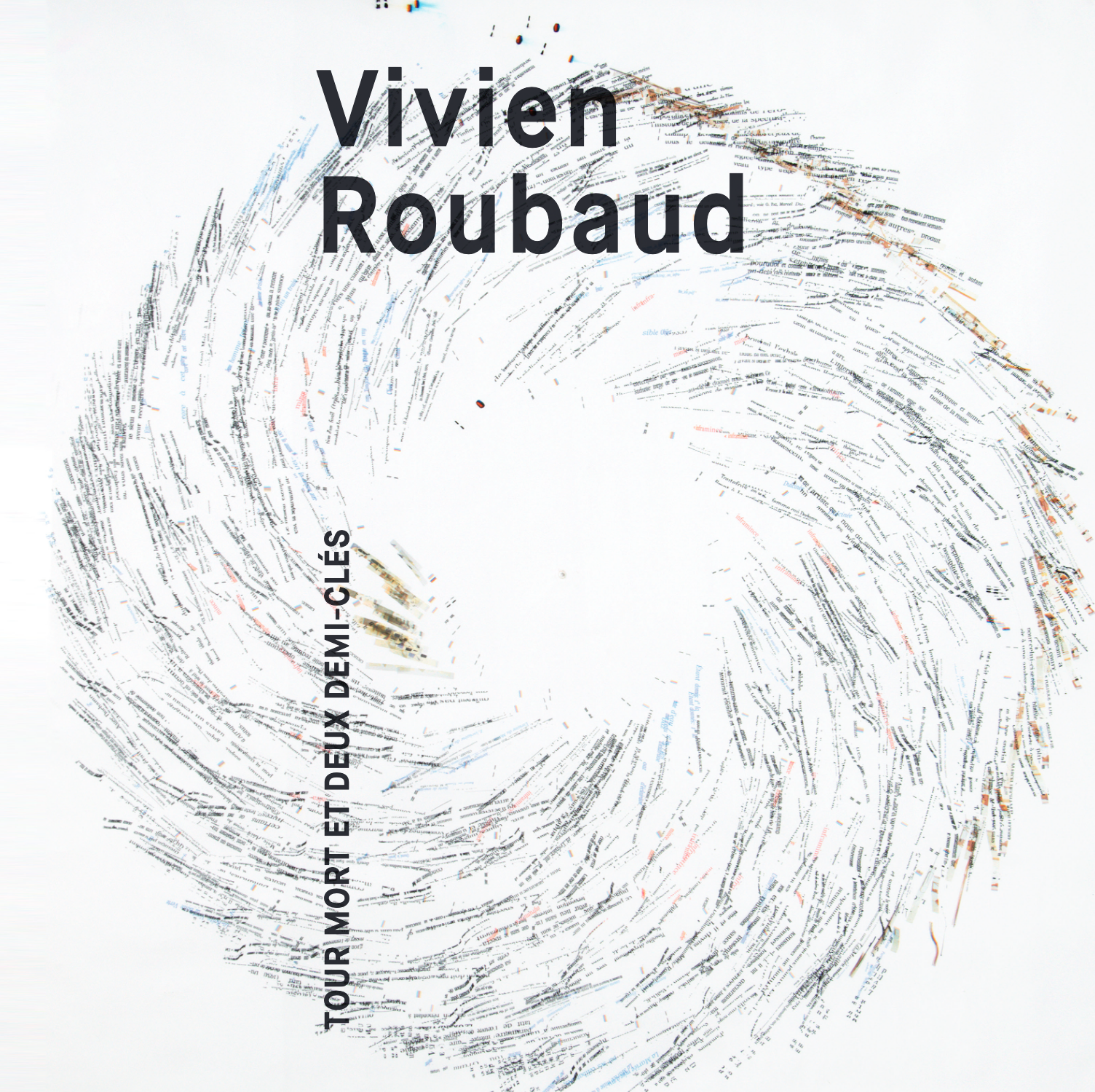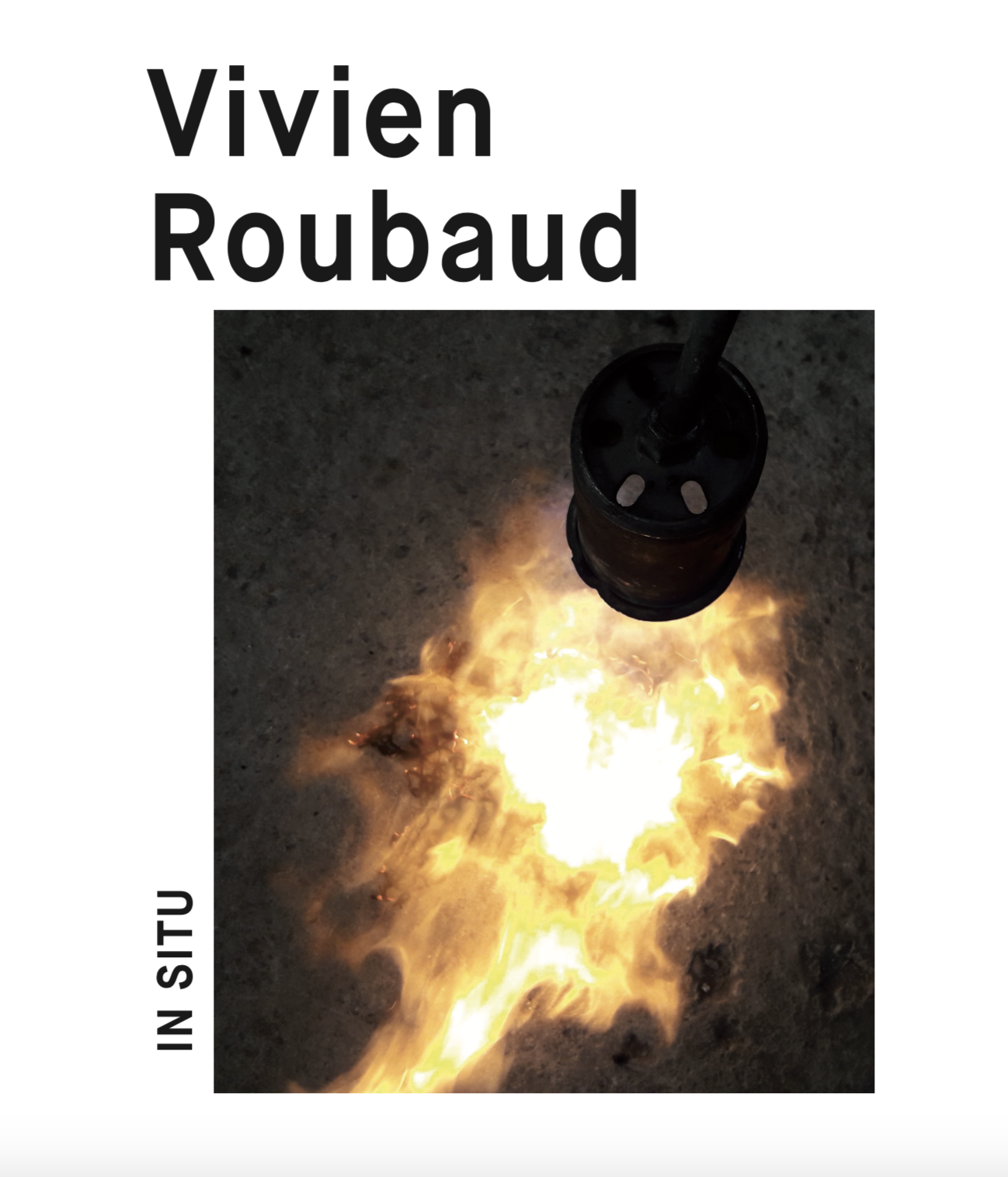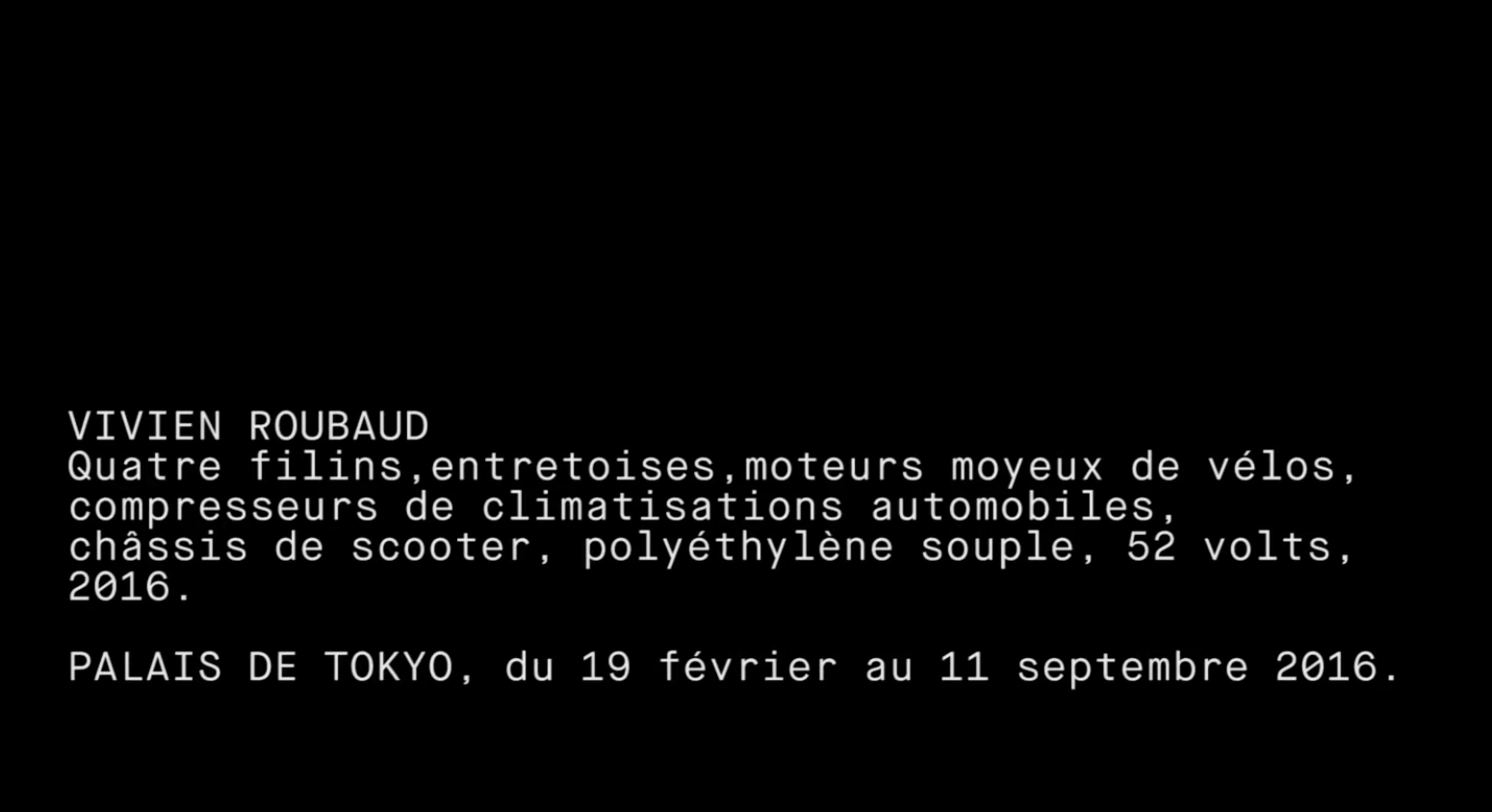Roubaud
Born in 1986, Vouziers, FR
Lives and works in Brussels, BE
The artist aims to extract unusable qualities or properties hidden in the objects that surround us in our daily life. The active cohabitations that he orchestrates often clash, adopting precarious and unstable equilibriums. Bypassing functionalities and disorganising savoirfaire are goals that require him to adopt a distanced view. Dust or
pollen, printer or freezer parts are brought into play to create hybrid installations, which often maintain a tenuous dependence on fragile technical solutions
Graduated of DNSEP with distinction at the École Nationale Supérieure d'Art of Villa Arson (Nice) in 2011.
Among his recent group exhibitions : Saison 17, Lieu Commun (Toulouse, 2013) ; Sunshine & Precipitation Part 2, Catalyst Arts, (Belfast, 2012) ; Watt, La Station, (Nice, 2012) ; Young & Restless, Vidéochroniques (Marseille, 2012) ; Demain c'est loin, Galerie de la Marine (Nice, 2011). Exposition personnelle dans le cadre des Modules à la Fondation Pierre Bergé. Solo exhibition as part of the Modules Fondation
Pierre Bergé - Yves Saint Laurent, from 25/04/13 to 22/06/14 at the Palais de Tokyo. In collaboration with Villa Arson (Nice).
"I often say that I use objects that make us live, in a sense, I try to extract unused qualities or hidden properties from these objects. The active mixtures that I make, bring together and confront, take on a form in precarious, unstable balancing acts. In order to bypass the functions and disorganize know-how, we have to adopt a distant view in terms of what we know, or think we know, without ever falling into fascination, but instead with the intention of raising questions and inciting curiosity. Freeing an object also means reprogramming it, or handling its side effects. Static objects are set in motion, while those that usually move tend towards petrified states. Some systems come undone, returning to a lost state. They unravel so much that they go back to the crude, or heterogeneous pre-production state of an un-elaborated product. By making bridges between disciplines, and by combining or defragmenting fields and categories, it is possible to make one or more frameworks tremble, but without being able to extract ourselves from them completely. The point is then to re-examine and reinterpret the connections and ties that can join together the fragments and abolish the frontier between methods and materials. The game consists in regulating this unruliness."
EXHIBITION (SELECTION)
Solo exhibitions
2022
Tour mort et deux demi-clés, galerie In Situ - fabienne leclerc, Grand Paris, FR
2020
Scalaire, Jardin François 1er, Centre de Création Contemporaine Olivier Debré (CCCOD), Tours, FR
2019
FIAC projects, Paris, FR
Nuit Blanche Paris, oeuvre nomade, FR
KM7 St Denis Nuit sur le chantier, Société du grand Paris, FR
Univers Encapsulés, Le creux de l'Enfer, Thiers, FR
2018
Vide secondaire, Micro Onde, Centre d'art de l'Onde, Vélizy-Villacoublay, FR
IN SITU, In Situ - fabienne leclerc Paris, FR
2017
Galerie des Ponchettes, Nice, FR
2016
Projet entrée, Palais de Tokyo, Paris, FR
2015
Vivien Roubaud, In Situ - fabienne leclerc, Paris, FR
Group exhibitions
2025
Grand Palais, Paris, FR
2024
Fin et début, iMAL, Bruxelles, BE
2023
Capture #2, Un instantané de la création belge, Le Pavillon, Namur, BE
2022
Parade "Utopia" - Char (Barbapapa), Lille 3000, Lille, FR
2019
Archipelagos of fragility, KIKK Festival 2018, Namur, BEL
Sucre cristal n° 3, écoulement laminaire, courant alternatif, atmosphère modifiée, Nuit Blanche 18ème édition, Paris, FR
5e anniversaire de la Bourse Révélation Emerige, Paris, FR
2018
Species and beyond, KIKK Festival 2018, Namur, BEL
Livro Do Desassossego,Gyeongnam Art Museum Changwon, Republic of
Korea
Les Faits du Hasard, 104 (Cent Quatre), Paris, FR
2017
En marge, In Situ - fabienne leclerc, Paris, FR
2016
Sous la lune, ICAS, Singapore, SG
Archéologie du présent, Musée d'art moderne Saint-Etienne Métropole, FR
Run, run, run, Villa Arson, Nice, FR
Le nouveau monde industriel, Galleria Continua, Moulins, FR
2015
Le Parfait Flâneur, curator Hilde Teerlinck, Palais de Tokyo en résonance avec la Biennale de Lyon, Halle Girard, Lyon, FR
Sèvres Outdoors, Cité de la Céramique, Sèvres, FR
Jambes de bottes, Villa Arson, Nice, FR
Jambes de bottes, Piano Project, Kunst Meran Io Arte, Merano, IT
Ad hoc, La Station, Nice, FR
2014
Les modules, Palais de Tokyo, Paris, FR
Voyageurs, Bourse Révélations Emerige, Villa Emerige, Paris Snap Project, Lyon, FR
Gestalt & Gangstagave, Association Culbuto, Musée MAMAC, Nice, FR
On/Out of work, Lyon, FR
J'écris donc je suis, Le Garage, Brive, FR
Minimenta, Galerie Bertrand Baraudou, Paris, FR
Baleapop #5, Festival, Saint Jean-de-Luz, FR
2013
Conjecture, In Extenso, Clermont Ferrand, FR
Nautilus, Nice, FR
Saison 17, La Station, Nice, FR
Artist-run space, Lieu-commun, Toulouse, FR
2012
Object in the mirror are closer than they appear, Le Salon, Nice, FR
Proxémie, Le Salon, Nice, FR
Watt, La Station, Nice, FR
Where are you?, Galerie Mineur, Blanzy, FR
Sunshine & Precipitation Part 2, La Station, Catalyst Arts, Belfast, IR
2011
Demain c'est loin, exposition des diplômés de la Villa Arson, Nice, FR
Les quatre cavaliers (2011/2071), La Zonmé, Nice, FR
Bibliography
Publications
2014
"Impressions d'ateliers Tome II". Gazelle, 2014.
Guigo, Elsa. "Univers encapsulés". Code 2.0, 2014.
Mangion, Eric." Etat du ciel Part 2". Magazine du Palais de Tokyo, 2014.
2013
Azimi, Roxana. "Les cabanes de Michel Fedoroff à Bargemon". Le Nouvel Economiste. 2013
2012
Ouassit, Donia. Sunshine & Participation Part 2. 2012.
Levy, Audrey. "L'art contemporain explose". Le Point. 2012.
2011
Demain c'est loin. Villa Arson.
Education
2009 - 2011
DNSEP, Félicitations du jury, Villa Arson, ENSBA, Nice, FR
2005 - 2009
DNAP, Félicitations du jury, ESBAM, Marseille, FR
Residencies
2014 - 2015
Atelier Bourse Révélations Emerige
2013
Villa Garikula, Association Culbuto Tbisili, GR
2011
La Station, Nice, FR
Texts
"Encapsulated universe"
By Elsa Guigo
Vivien Roubaud explores forms as much as materials, developing a particular interest in techniques and know-how, unnatural connections. Beyond simple recuperations or rearrangement of waste from the consumer society, his sculptures incorporate autonomous and breathing systems. Hybridized techniques play with time: the time of the work and the time of its perception by the visitor.
COLLECTING MATERIALS
Vivien Roubaud collects common materials from junkyards or the sidewalk - cables, pipes, old mattresses - that he defines as "objects that make us live." He gathers, takes apart, analyzes and transforms the raw material around us. It would be easy to see in this approach an eco-sensitive and critical vision. The questions of pollution and recycling however, are not factors in his work. He likes to say that his emaciated printer crawling on the floor is much more polluting.
In Gaine, câbles, moteur 12v, roulements, barrières IR, deux cent vingt volts (Sheath, Cables, 12v Motor, Bearings, Infra-Red Fence, Two Hundred and Twenty Volts, 2011), electricity surges from an uncontrolled rotating cable that threatens the visitors, whereas in Poussières, souffleries, roues folles, deux cent vingt volts, mille cinq cents soixante-quinze mètres cube (Dust, Blowers, Mad Wheels, Two Hundred and Twenty Volts, One Thousand Five Hundred and Seventy-Five Cubic Meters, 2010), pollen is propelled by a blower into a "sterile room" and becomes green and allergic pollution placed in a box. In Compresseurs de climatisation d'entreprises, condenseur d'un congélateur coca-cola, évaporateur d'un distributeur de boissons, indicateur de pression, capillaires récupérés sur trois frigidaires individuels, gaz r404a, deux cent vingt volts (Office Air-Conditioner Compressors, Coca-Cola Freezer Condenser, Drink Machine Evaporator, Pressure Indicator, Capillary Tubes Recuperated from Three Individual Refrigerators, r404a Gas, Two Hundred and Twenty Volts, 2012), a perfect and improbable ball of ice is artificially created. Lastly, we can mention the sedimentation phenomenon with the development of a system artificially uniting all the natural conditions favorable to the growth of a stalactite (Calcaire, eau, cuivre, pompe, automate, deux cent vingt volts, (Sediment, Water, Copper, Pump, Automatic Control System, Two Hundred and Twenty Volts, 2013).
HOW TO DO RATHER THAN WHAT TO DO
Diverting objects from their primary function and creating natural phenomena meant that Vivien Roubaud had to acquire a mastery and reappropriation of techniques and know-how. Attentively reading instructions and technical descriptions, he is able to "exploit" the objects combining them in a hybridization that would seem a-functional and illogical by any heating technician or plumber. In light of the categorizations developed by Claude Lévi-Strauss in The Savage Mind (1966), the scientist develops research procedures based on concepts whereas the handyman investigates with what he has on hand. Artists travel between these two worlds of reflection and practice.
Rather than the what to do, it is the how to do that interests Vivien Roubaud. He often expresses the idea that he has to "make the rounds" of a technique, an idea of hybridization or experimentation, in an intense relationship with fabrication. An inventive experimenter, he comes up against technical difficulties such as combining gas pipes with copper water pipes. What kind of connections ? What kind of welds? What standards to destandardize ?
The machines initially designed according to a precise functional diagram are pushed to the extreme, reprogrammed, diverted from their primary function. Thus, the printer that turns on the floor is transformed by its original mechanisms, the inking cartridge moves forward according to an implacable logic from one end of the track to the other. But here, the cartridge makes in circles on the floor, in such a way that the printer distances itself from its status as a functional and static object to become a sort of mad machine (HP DeskJet, ordinateur, wifi, roulement à billes, ressort, deux cent vingt volts, (HP DeskJet, Computer, Wi-Fi, Ball Bearing, Spring, Two Hundred and Twenty Volts, 2012).
THE TITLE, THE ETYMOLOGY OF THE WORKS
Giving a work a title participates in its finiteness and the distance that the artist places between it and him. By aligning the names of materials in the titles, Vivien Roubaud using a specific logic gives substance to the work and reinforces his primary interest in how to make.
Writing figures in letters - the volts used or the cubic meters of air - confirms the idea that a volatile material is not an additional means that serves the work but clearly one of its consubstantial elements, just as important as the pipes, cables or skyrockets. From the invisible to the visible, everything takes part in creating the work. The system exists through the chosen materials, harboring, right from their selection, the work to come. Vivien Roubaud is not a collector, he collects. His accumulations of words describe and name the sculpture. The system is autonomous, observable and comprehensible as much in its functioning as in its title.
THE ELASTICITY OF TIME
A poetic instant, a suspended moment is born from the absurd. All these assemblies are facets of endlessly playing with the elasticity of time. Vivien Roubaud's practice encompasses the three periods of historical time (past, present and future) and excites the visitor's objective and subjective perceptions of time.
These preoccupations are also found in the questions raised by the exhibition of his works. How can autonomous systems be designed whose movements and imperceptible respirations could be experimented on in the chronological framework of an exhibition ? And if the visitor missed these respirations ? What status would the sculpture then have ? The tangible tension in these autonomous systems, which could be described as time-sculptures, de facto gives them a certain fragility.
With his series Feu d'artifice, gelée de pétrole dégazé, combustion incomplète, tube PMMA (Fireworks, Degased Paraffin Jelly, Incomplete Combustion, PMMA Tube, 2014), Vivien Roubaud freezes a fleeting moment. He plunges clusters of skyrockets into cylindrical tubes filled with paraffin jelly, degased and made transparent beforehand. The lit wick is gently consumed until explosion occurs. The pyrotechnical cloud is then seized in its brief life: the curls of smoke are frozen into filamentary heads of hair, the carbonized paper of the rockets floats, the air is trapped in a myriad of bubbles... The expansion is sudden. This dangerous and tricky process involves a host of tests. Formal criteria never lead Vivien Roubaud to choose to exhibit certain tubes rather than others: only the process leads to the form.
"From the basic hypothesis that I formulate on a functioning, a form emerges that I decide to go ahead with or not," he explains.
These technical requirements and this unshakable determination to show time is found in one of his recent works, Sculpture élémentaire (titre de travail) [Elementary Sculpture (Working Title)]. A block of unfired stoneware clay is placed under four burners connected to a complicated tangle of copper pipes containing gas and water. The whole, suspended from the ceiling, hangs like a cut-away diagram in a crystal paper cover, a sort of protective membrane. Gas and flame sensors linked to the system display a specialized, controlled technology. The burners light for a few seconds, projecting an infernal heat on the block. The air is rarefied, the membrane contracts. Heated to a very high temperature, the clay splutters, splits, bursts into tiny particles that are projected. The heat rises, the sensors command the burners to turn off, the membrane slackens. There is a pause. The sculpture slowly breathes out like an enormous mammal. The white-hot clay crumbles, frays. It disappears, gradually covering the floor. Time is at work but in an accelerated mode. The clay was not modeled; pottery's millennial know-how is diverted from its primary aim, the kiln has overheated. The question of the perception of the invisible also comes into play here in the membrane's subtle movement, in the high-pitched splutter, in the air that heats up.
Vivien Roubaud's sculptures encourage the visitor to detect, to feel, to discover, to be surprised. Revealing phenomena without any mass, working the flow, the energy and the imperceptible that drives our world is his matrix. Offering the dizzying observation that motion is perpetual, he carries us along in a perception of rubbings of the infra-thin, the floating of particles- of the invisible part of the work. Sometimes, what there is to look at is not the most visible.
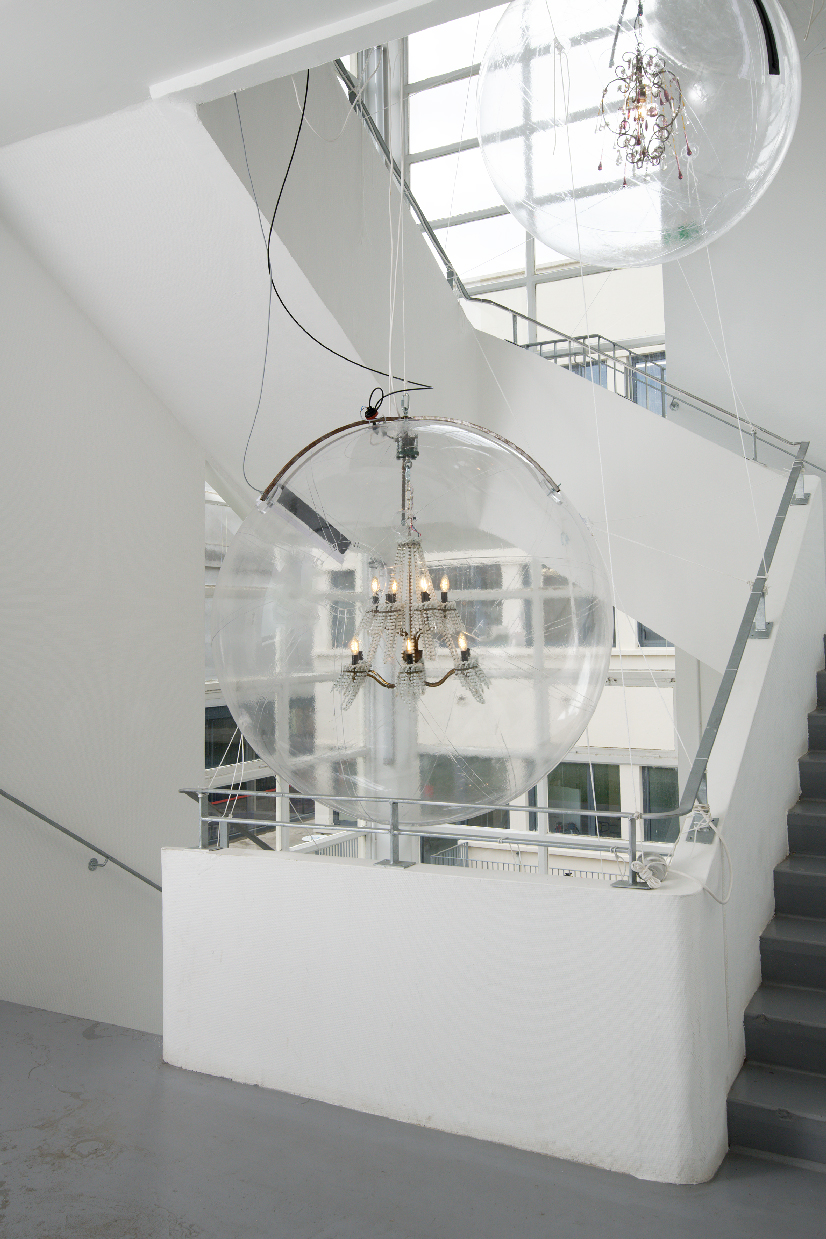
Tour mort et deux demi-clés, 10.09-22.10.22
Galerie In Situ - fabienne leclerc, Paris
© Aurélien Mole
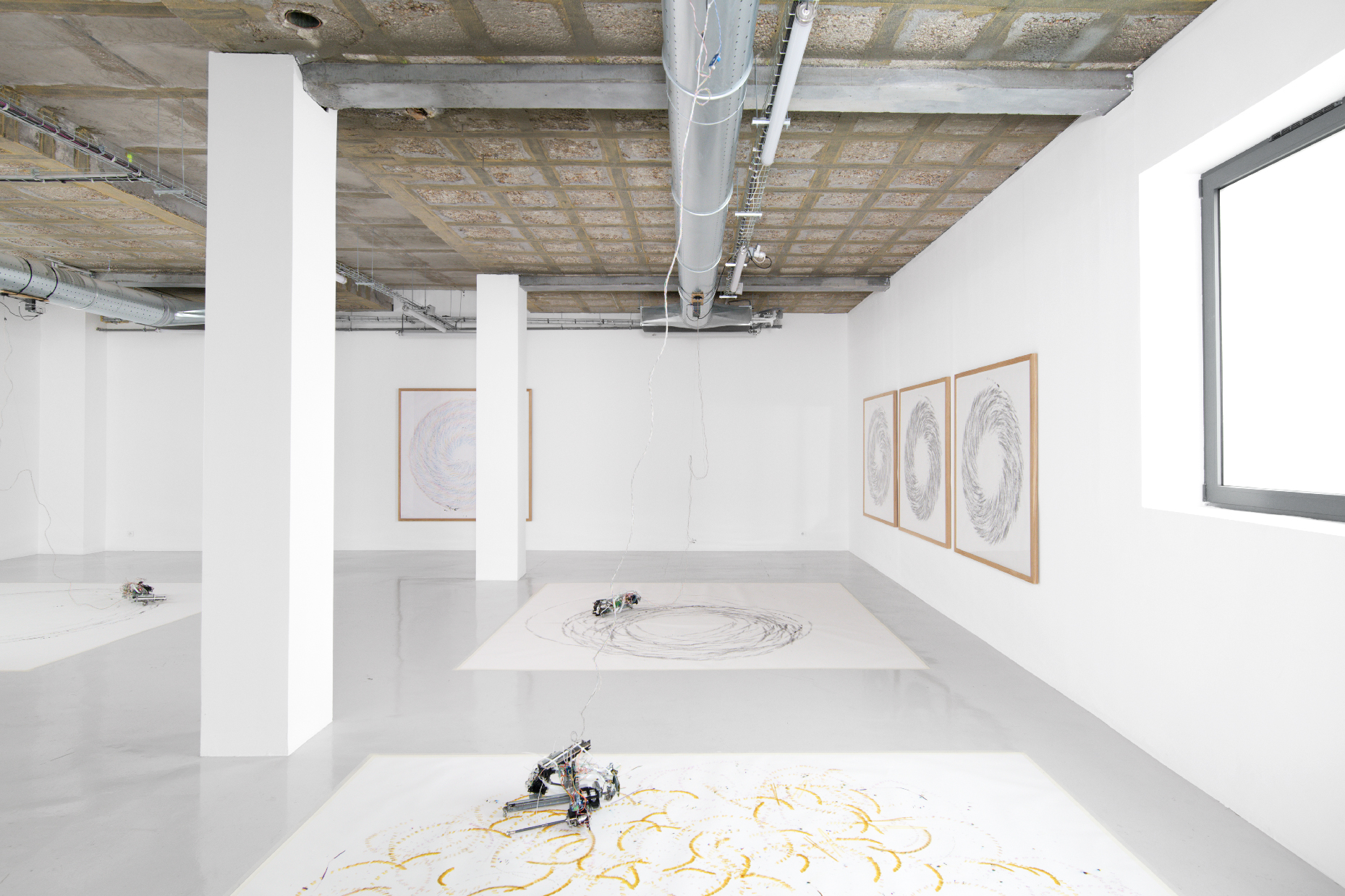
Tour mort et deux demi-clés, 10.09-22.10.22
Galerie In Situ - fabienne leclerc, Paris
© Aurélien Mole
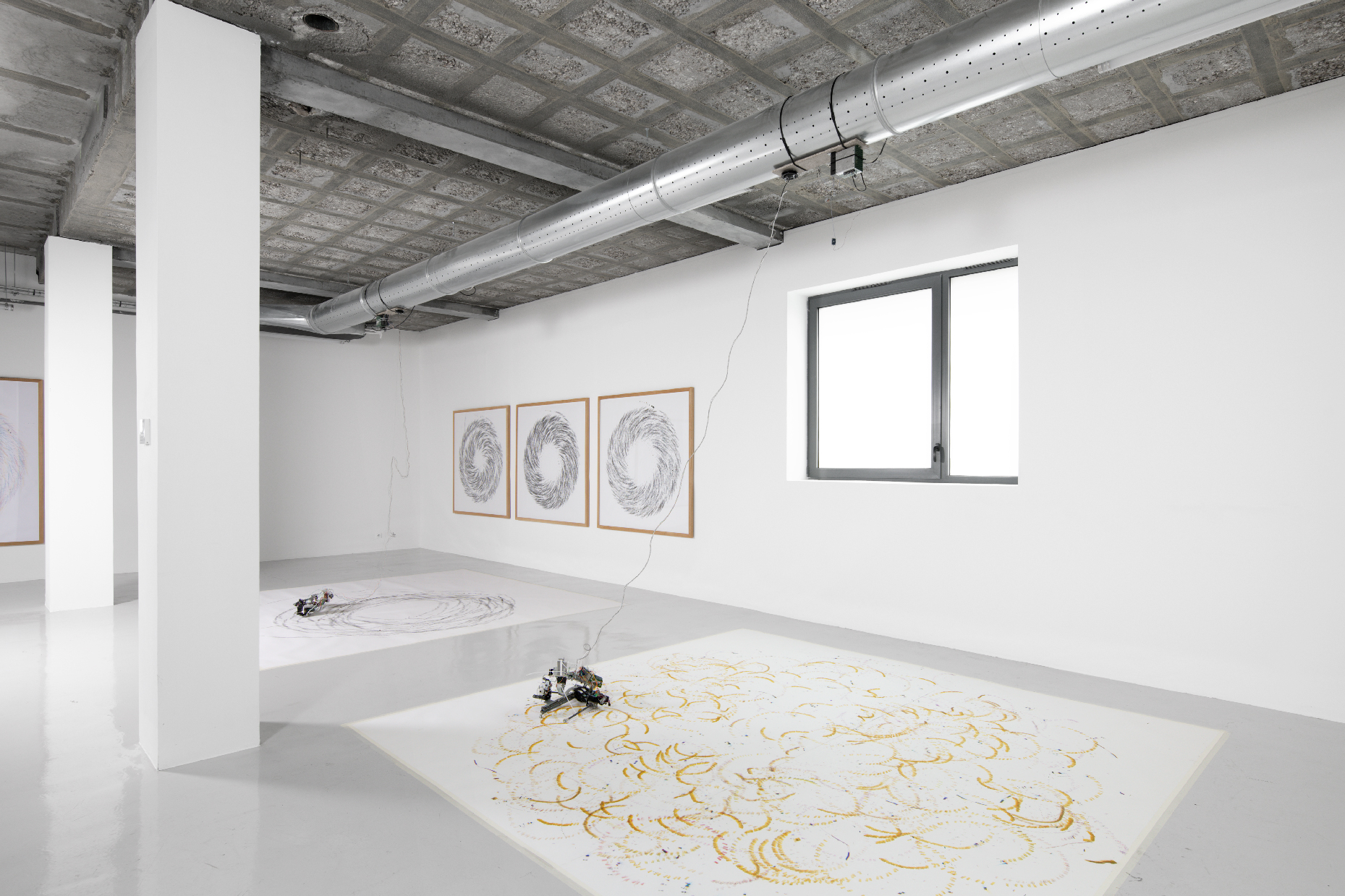
Tour mort et deux demi-clés, 10.09-22.10.22
Galerie In Situ - fabienne leclerc, Paris
© Aurélien Mole
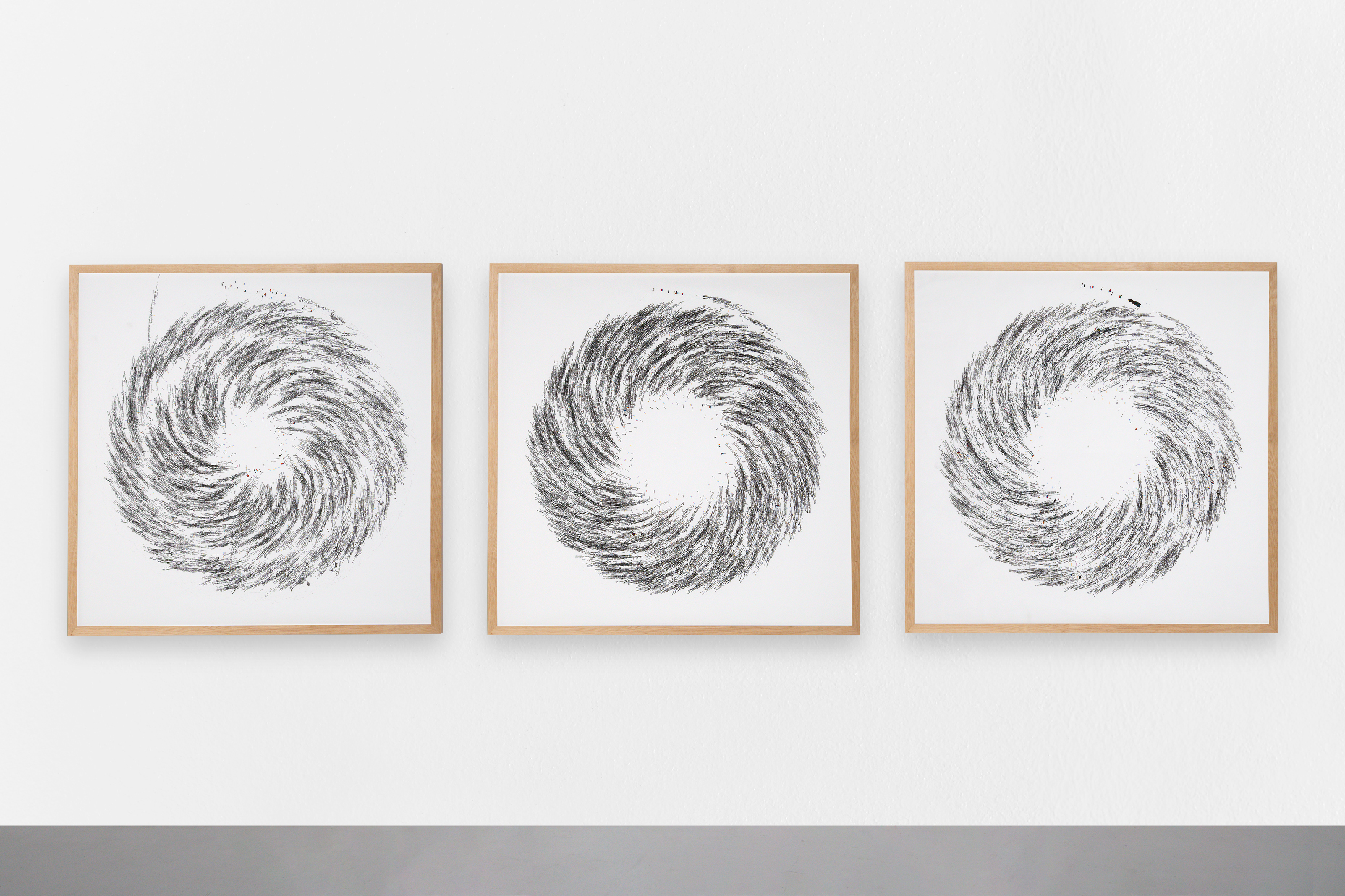
Tour mort et deux demi-clés, 10.09-22.10.22
Galerie In Situ - fabienne leclerc, Paris
© Aurélien Mole

Tour mort et deux demi-clés, 10.09-22.10.22
Galerie In Situ - fabienne leclerc, Paris
© Aurélien Mole

Tour mort et deux demi-clés, 10.09-22.10.22
Galerie In Situ - fabienne leclerc, Paris
© Aurélien Mole
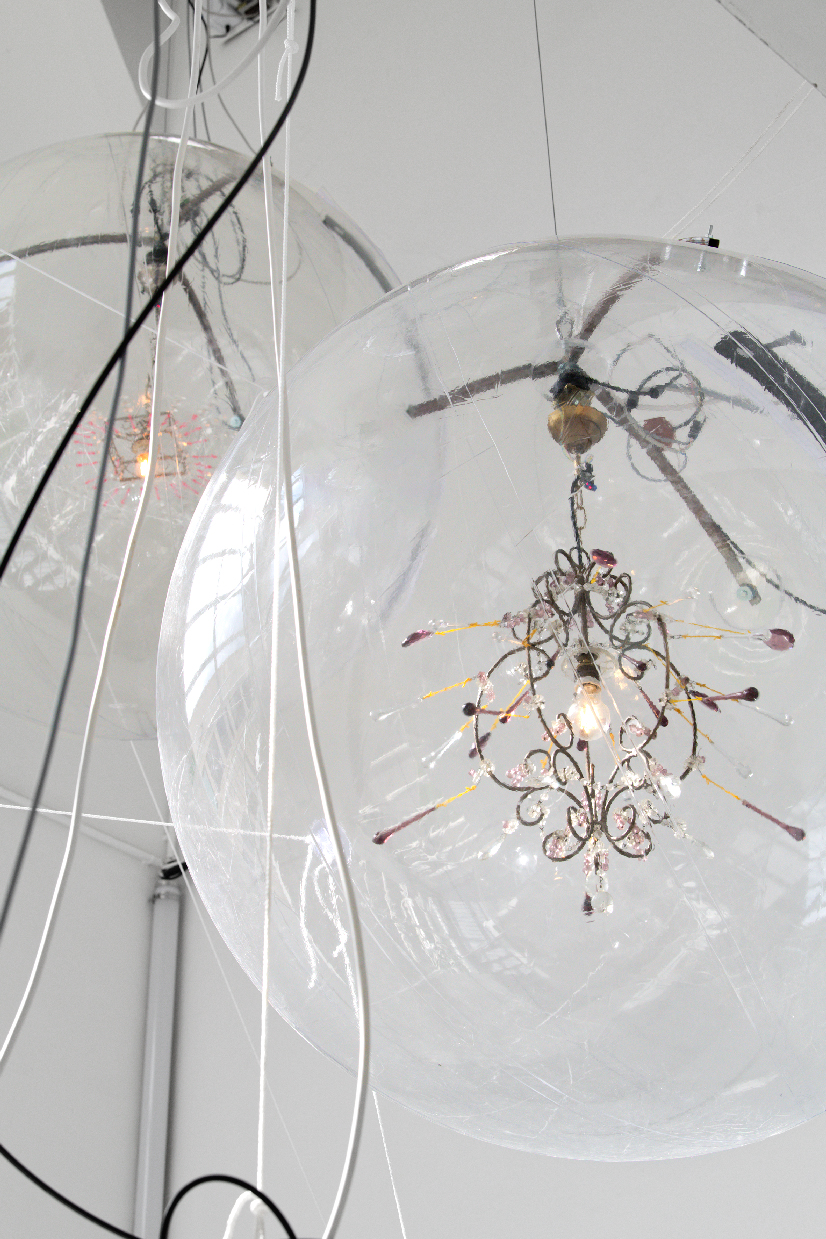
Tour mort et deux demi-clés, 10.09-22.10.22
Galerie In Situ - fabienne leclerc, Paris
© Aurélien Mole
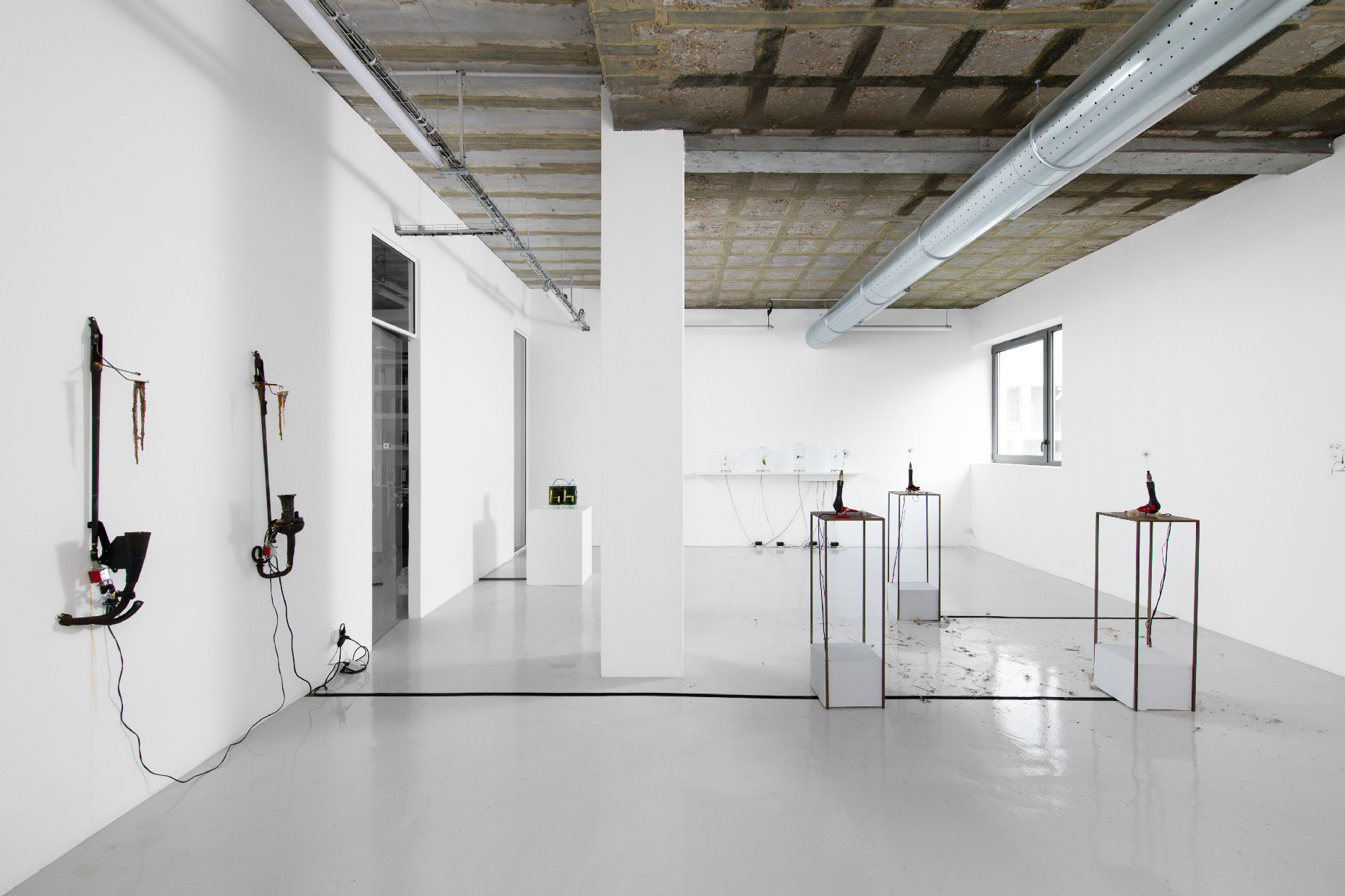
Tour mort et deux demi-clés, 10.09-22.10.22
Galerie In Situ - fabienne leclerc, Paris
© Aurélien Mole
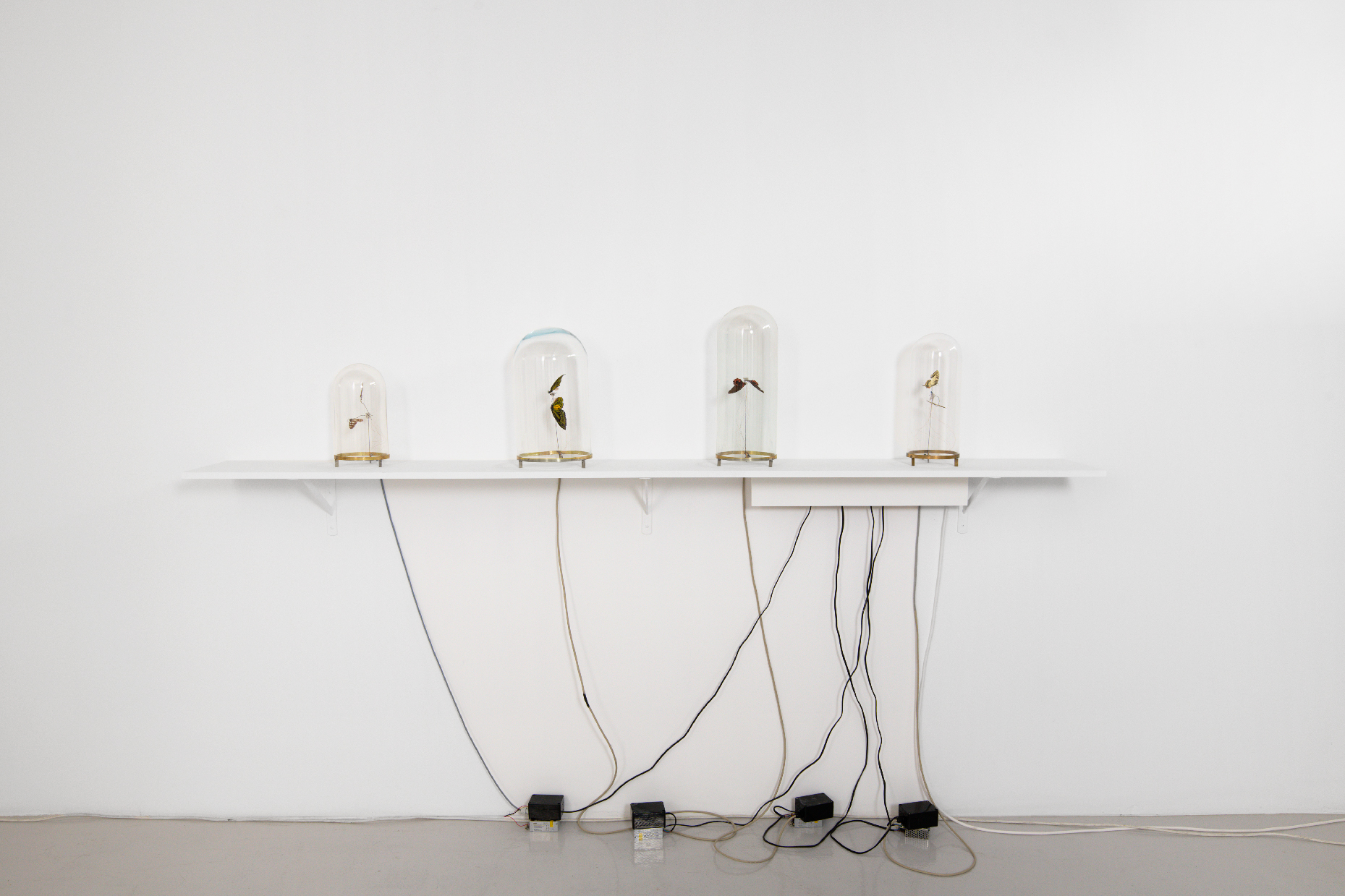
Tour mort et deux demi-clés, 10.09-22.10.22
Galerie In Situ - fabienne leclerc, Paris
© Aurélien Mole
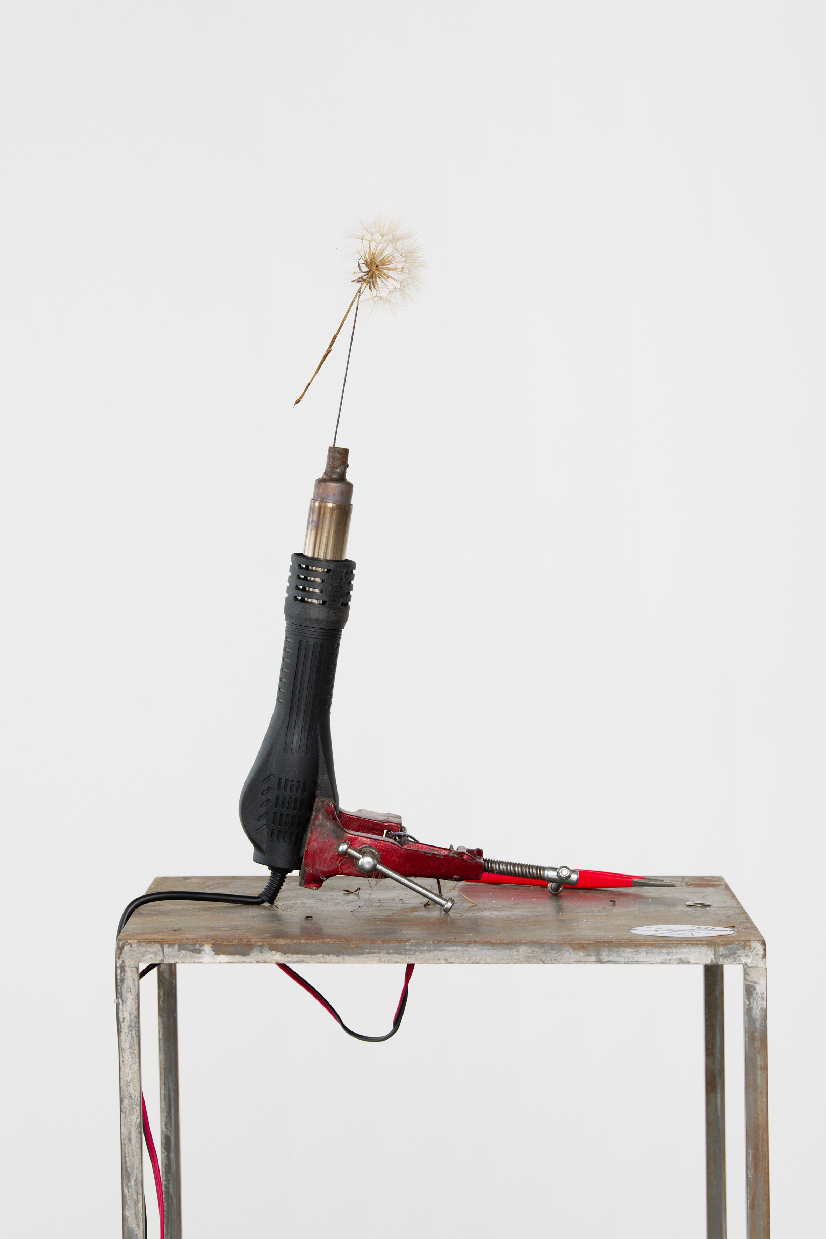
Tour mort et deux demi-clés, 10.09-22.10.22
Galerie In Situ - fabienne leclerc, Paris
© Aurélien Mole
-
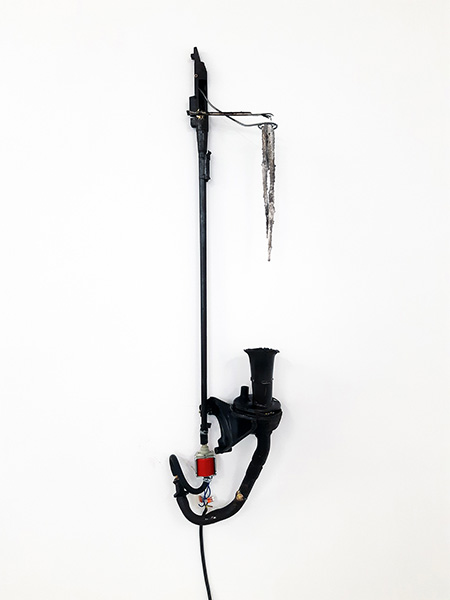
11.07.2024 - 02.16.2025
Vivien Roubaud
iMAL
Vivien Roubaud - Fin et début -
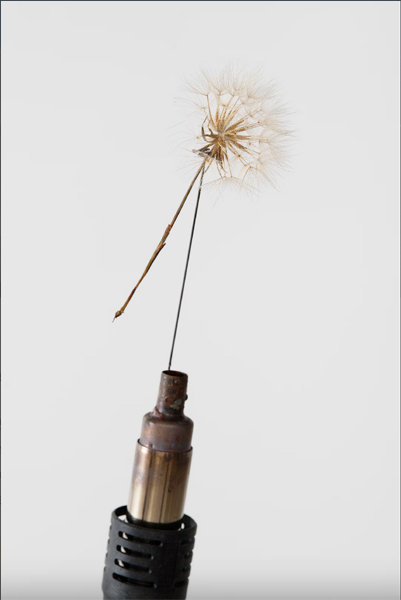
09.23.2023 - 01.14.2024
Vivien Roubaud
Le Pavillon - Namur
Vivien Roubaud - Capture #2, Un instantané de la création belge -
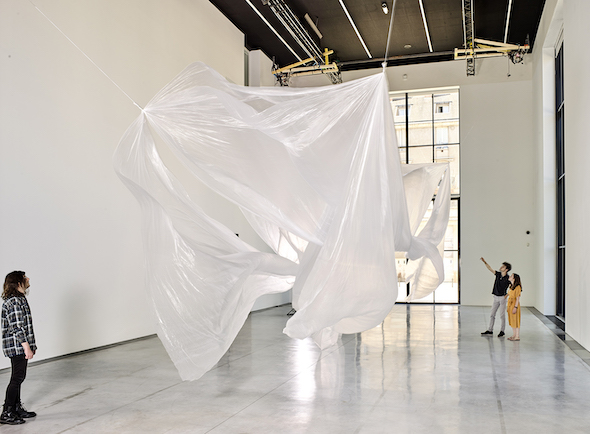
07.10.2020 - 11.22.2020
Vivien Roubaud
CCC OD
Vivien Roubaud // Scalaire -
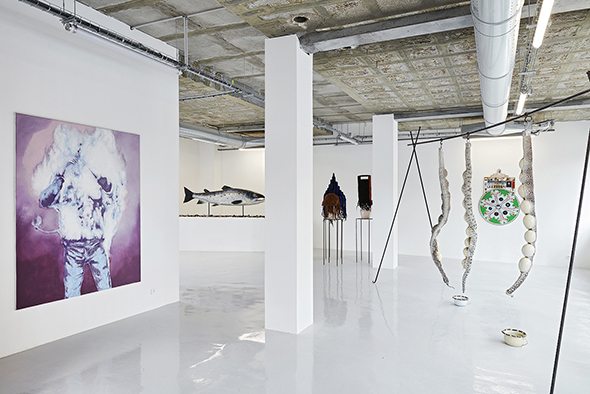
10.14.2019 - 11.01.2019
Renaud Auguste-Dormeuil, Patrick Corillon, Damien Deroubaix, Mark Dion, Gary Hill, Florence Paradeis, Bruno Perramant, Patrick Van Caeckenbergh, Joana Hadjithomas & Khalil Joreige, Patrick Tosani, Laurent Tixador, Martin Dammann, Meschac Gaba, Marcel Van Eeden, Otobong Nkanga, Vivien Roubaud, Lars Fredrikson / Estate, Constance Nouvel, Amir Nave, Ramin Haerizadeh, Rokni Haerizadeh, Hesam Rahmanian, Daniele Genadry, WE ARE THE PAINTERS
October 14th until December 1st. 2019
STOP - Collective exhibition of the artists represented by the Gallery -
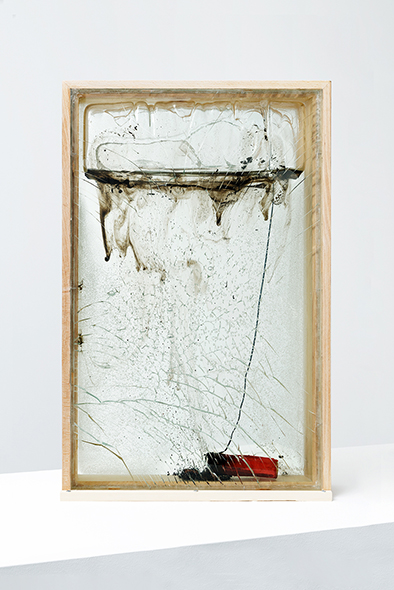
10.07.2019 - 11.17.2019
Vivien Roubaud
Voltaire
Vivien Roubaud - 2019, 5e ANNIVERSAIRE DE LA BOURSE RÉVÉLATIONS EMERIGE -
10.05.2019 - 10.05.2019
Vivien Roubaud
Paris - Place de la Concorde
Vivien Roubaud - Nuit Blanche - 18ème édition -
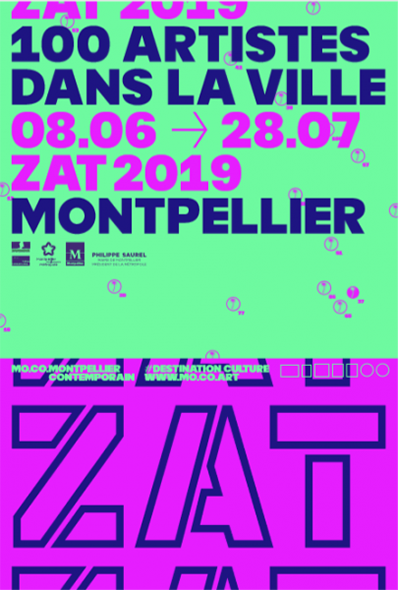
06.08.2019 - 07.28.2019
Laurent Tixador, Vivien Roubaud
MO.CO Montpellier
Laurent Tixador / Vivien Roubaud - 100 artistes dans la ville - ZAT 2019 -
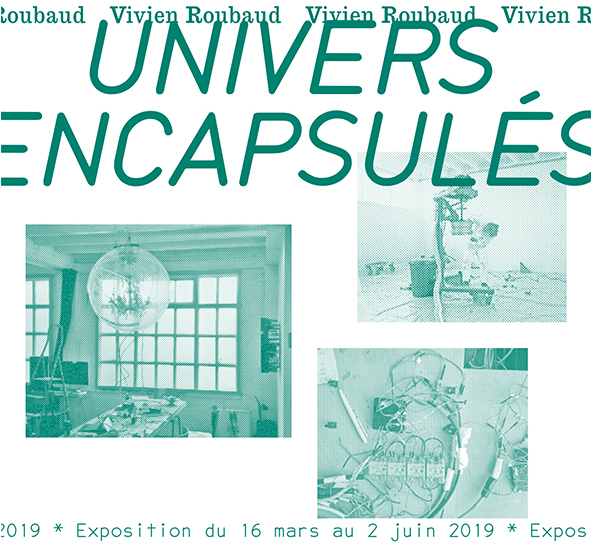
03.15.2019 - 06.02.2019
Vivien Roubaud
Le Creux de l'Enfer
Vivien Roubaud - Univers encapsulés -
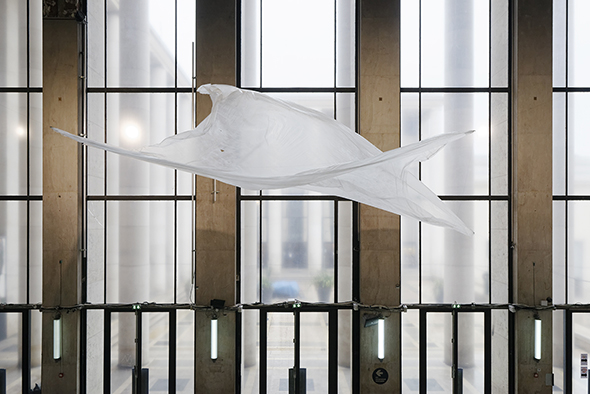
01.19.2019 - 03.23.2019
Vivien Roubaud
Micro Onde, Centre d'art de l'Onde
Vivien Roubaud : Vide secondaire -
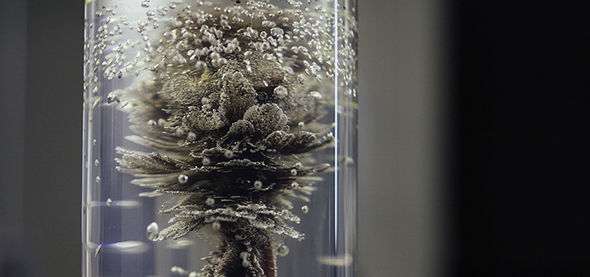
11.01.2018 - 11.04.2018
Vivien Roubaud
Galerie du Beffroi
Vivien Roubaud - KIKK Festival -
09.06.2018 - 12.12.2018
Vivien Roubaud
Gyeongnam Art Museum
Livro Do Desassossego -
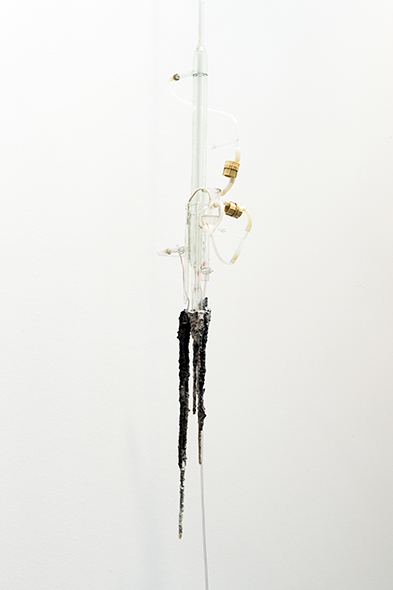
06.09.2018 - 09.16.2018
Otobong Nkanga, Vivien Roubaud
Cosmogonies, au gré des éléments -
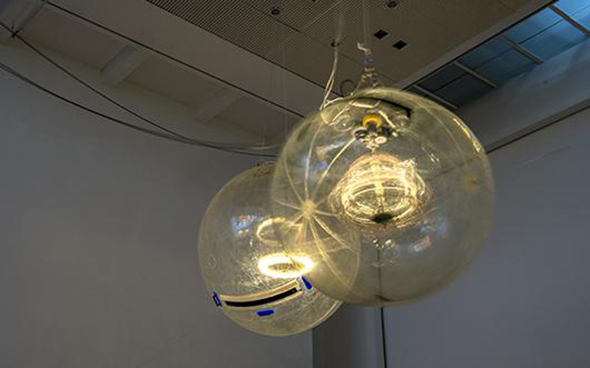
12.14.2017 - 03.04.2018
Vivien Roubaud
FRAC Occitanie - Toulouse
Les Abbatoirs - New aquisitions -
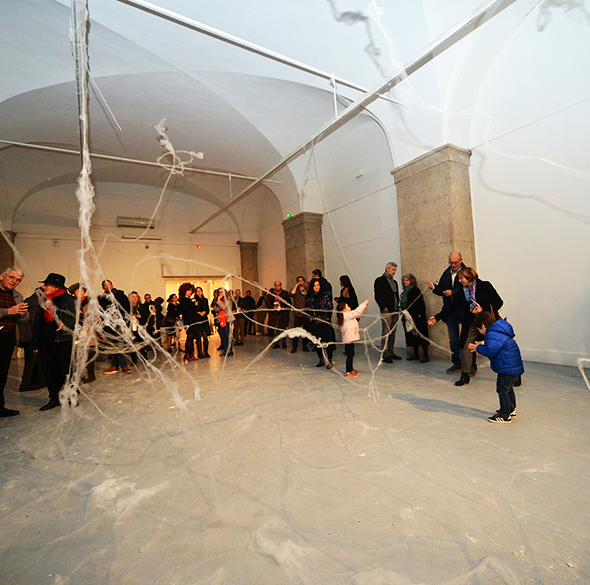
12.09.2017 - 03.04.2018
Vivien Roubaud
Centquatre - Paris
Les Faits du hasard -
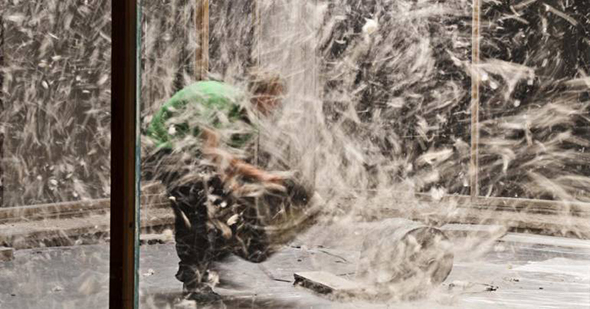
02.11.2017 - 05.28.2017
Vivien Roubaud
-
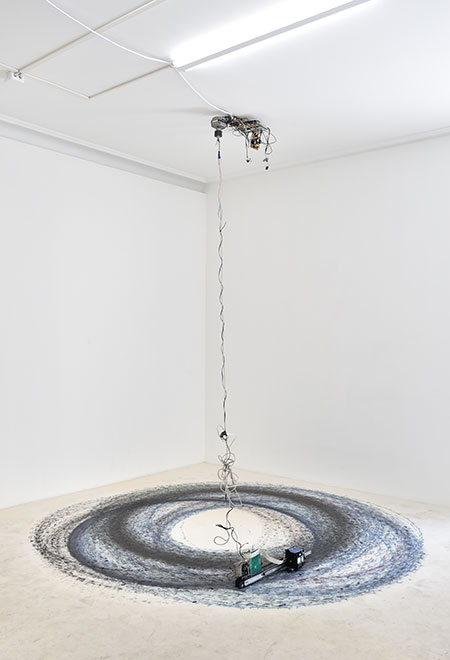
03.05.2016 - 01.15.2017
Vivien Roubaud
-
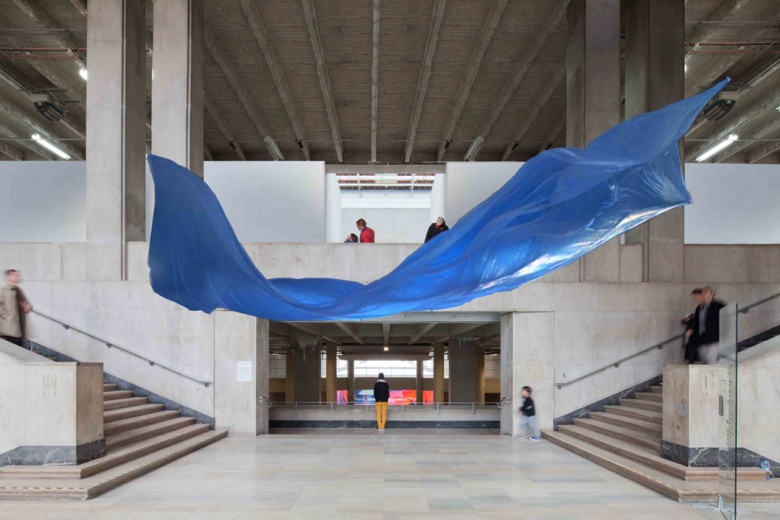
02.18.2016 - 09.11.2016
Vivien Roubaud
Palais de Tokyo
Oeuvres in situ / Anémochories -
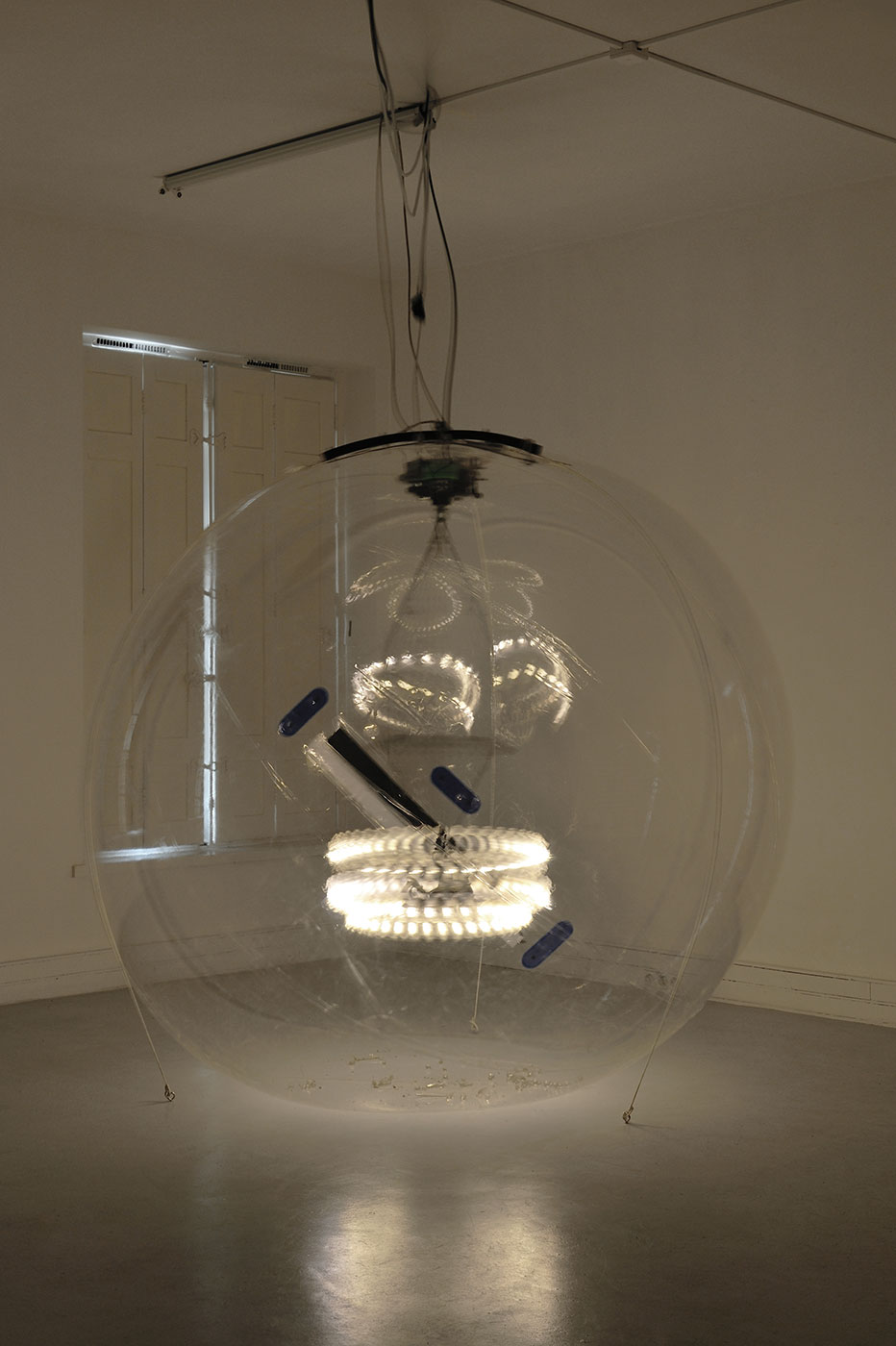
12.11.2015 - 01.20.2016
Vivien Roubaud
Beneath the Moon -
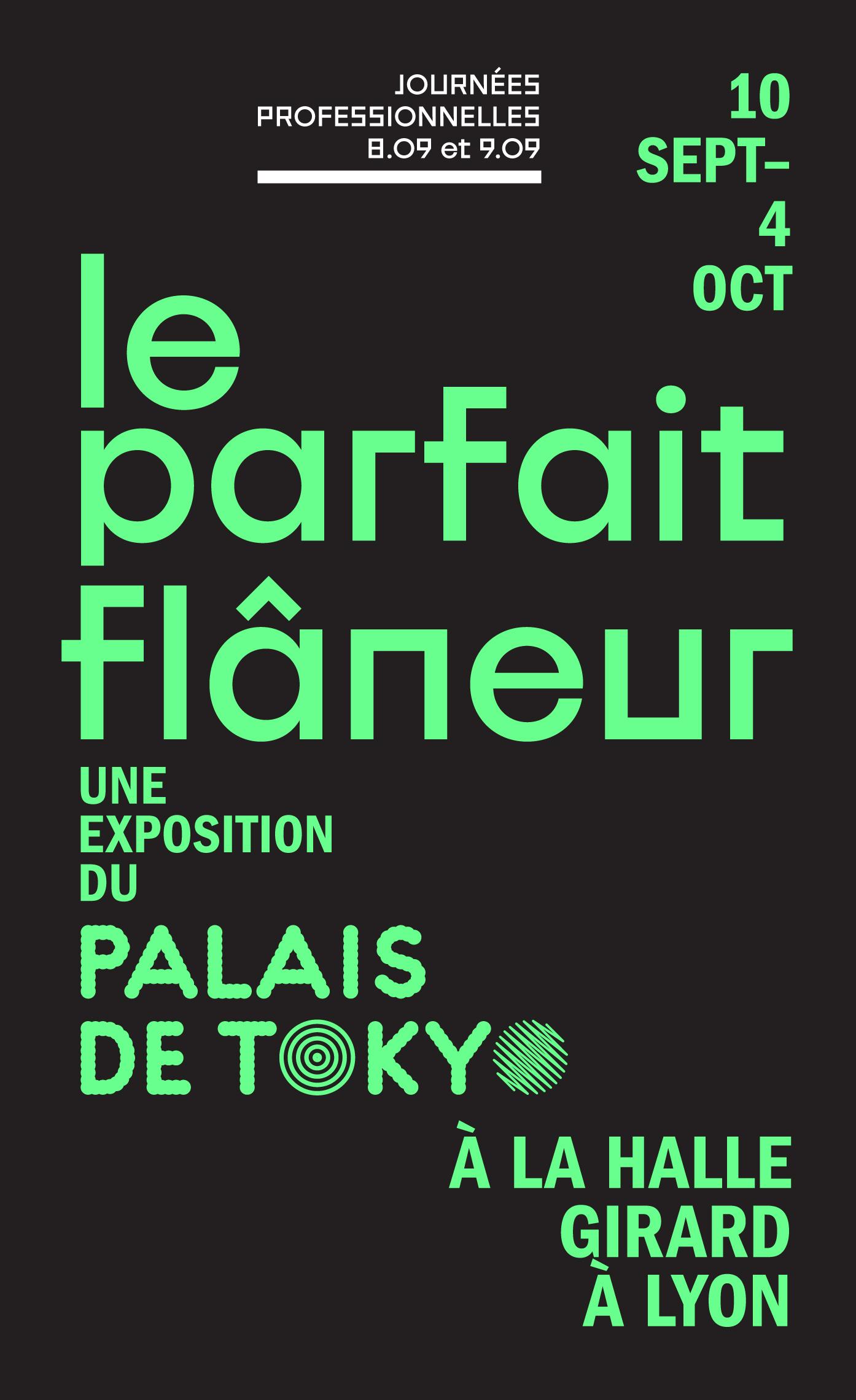
09.08.2015 - 10.04.2015
Vivien Roubaud
La parfait flâneur
